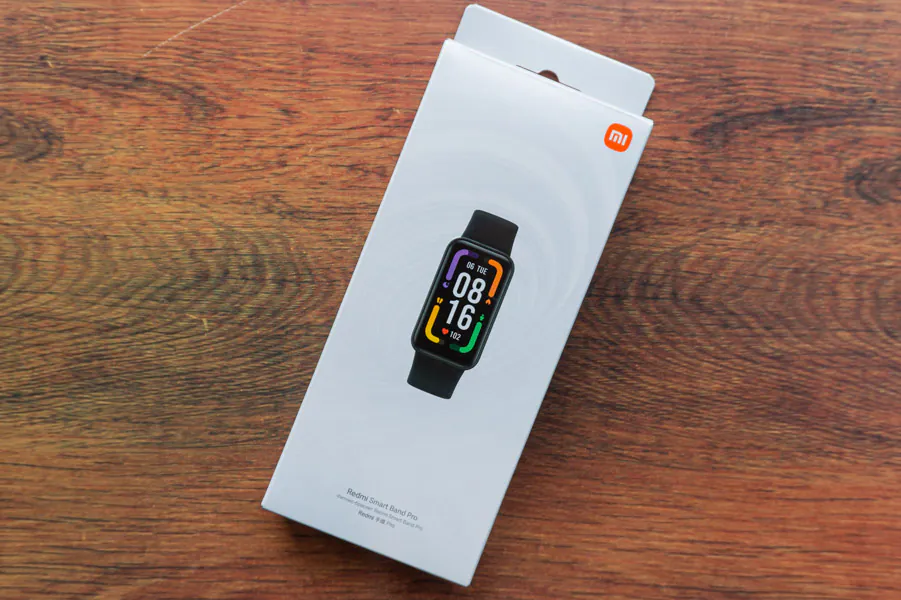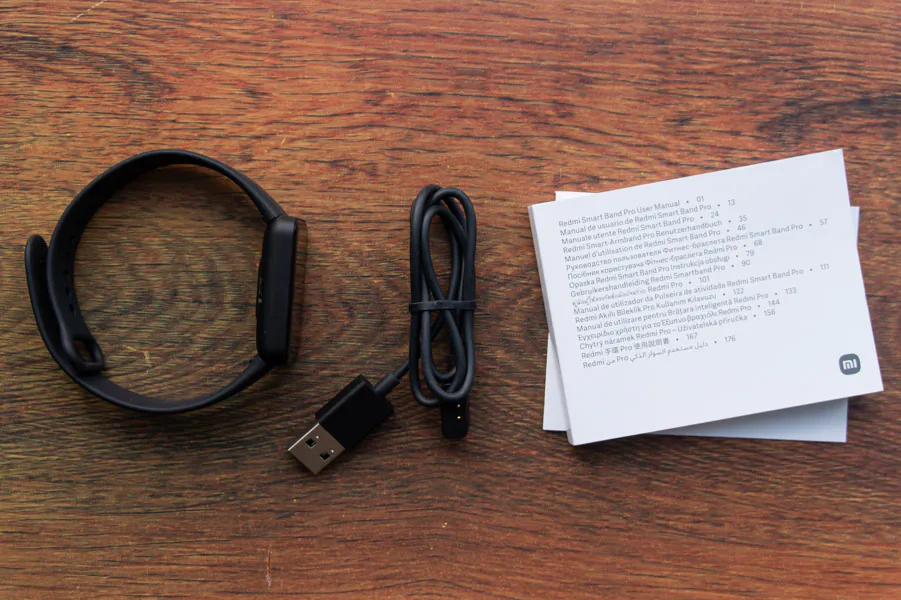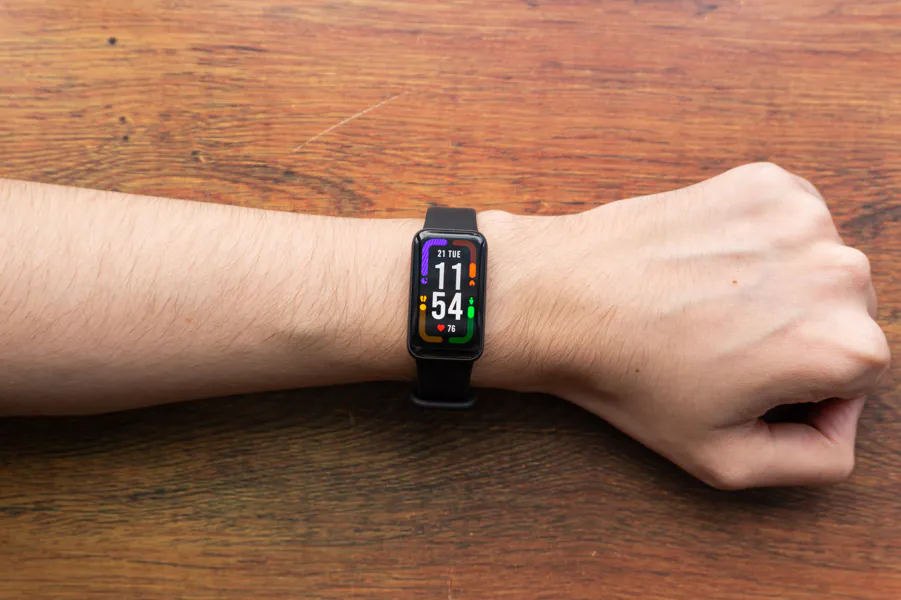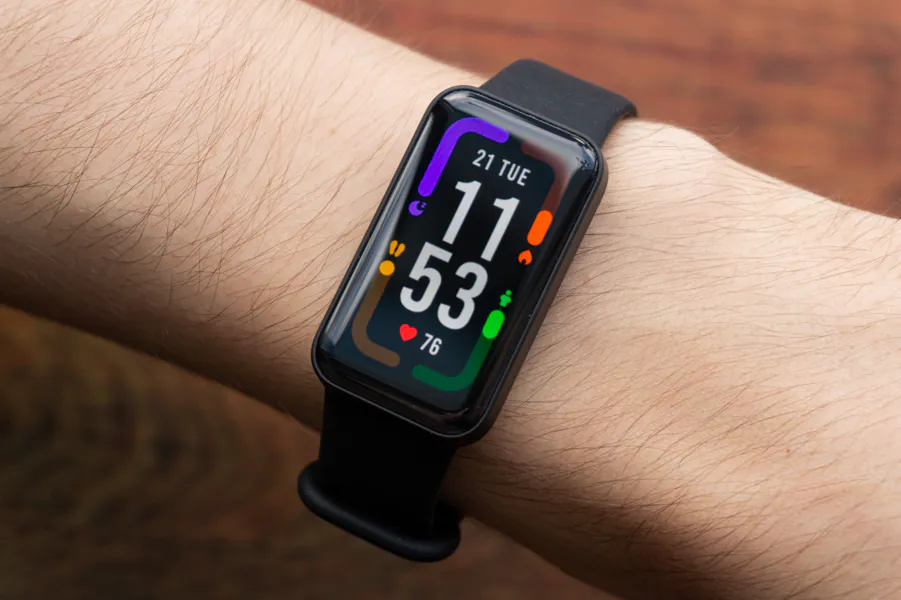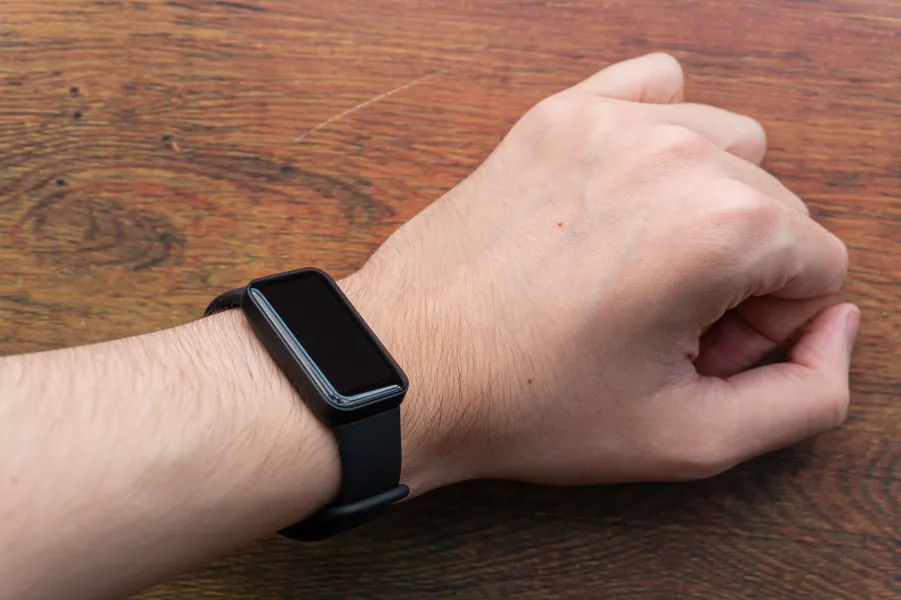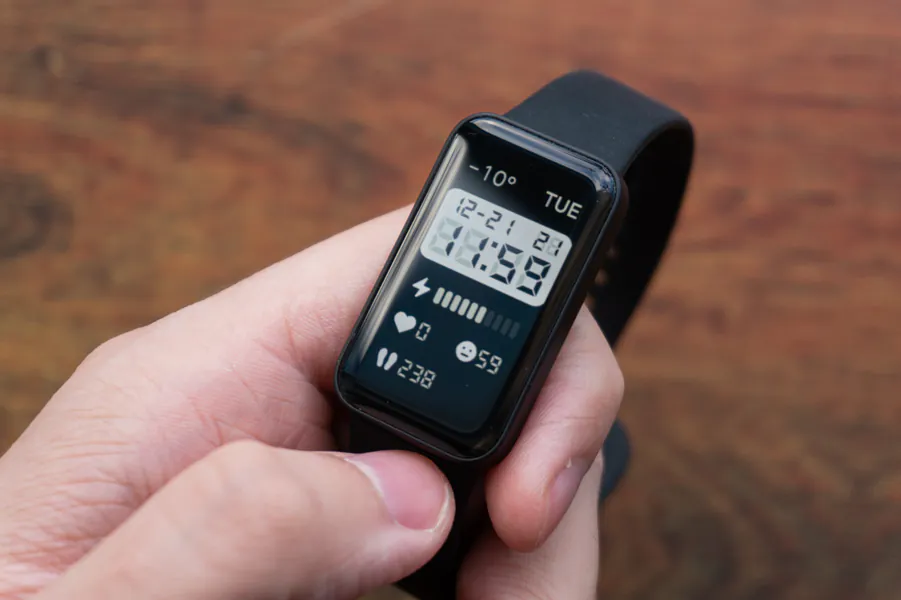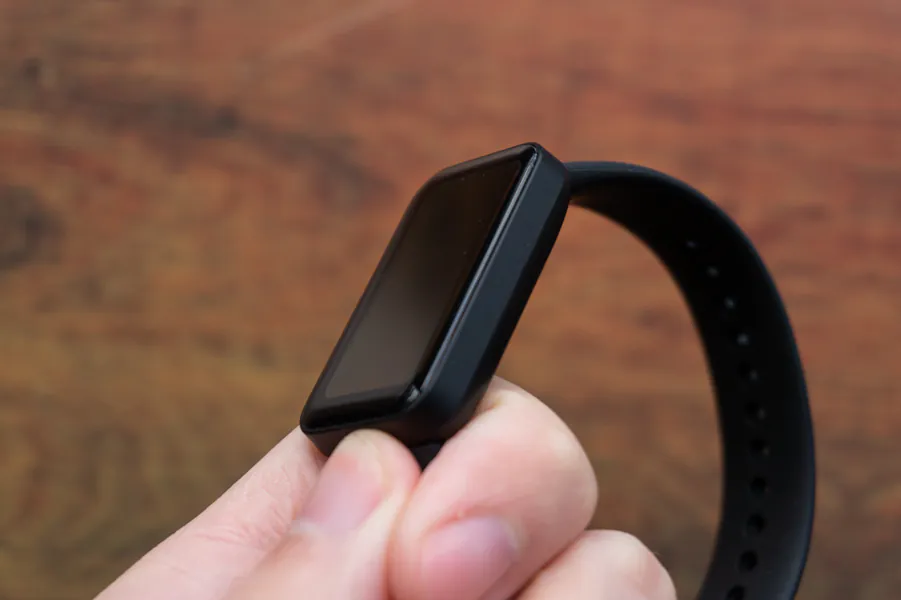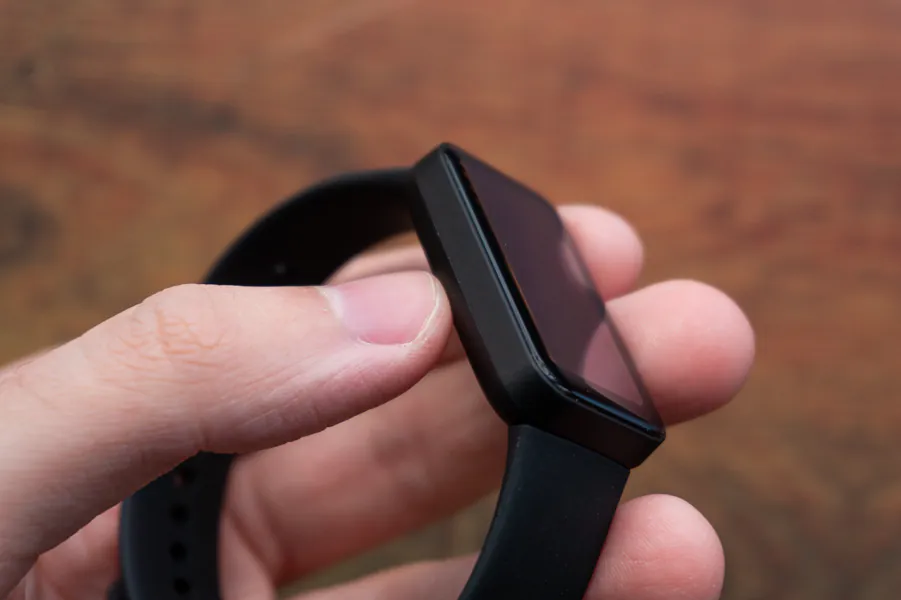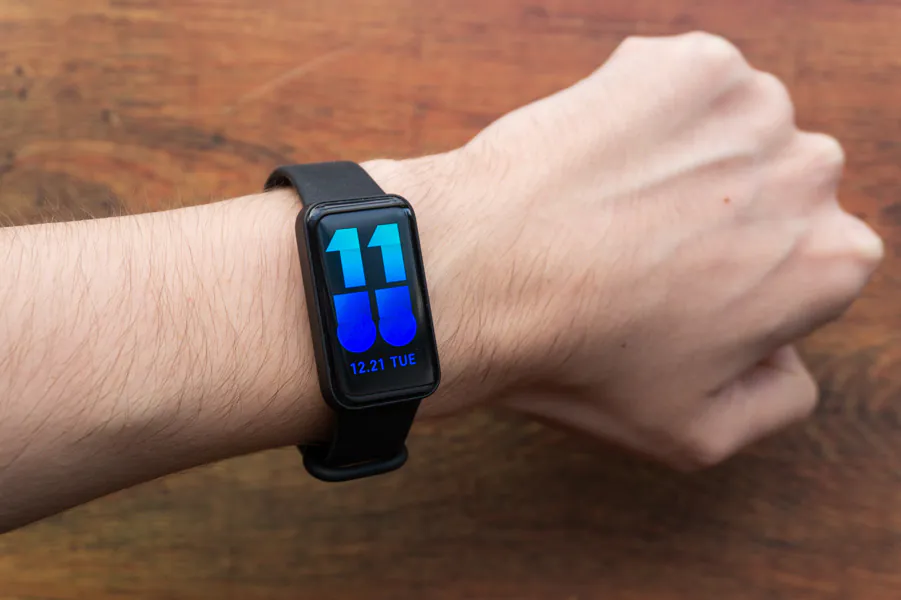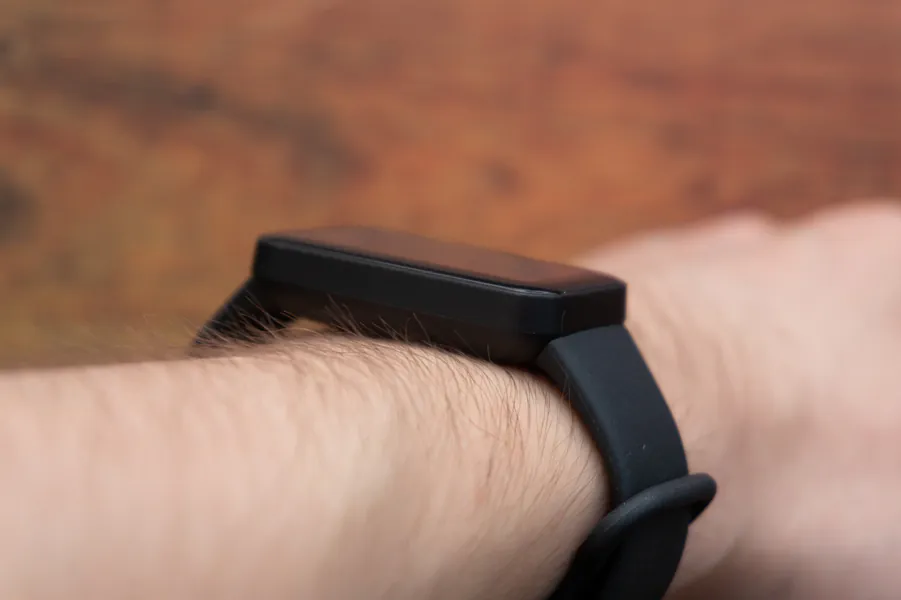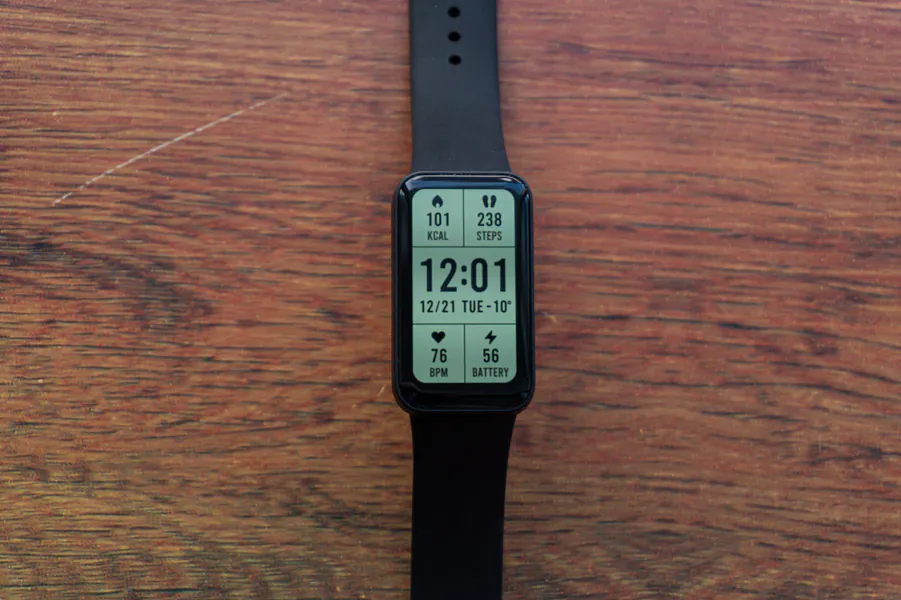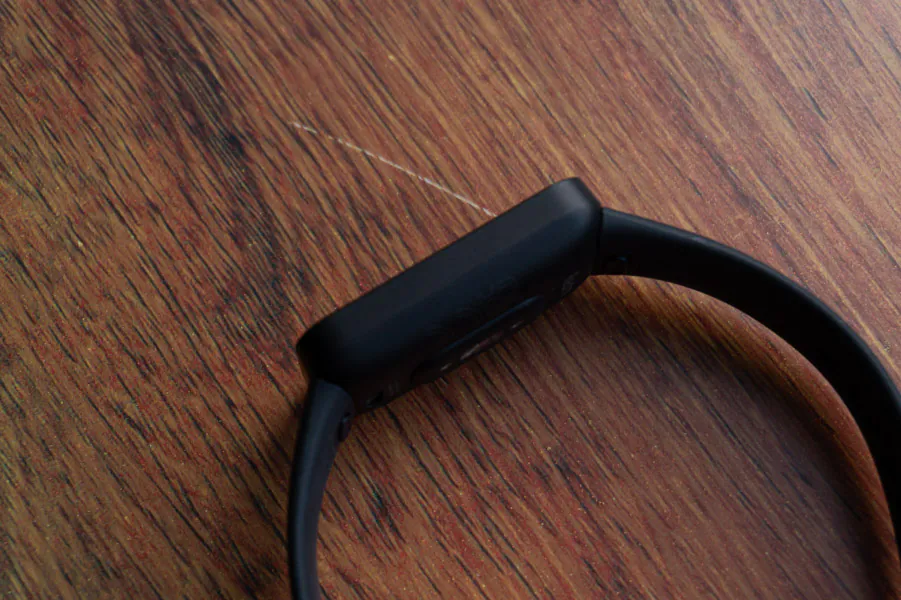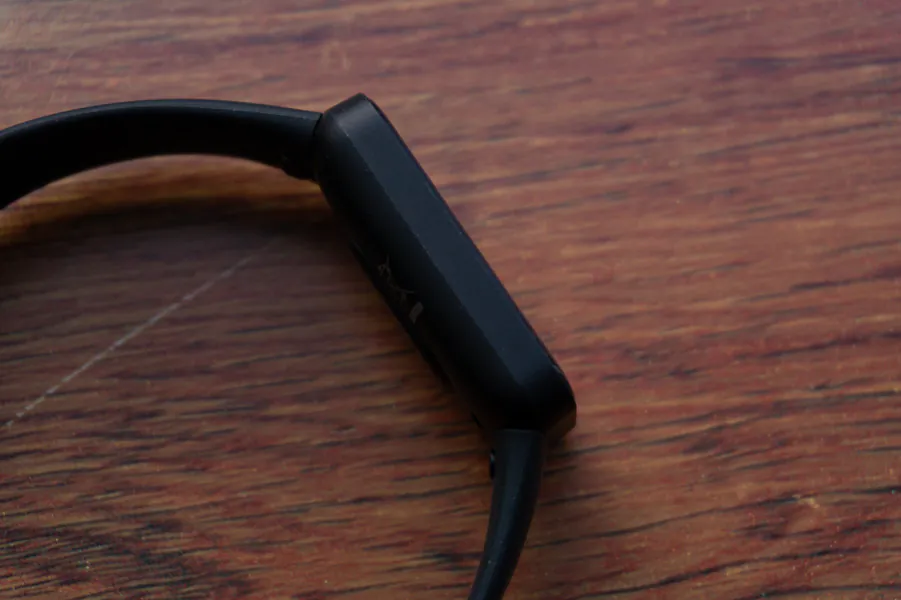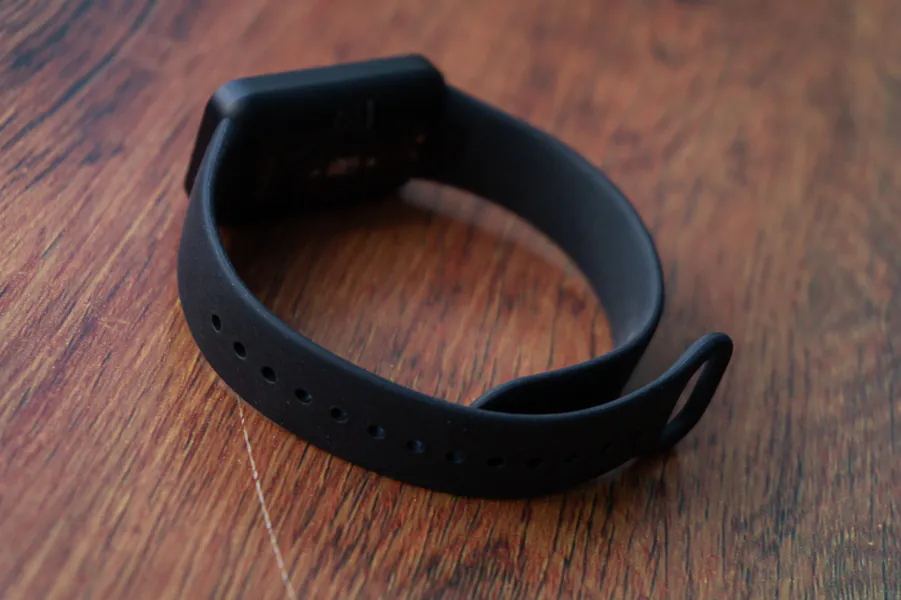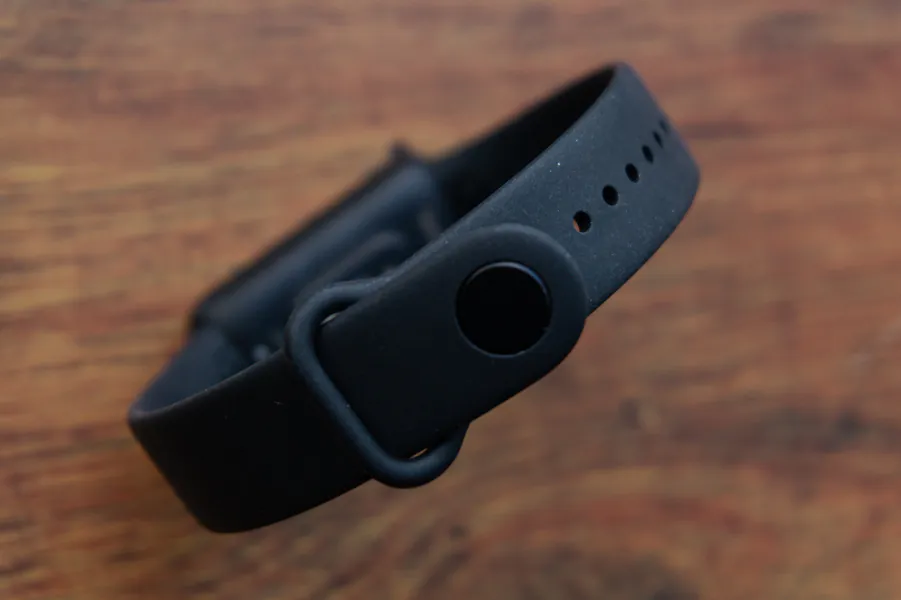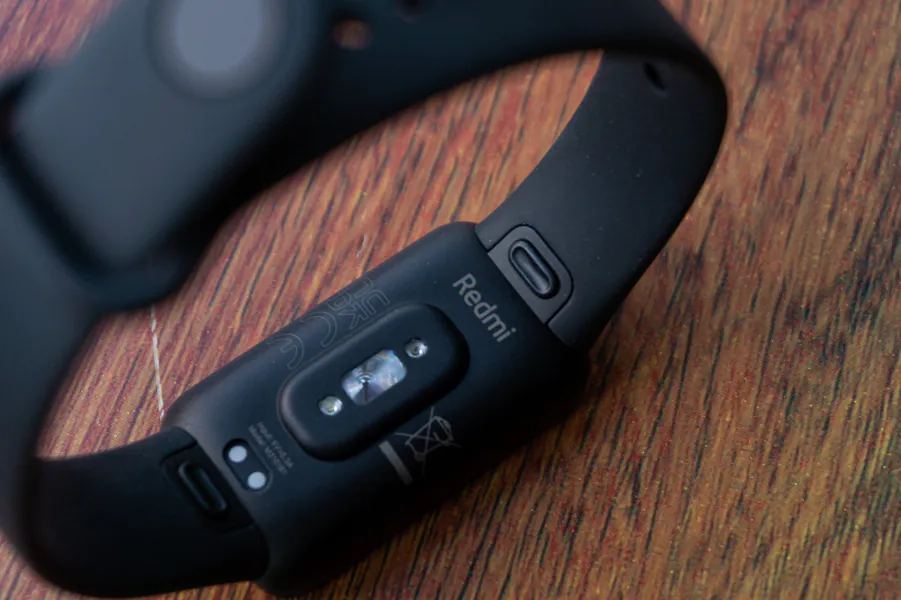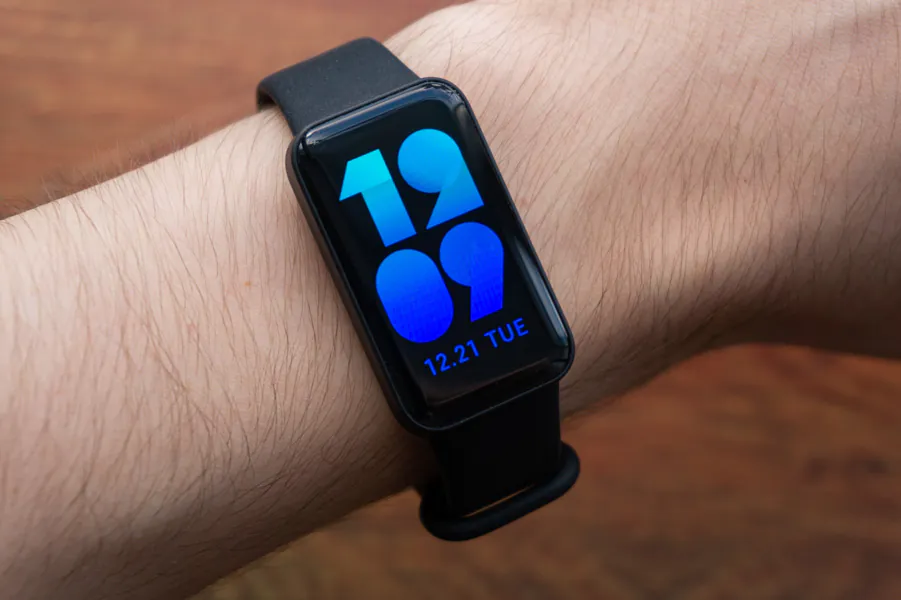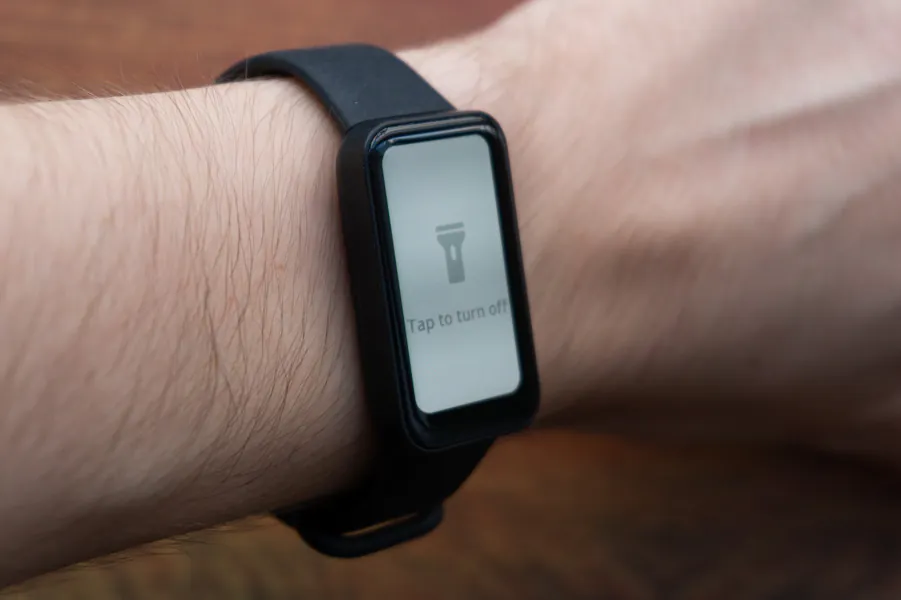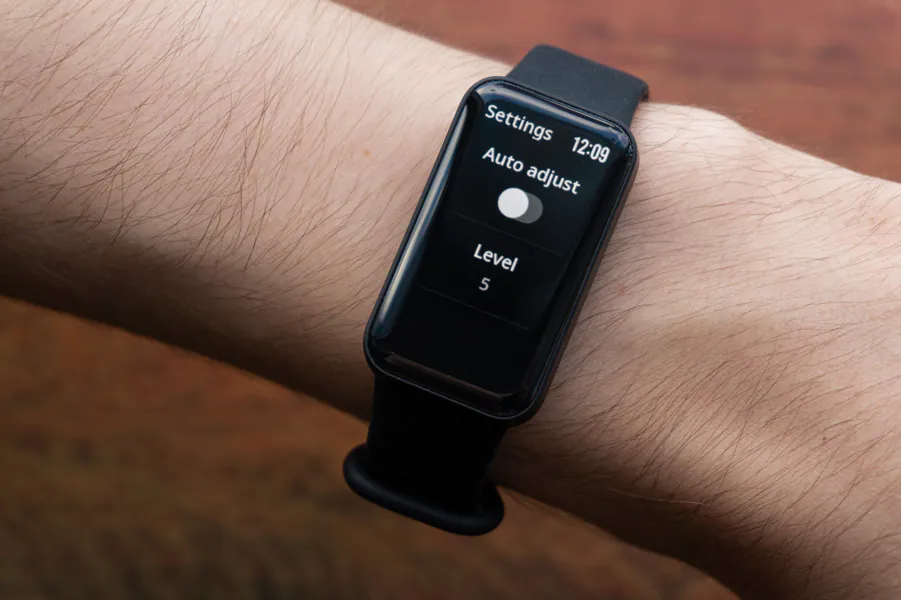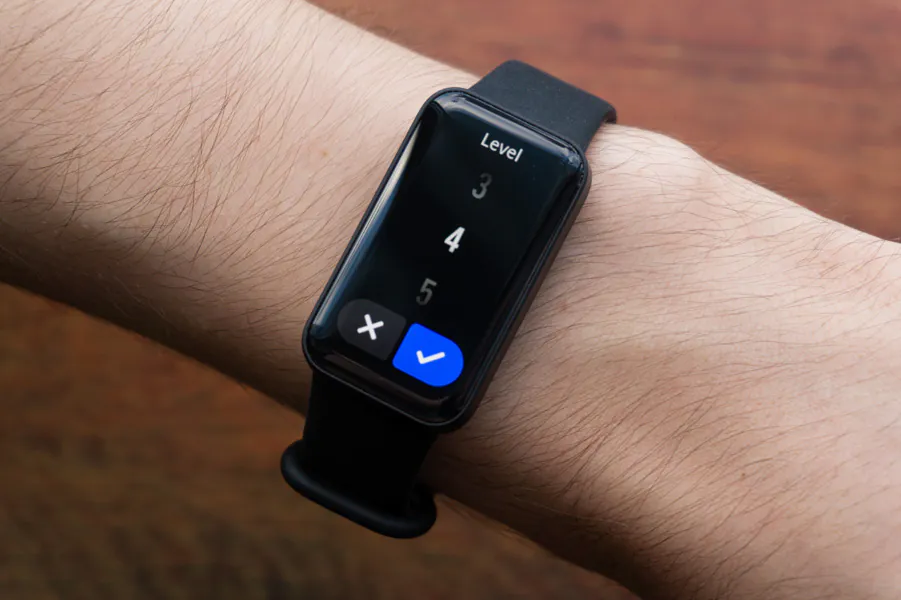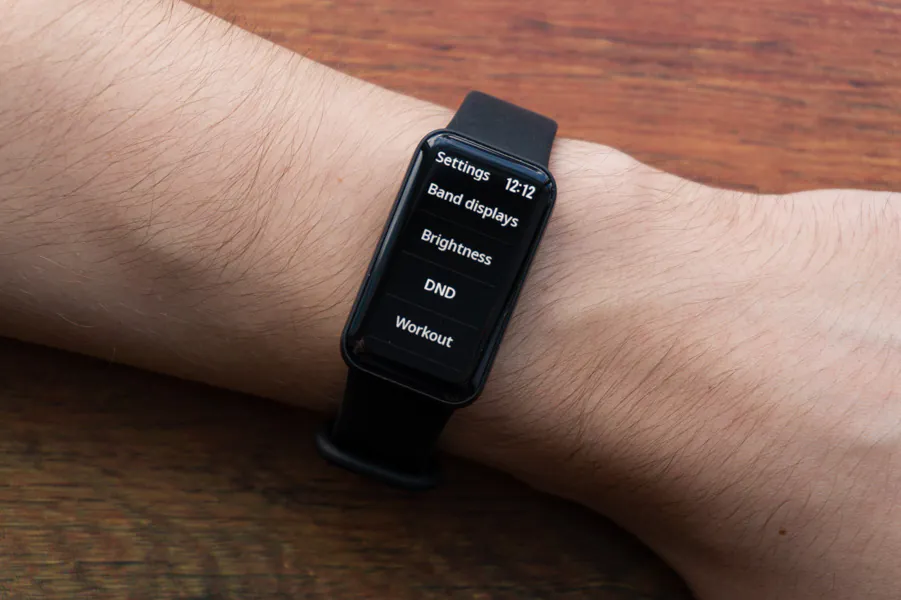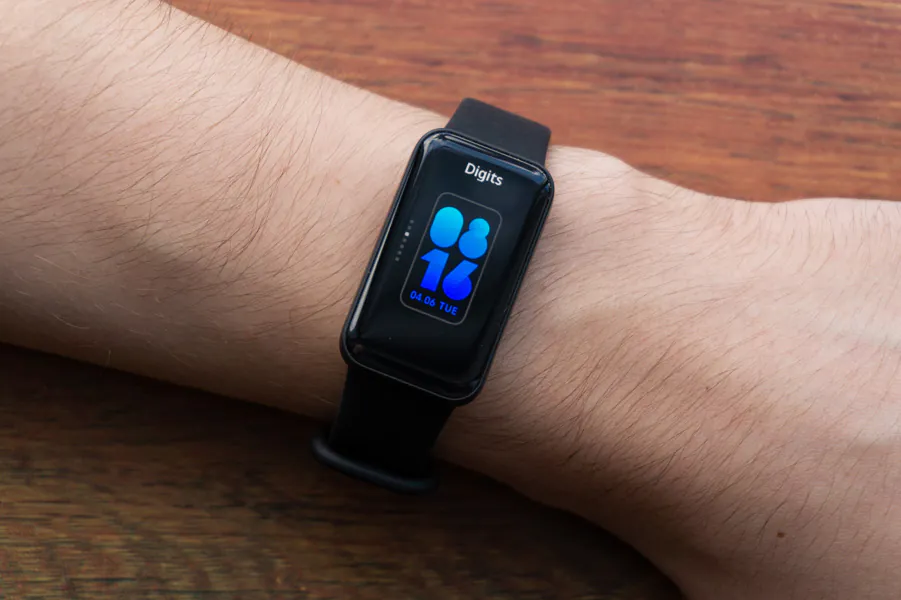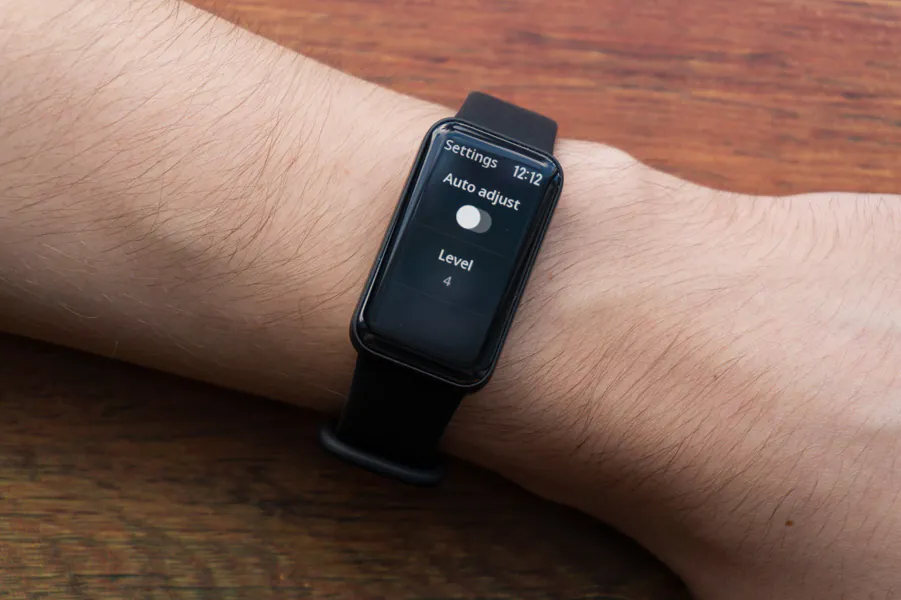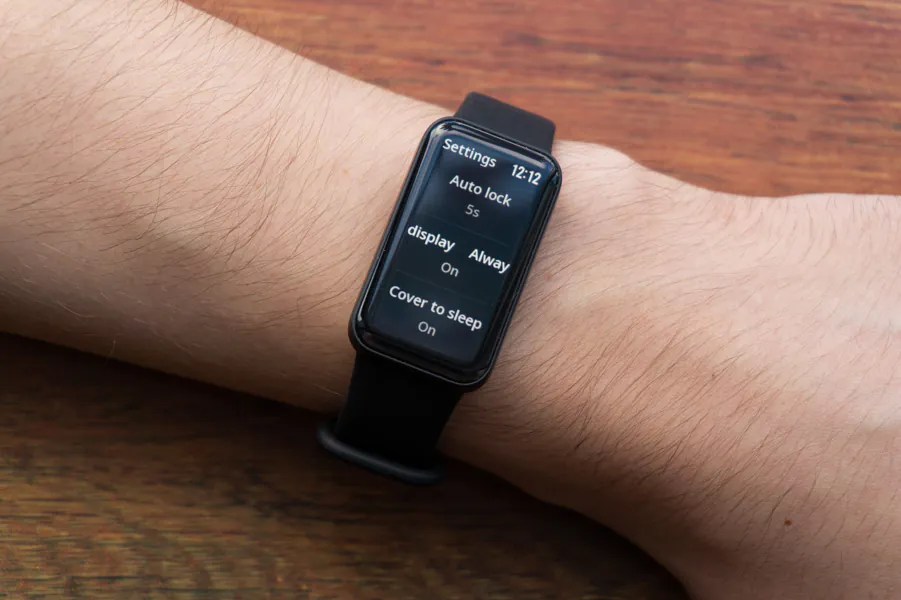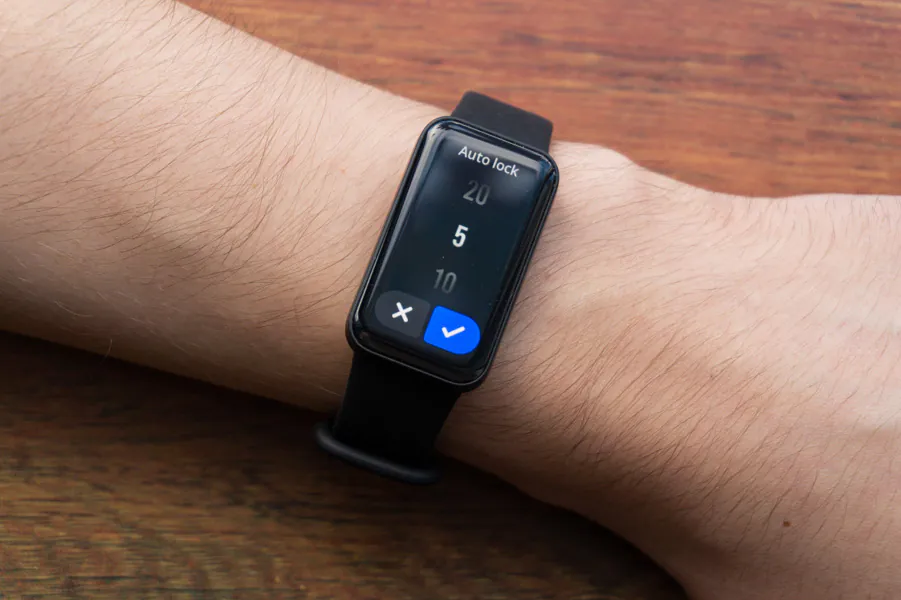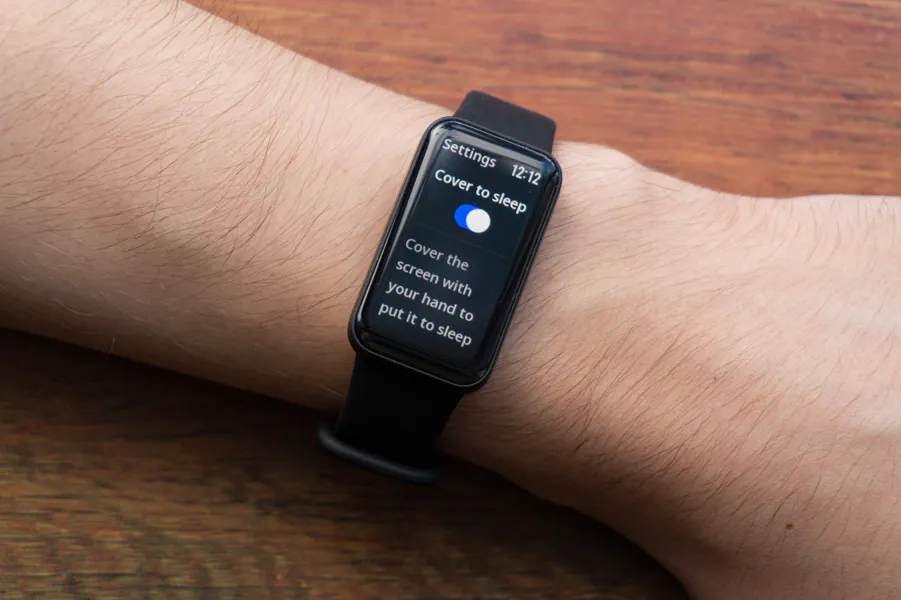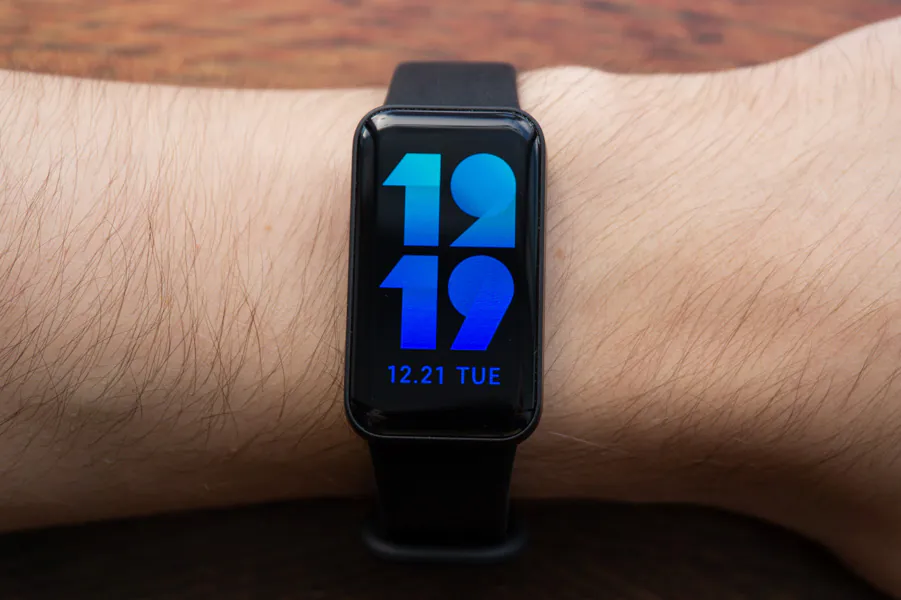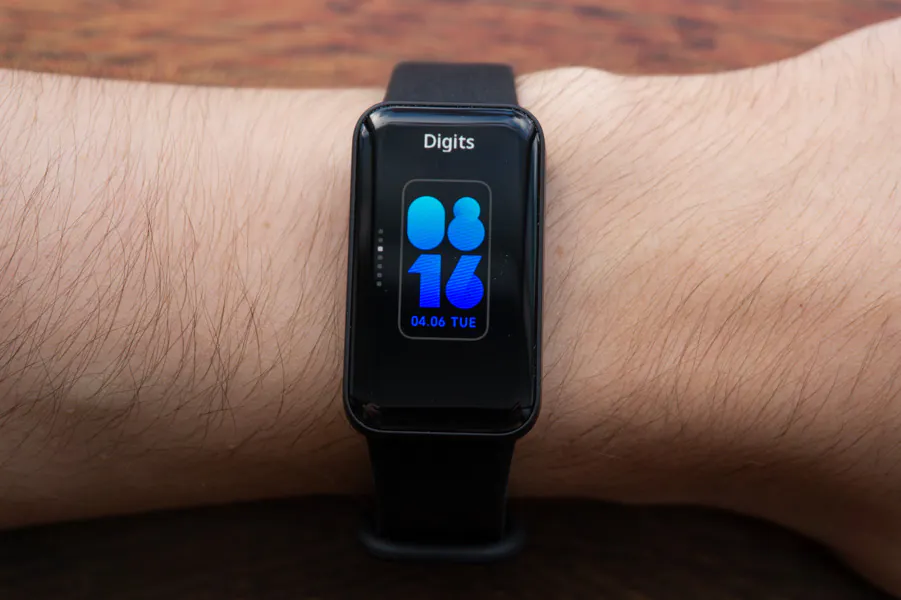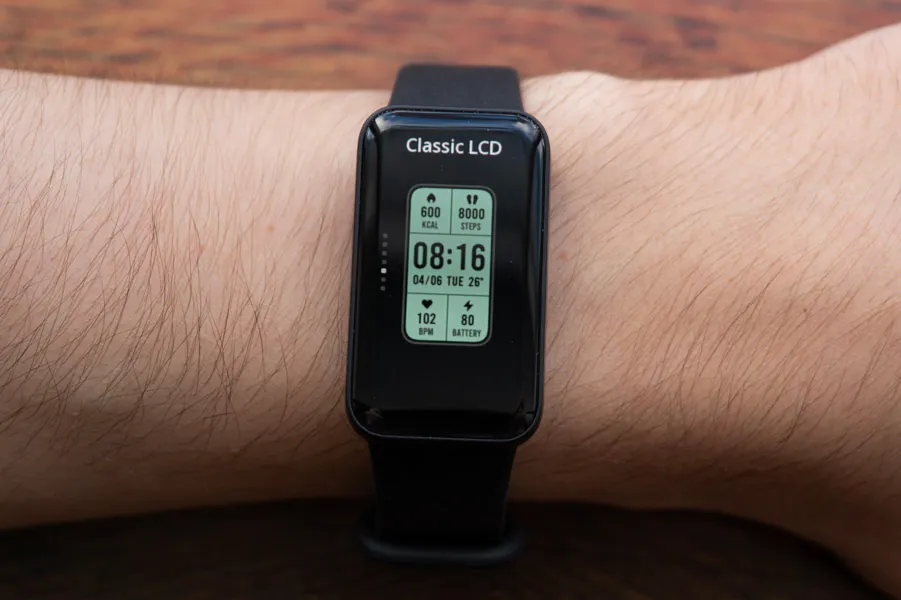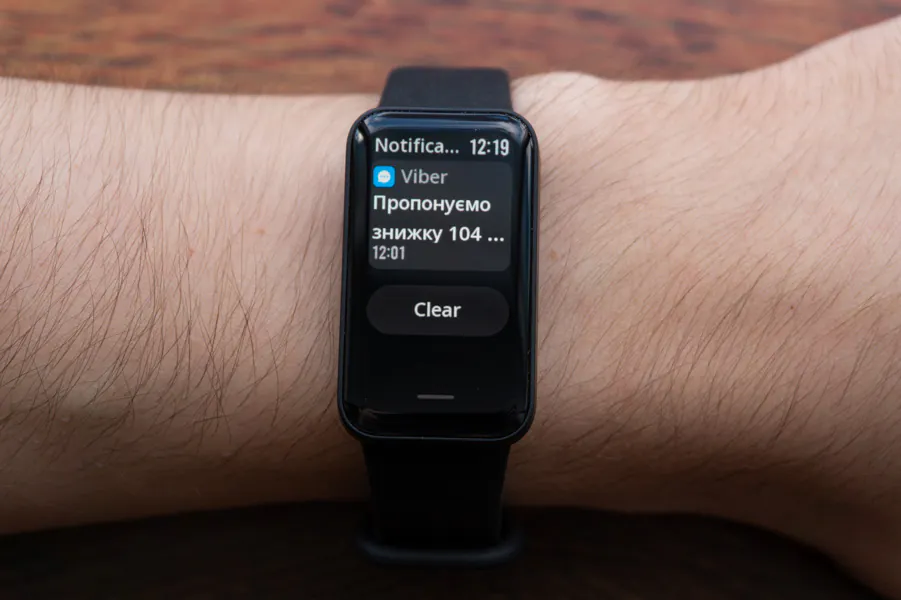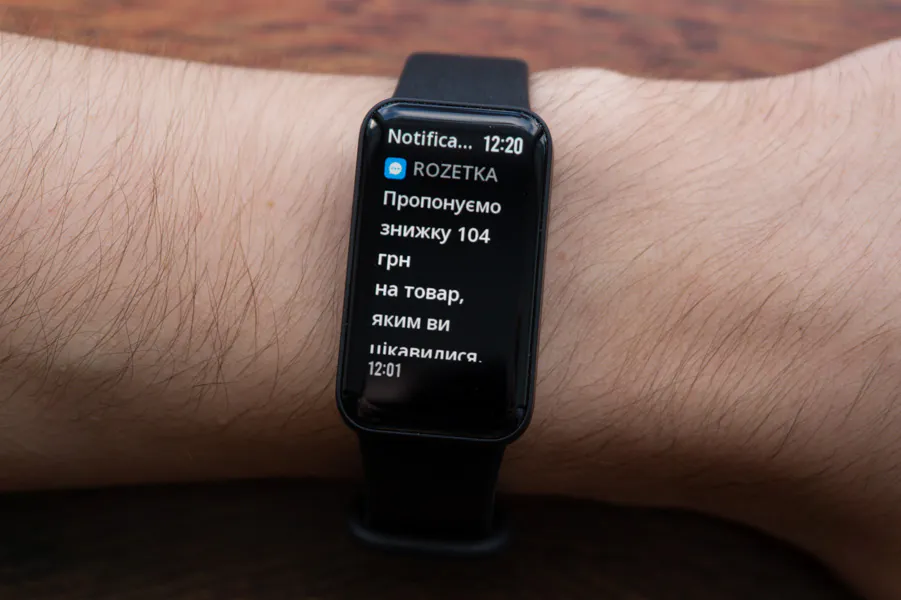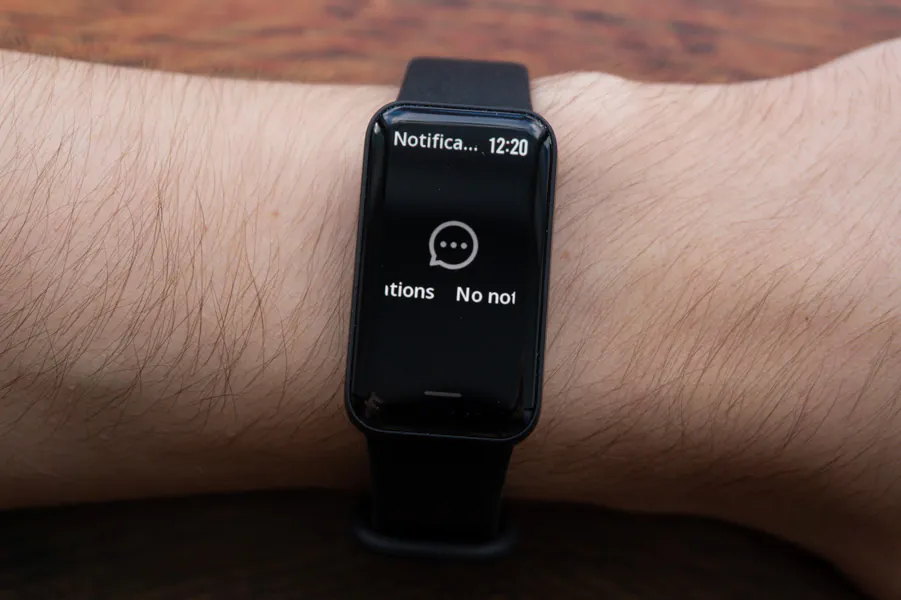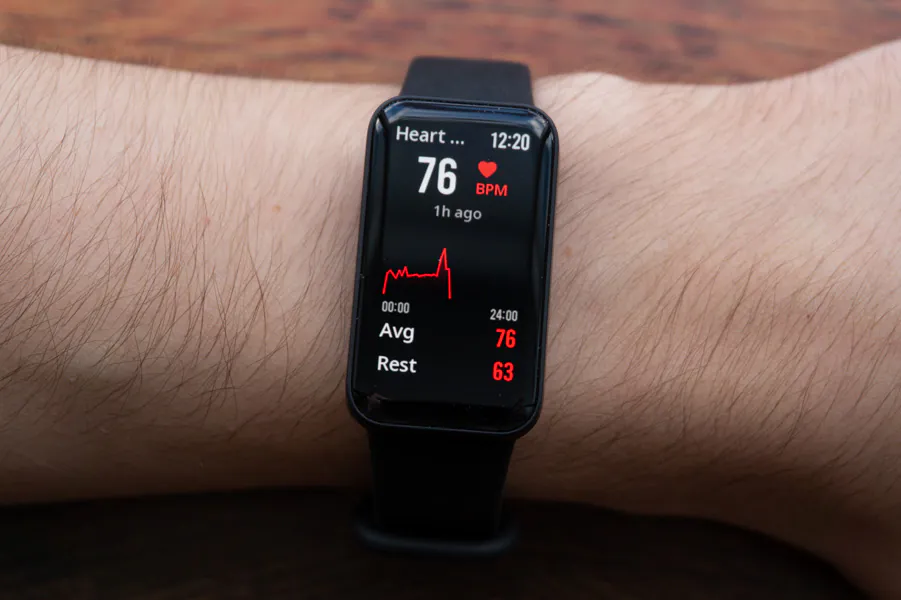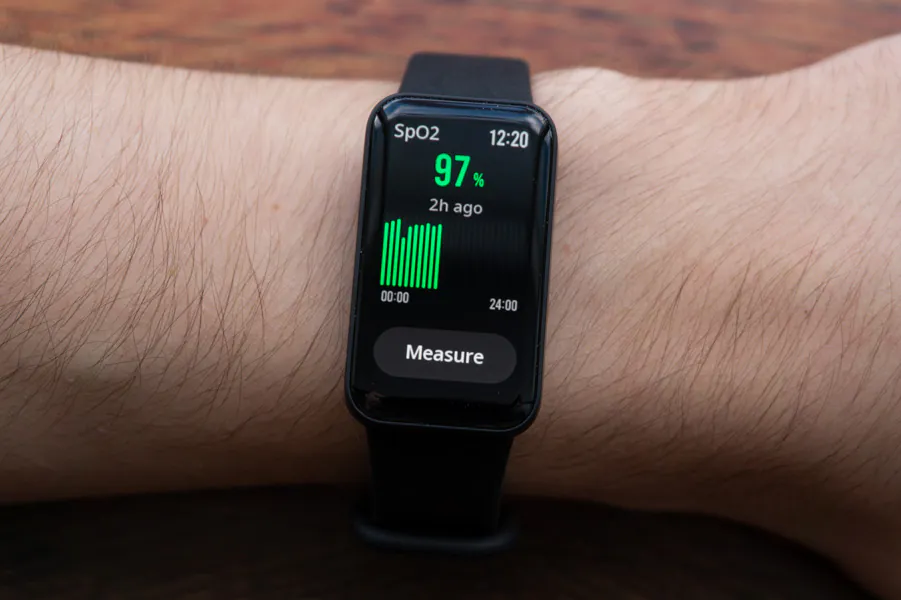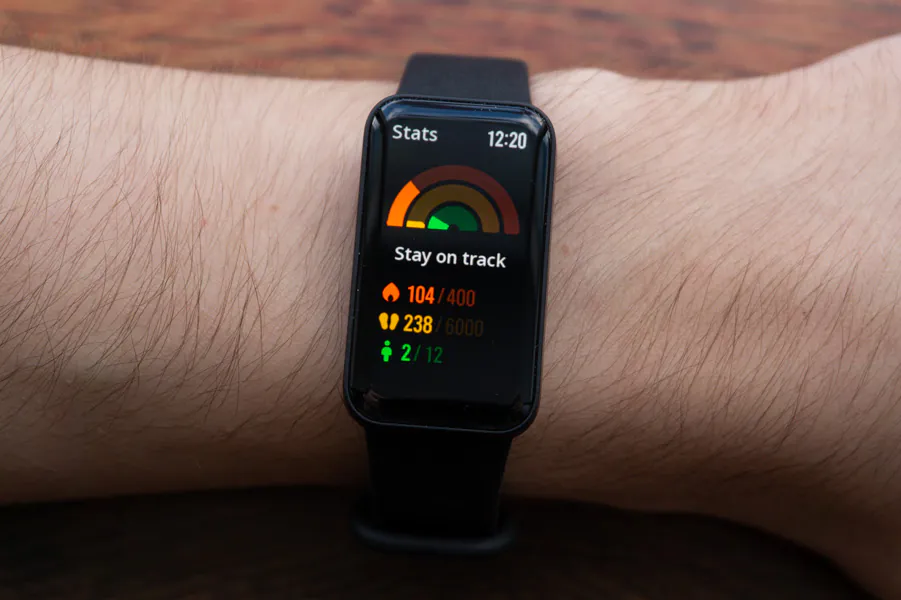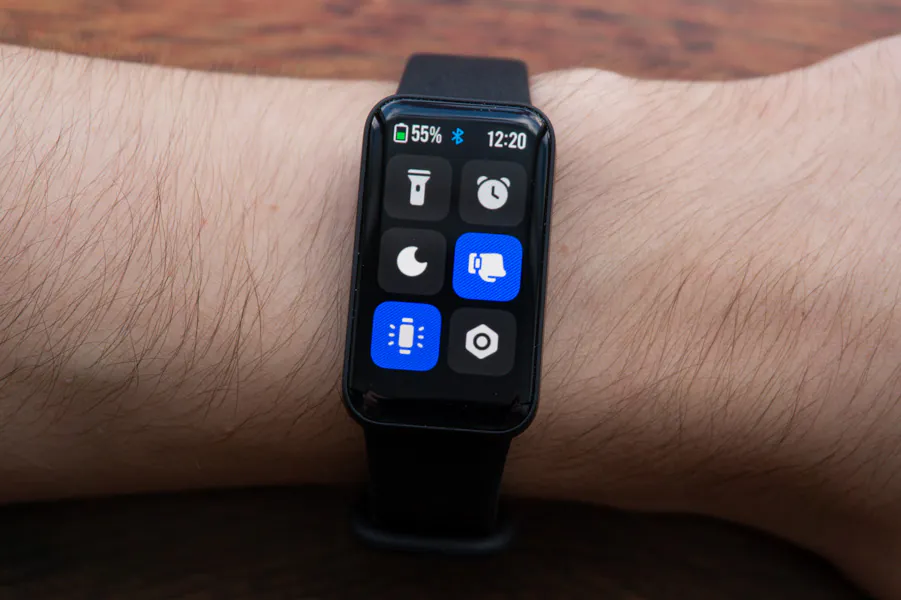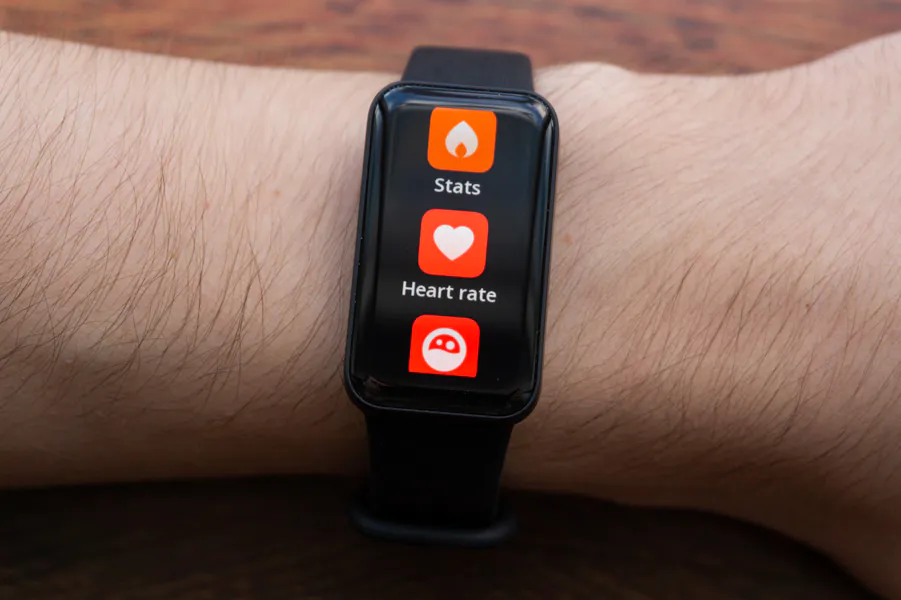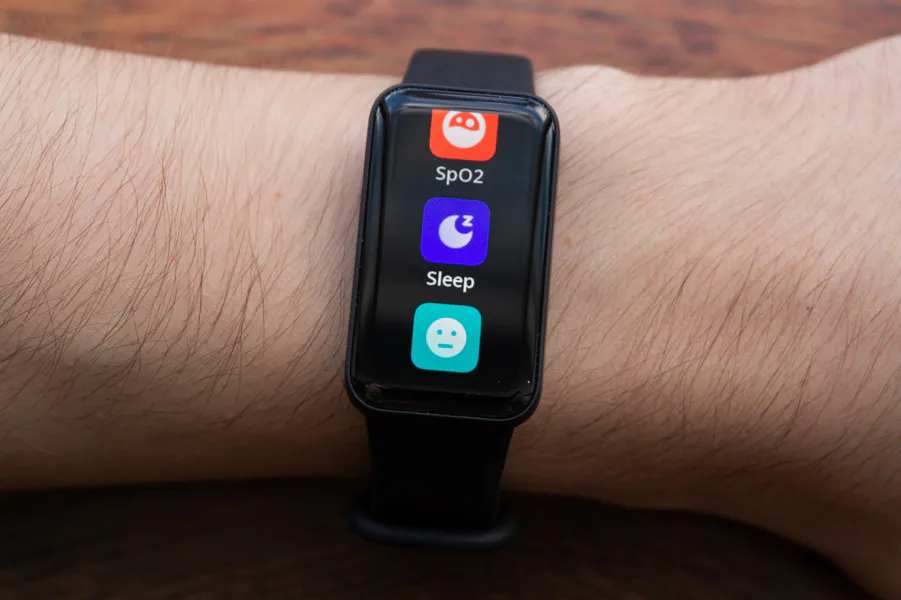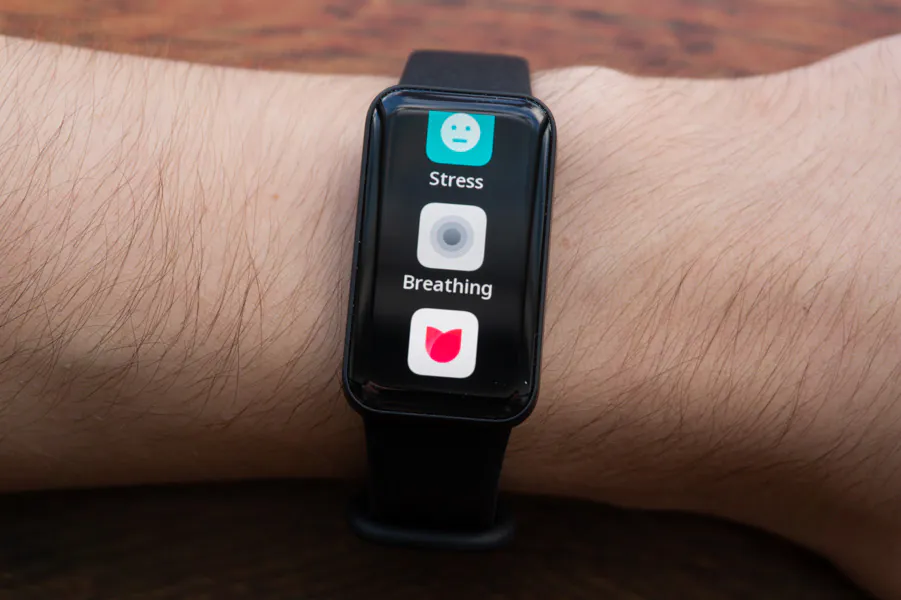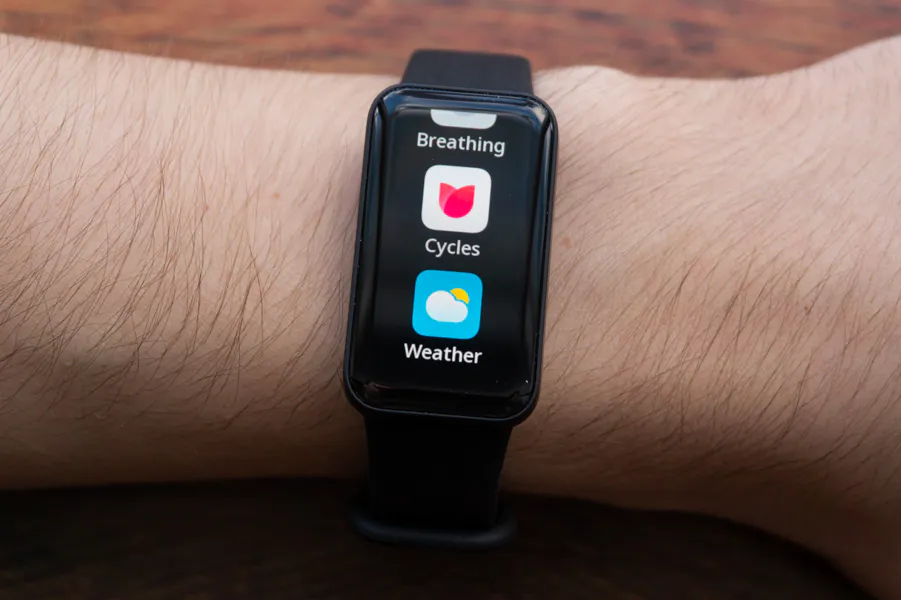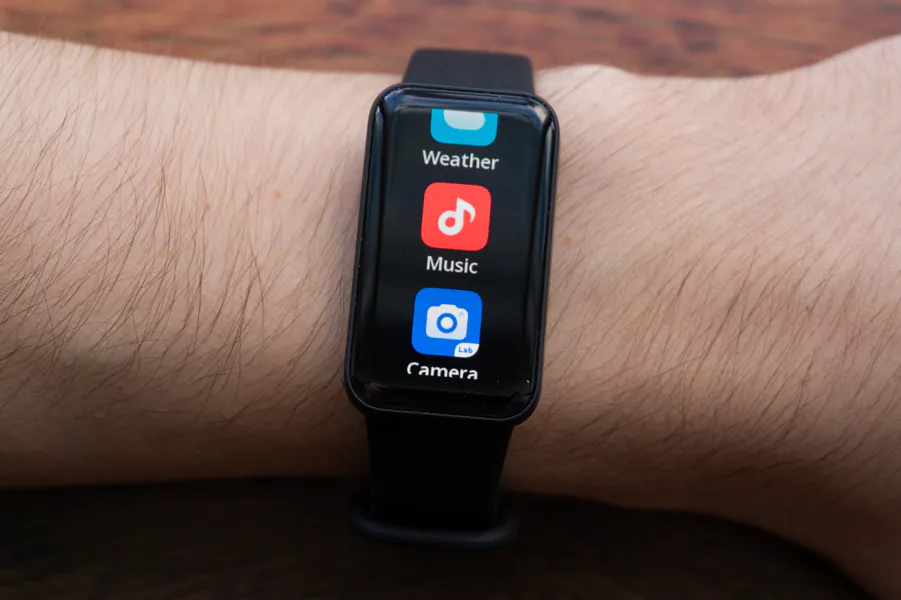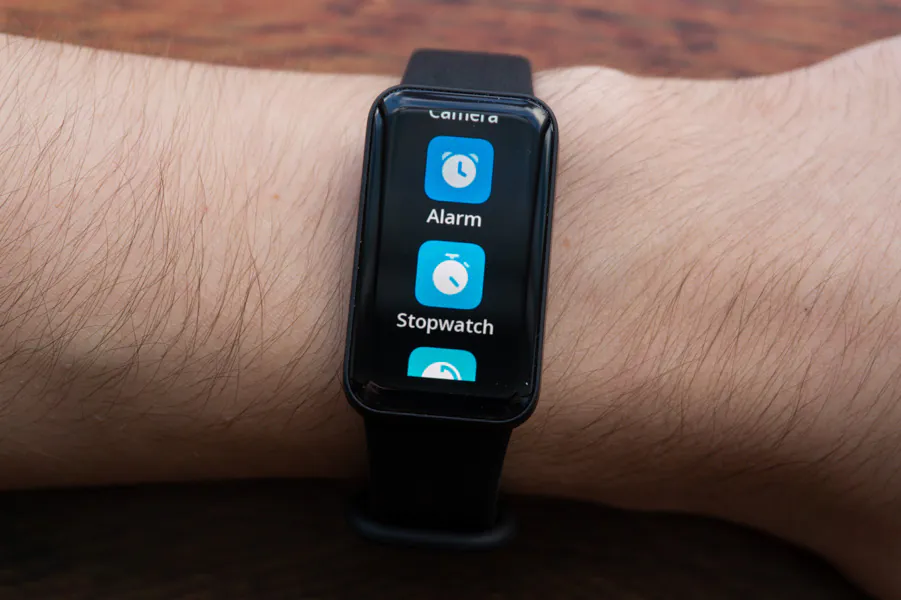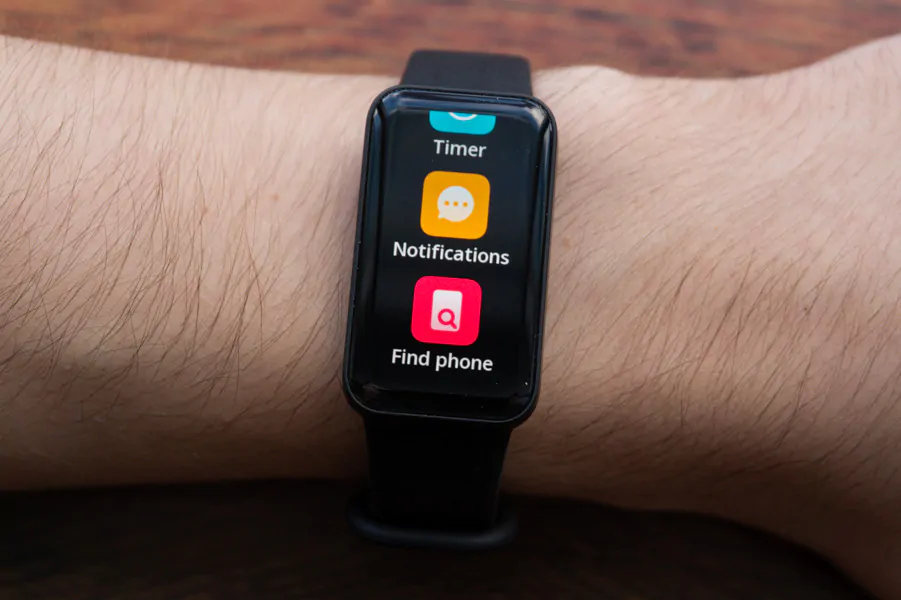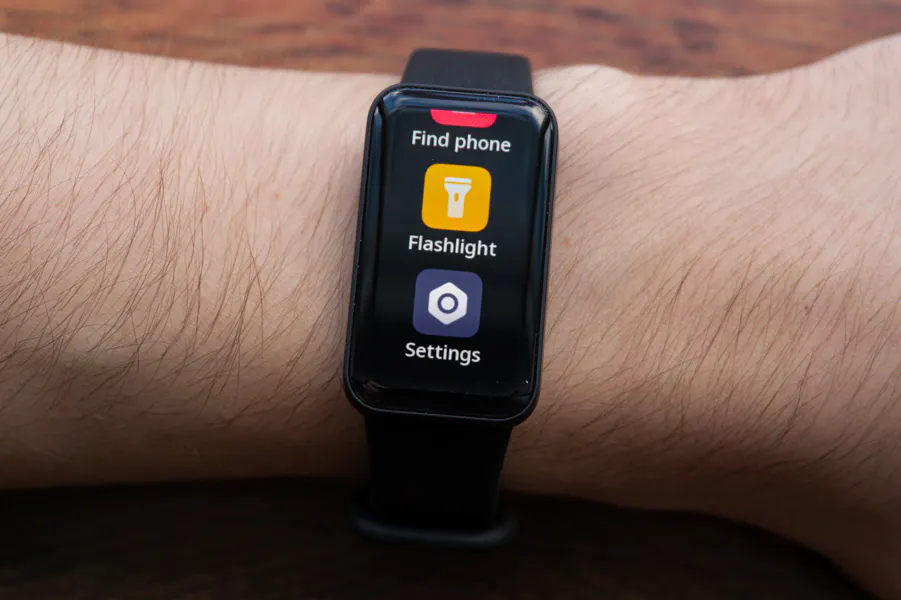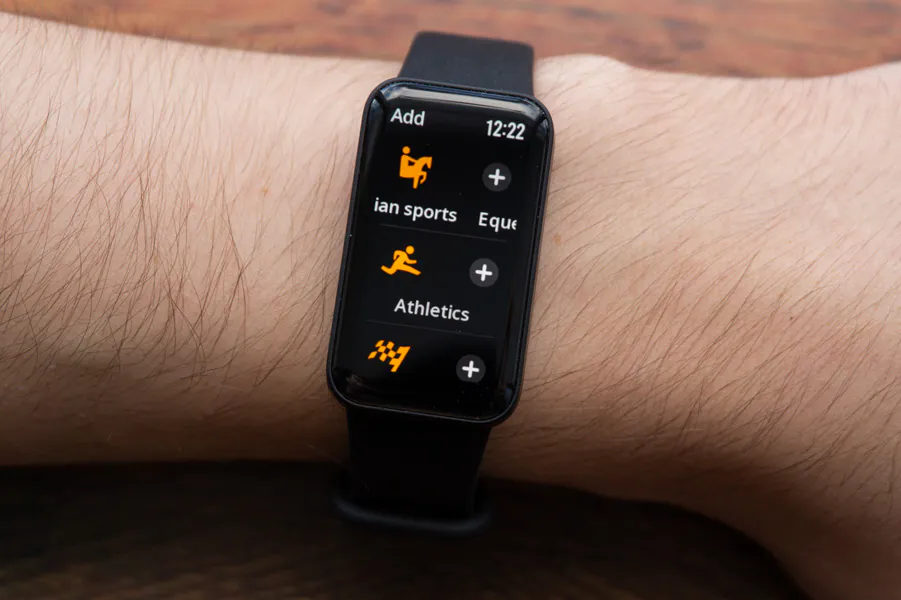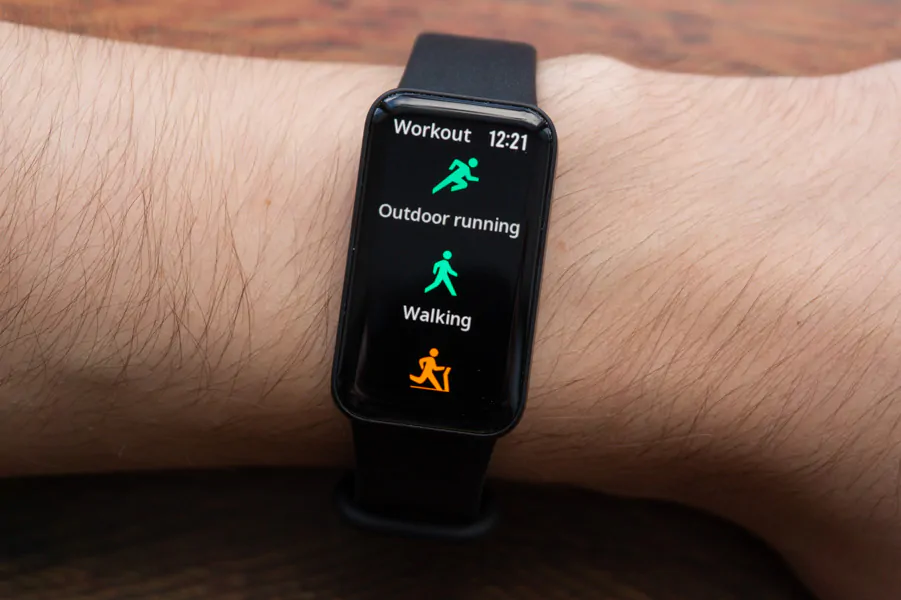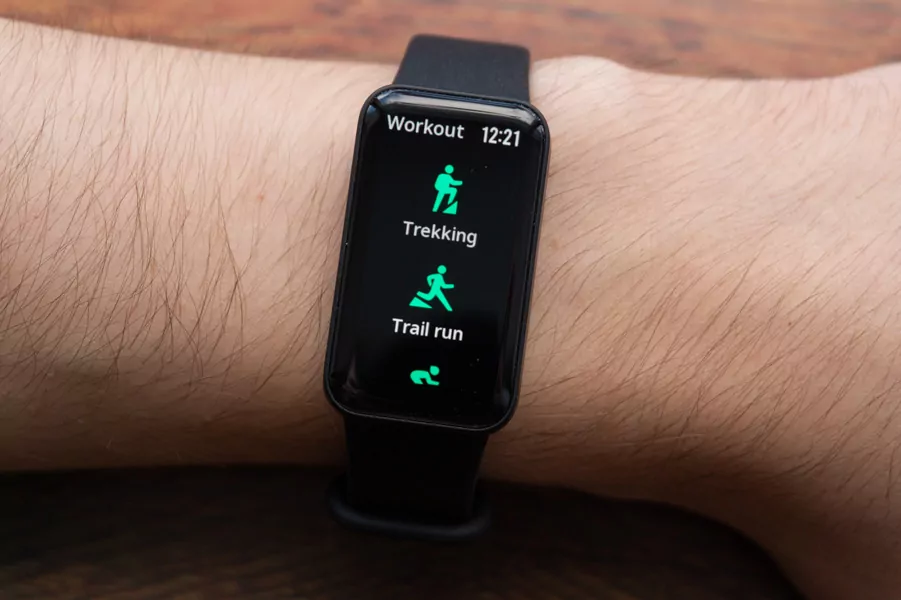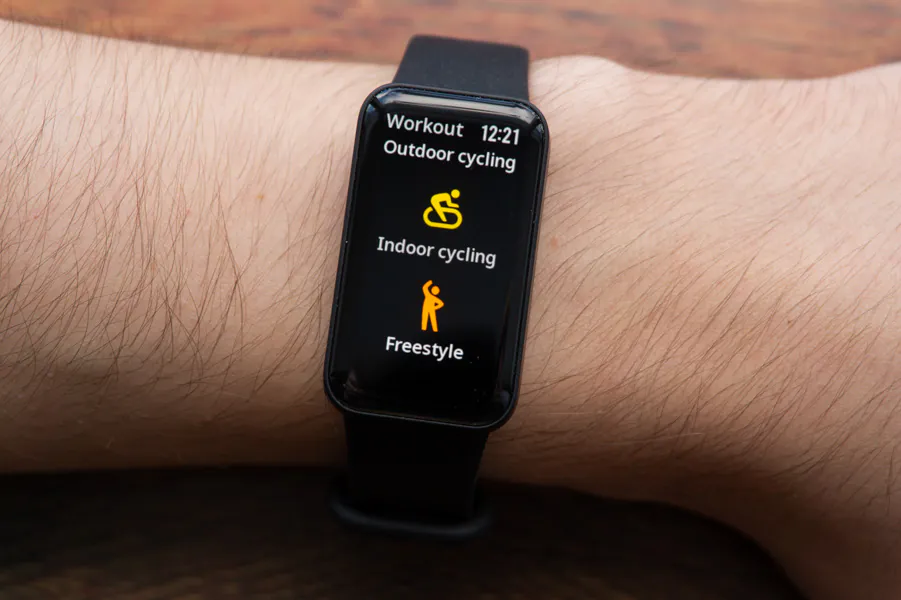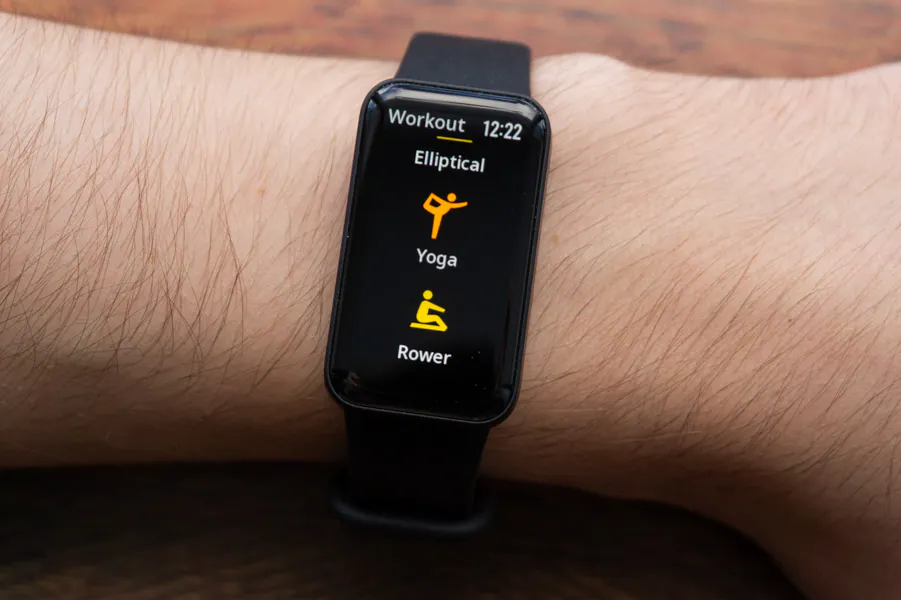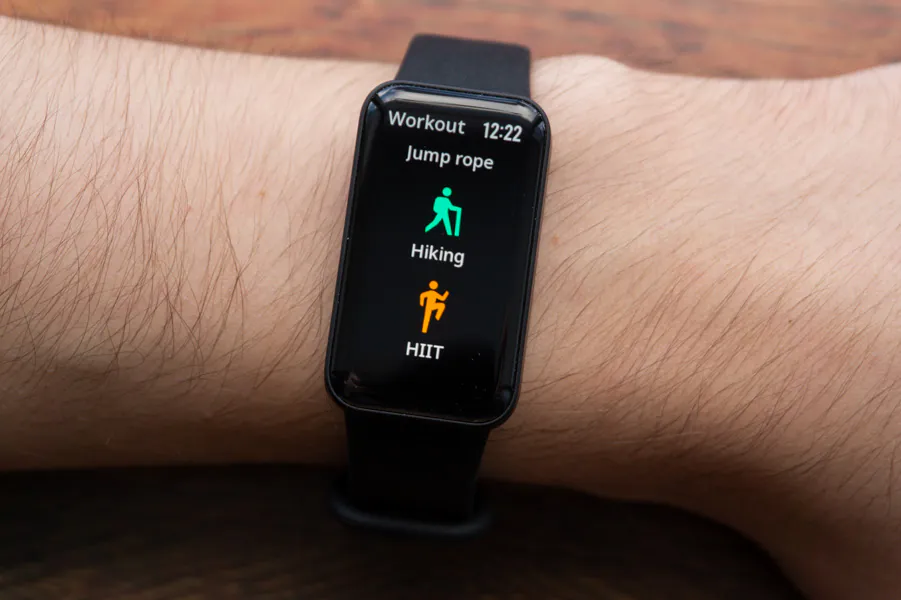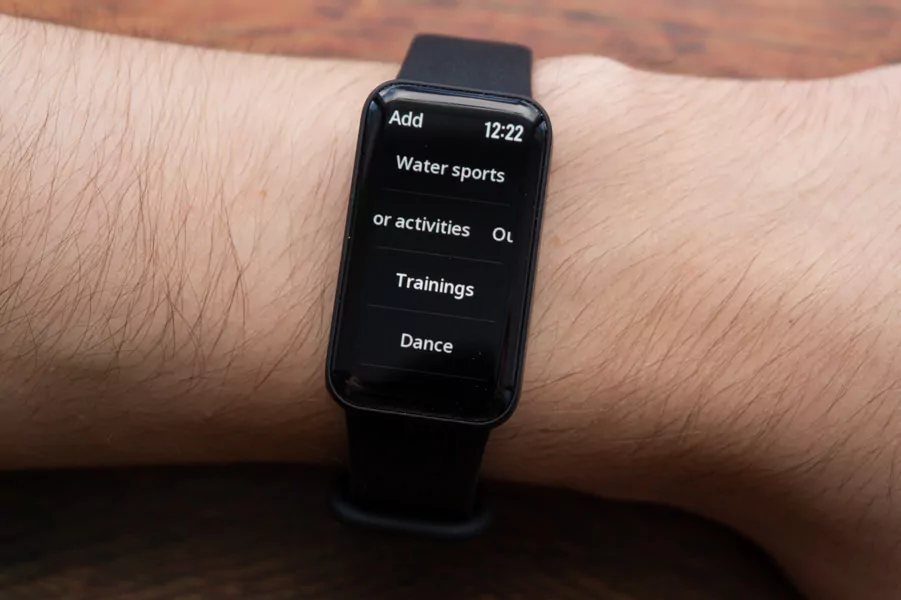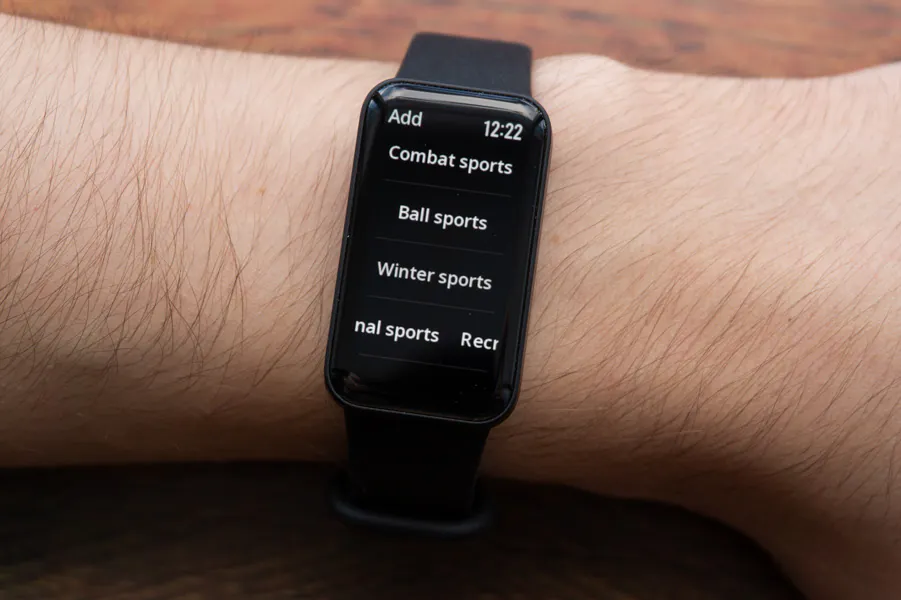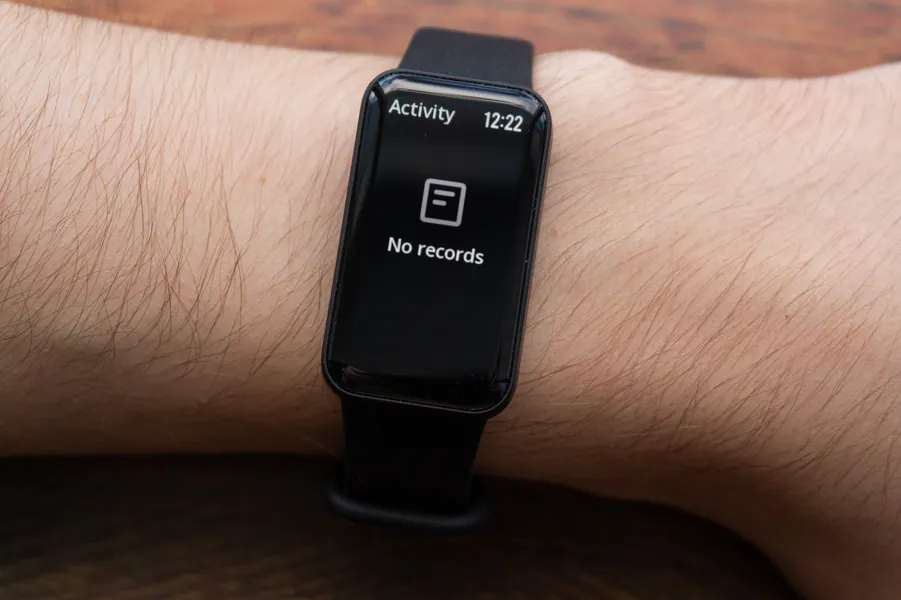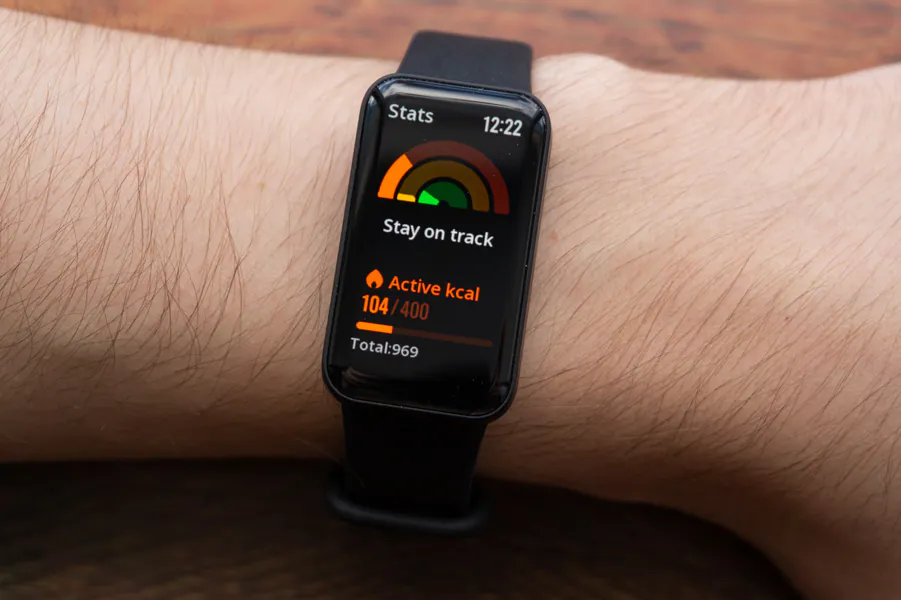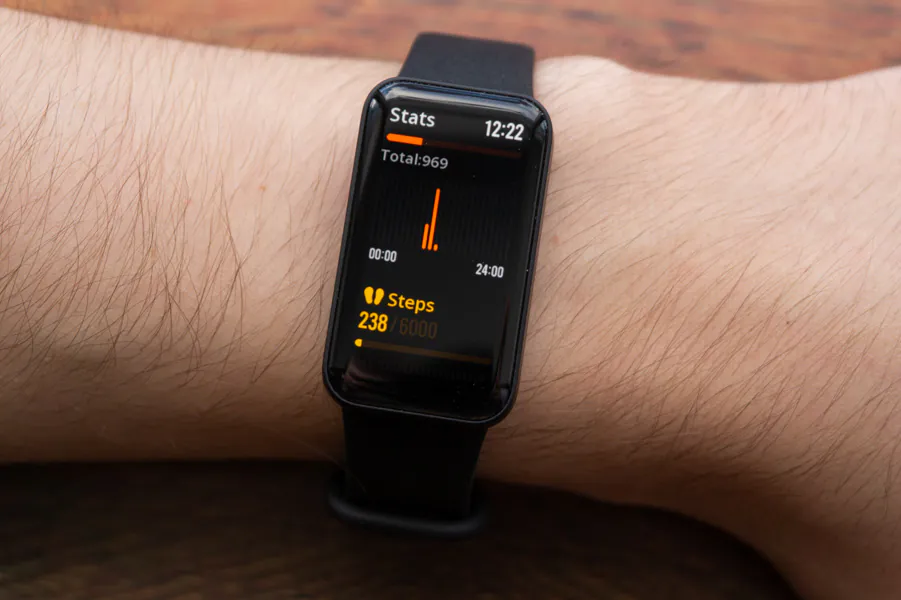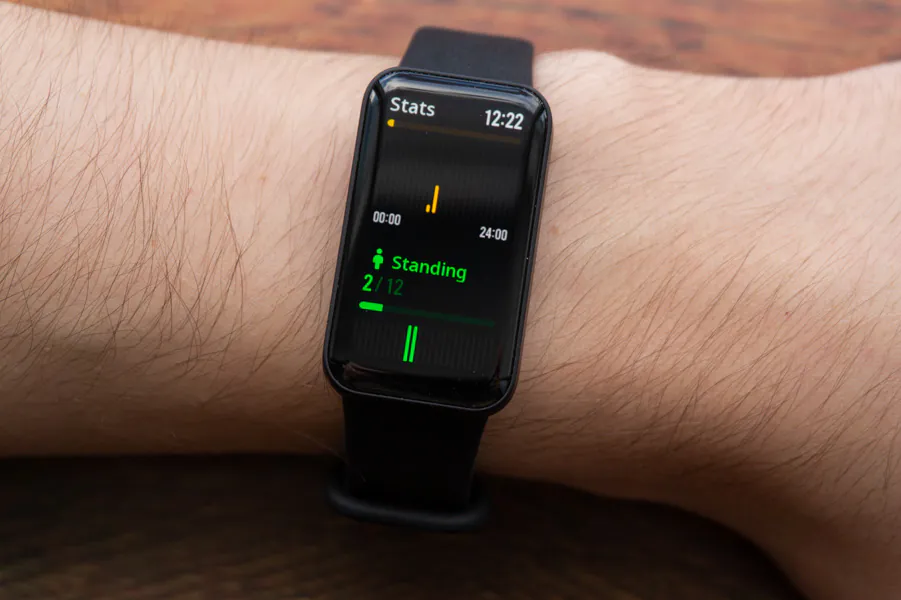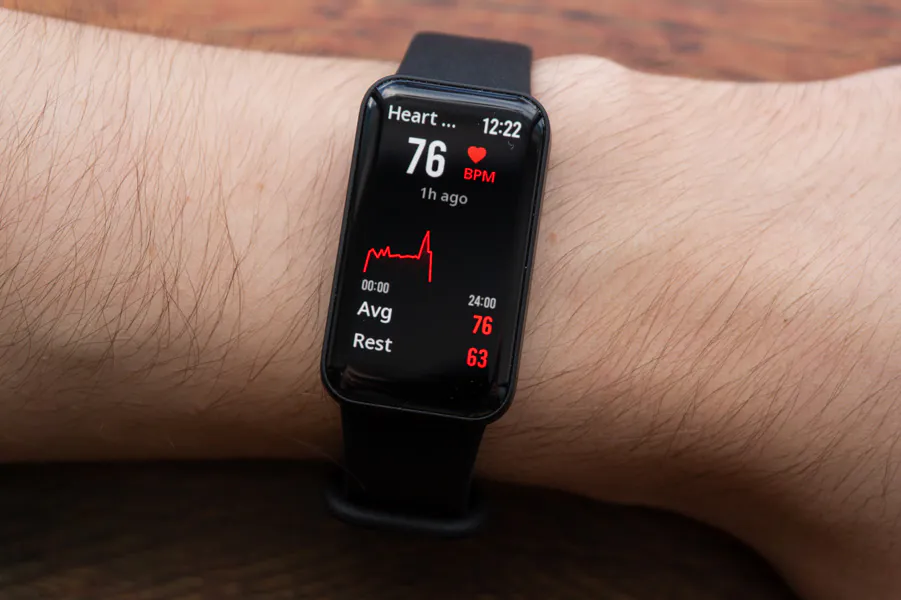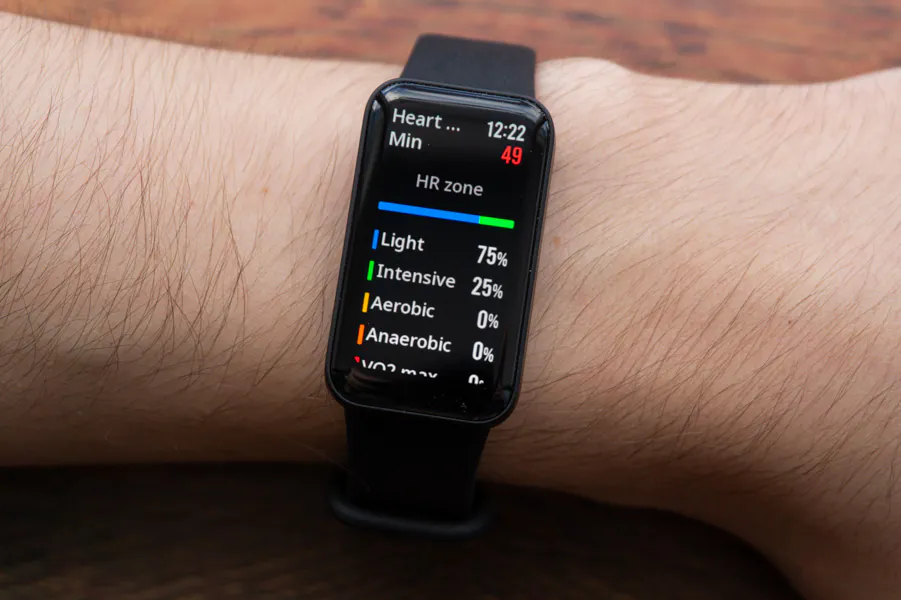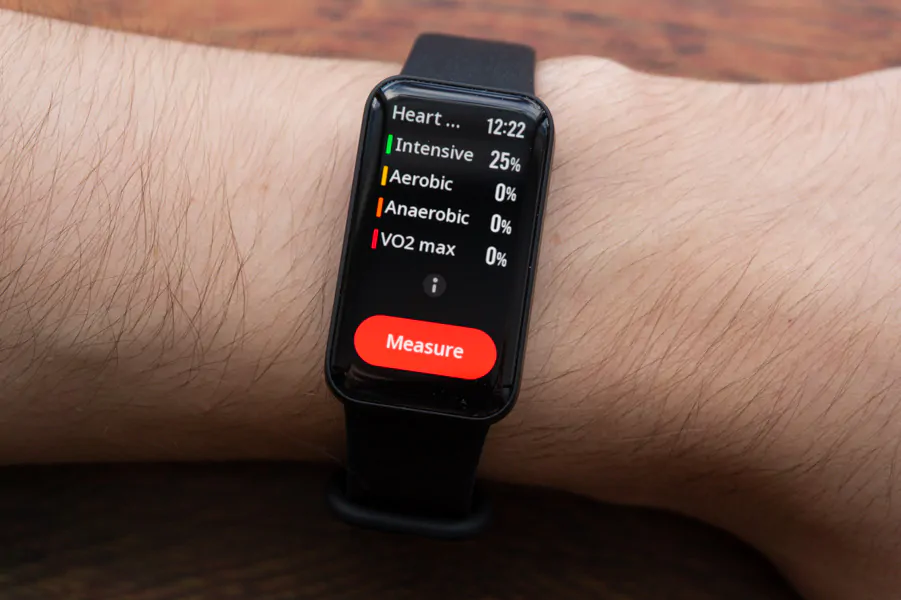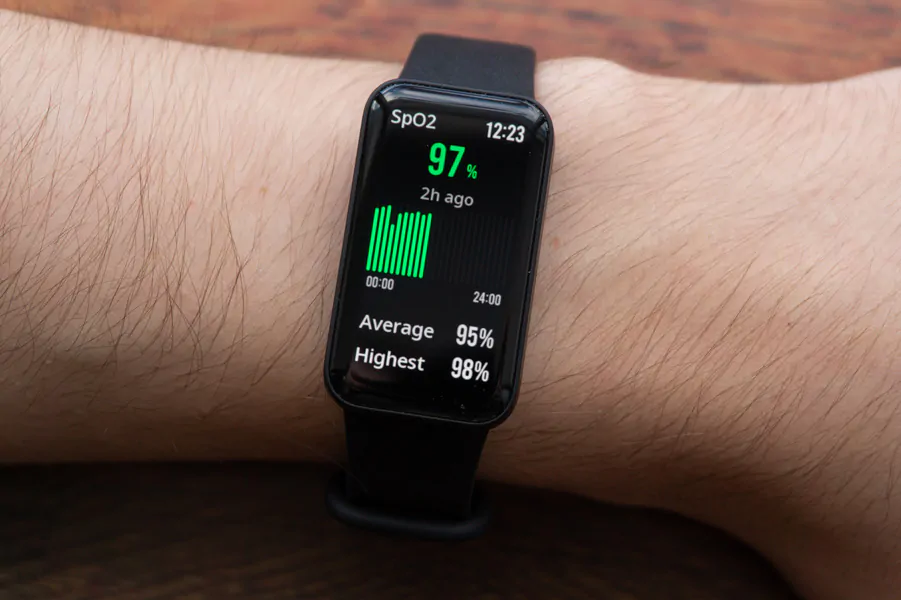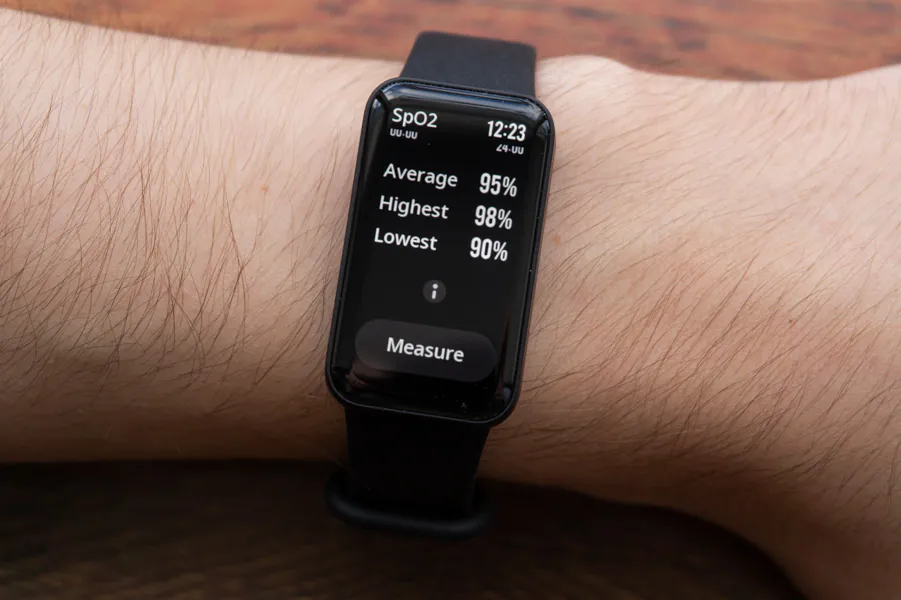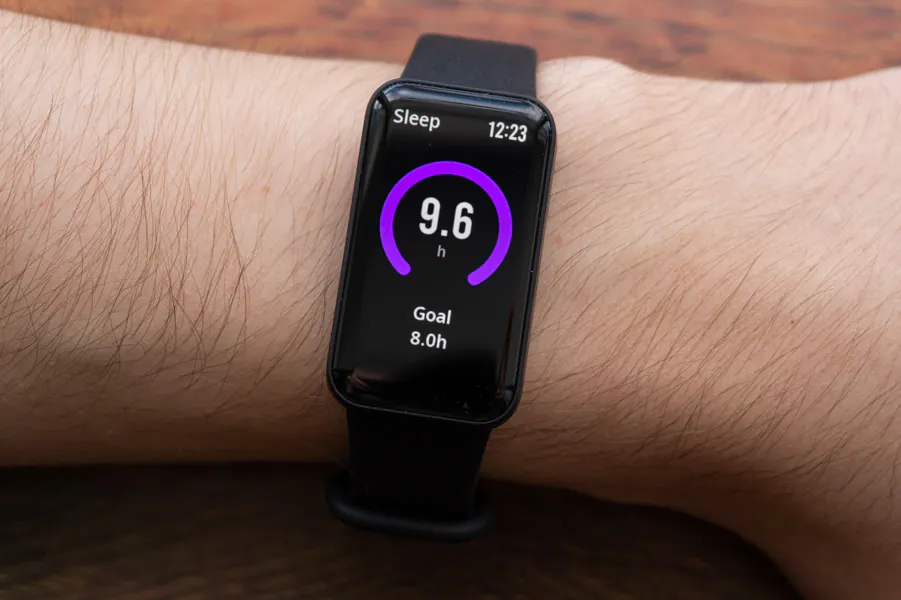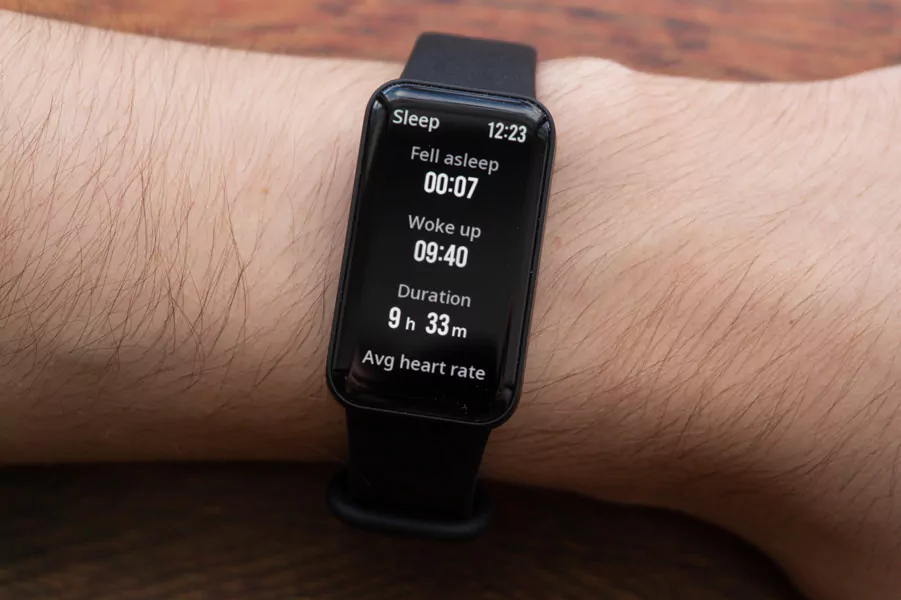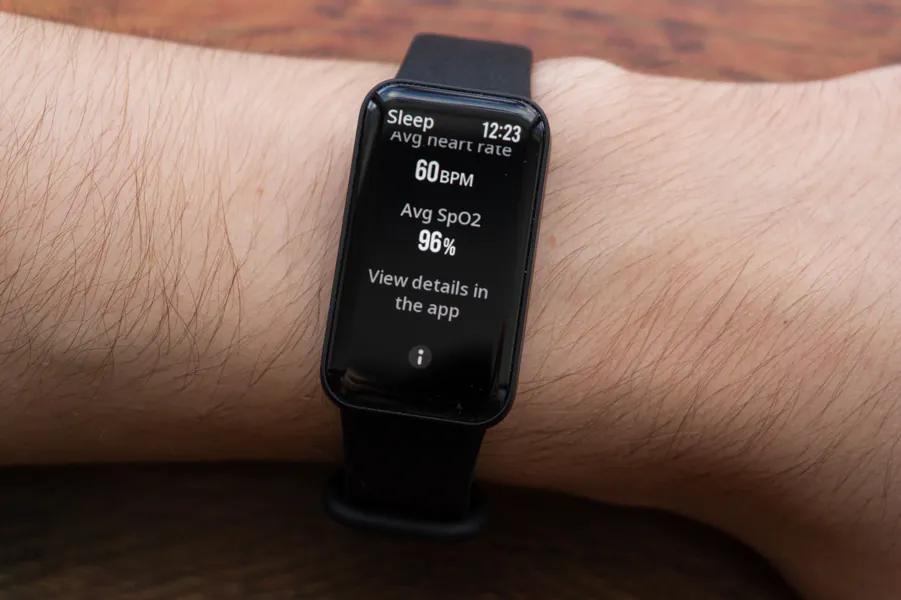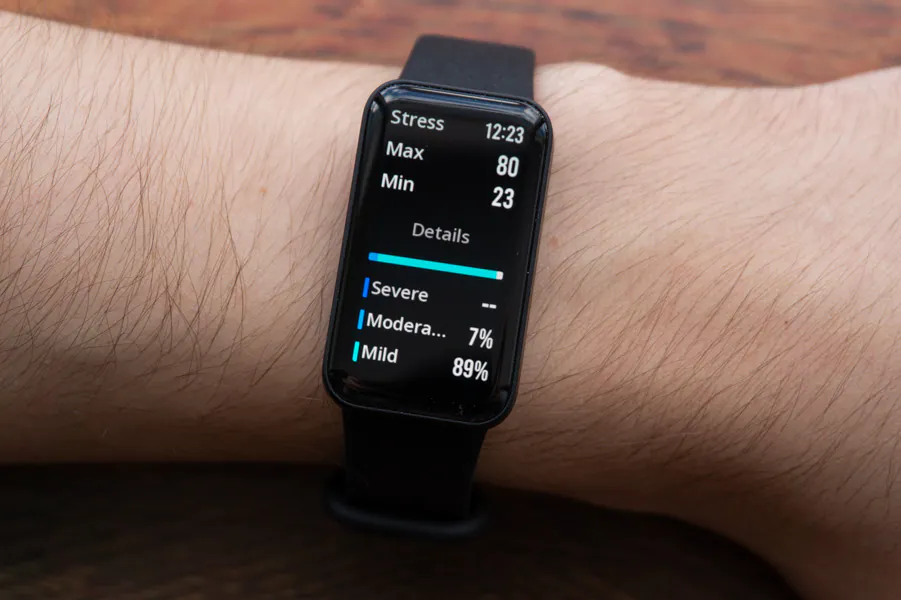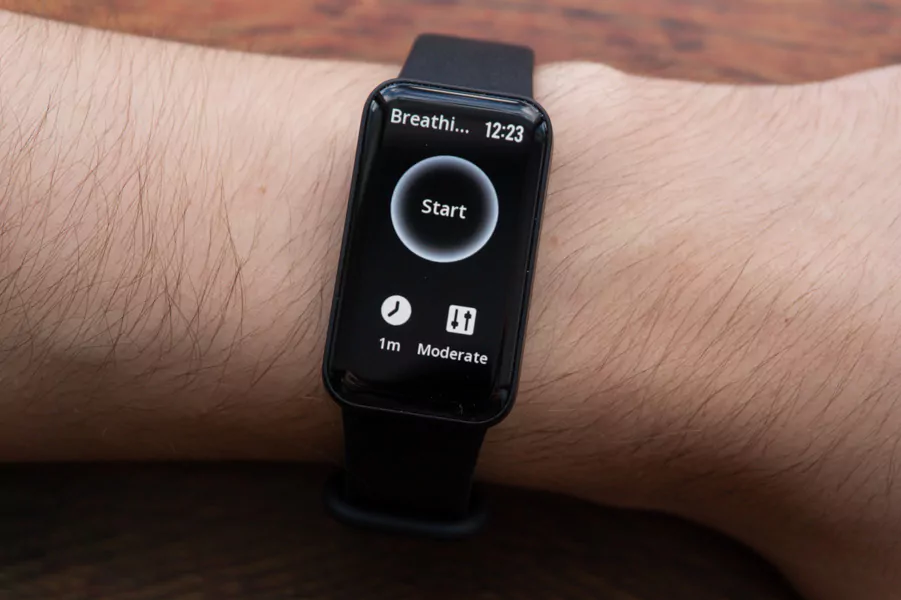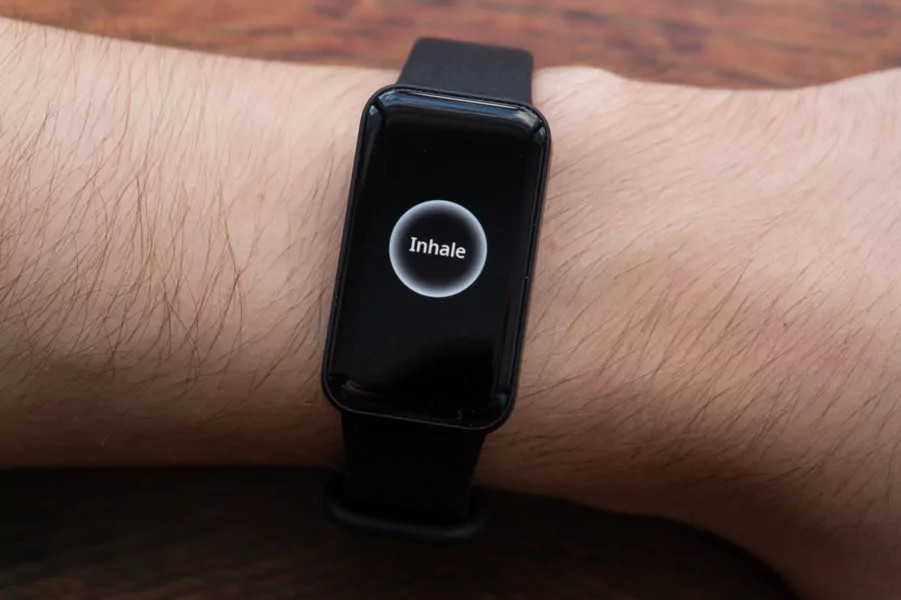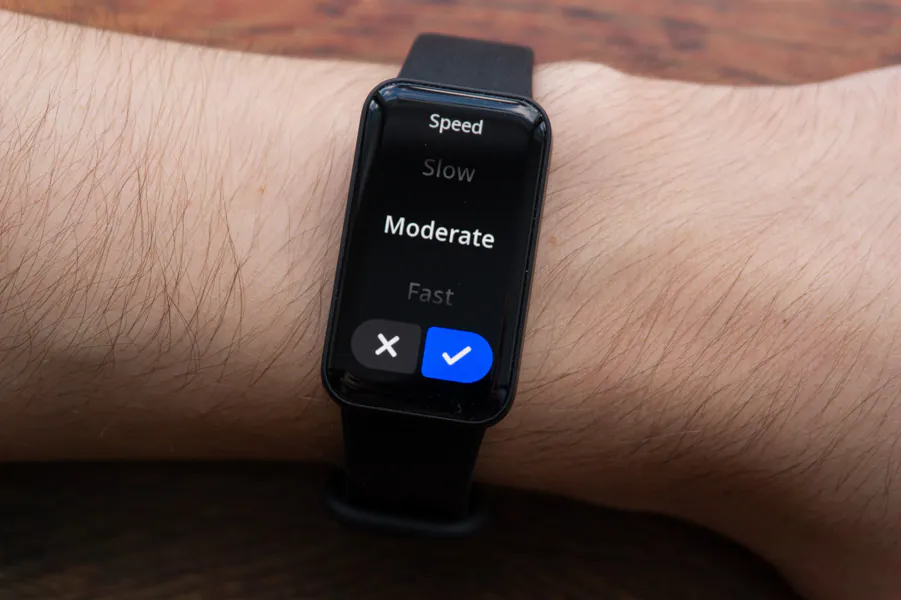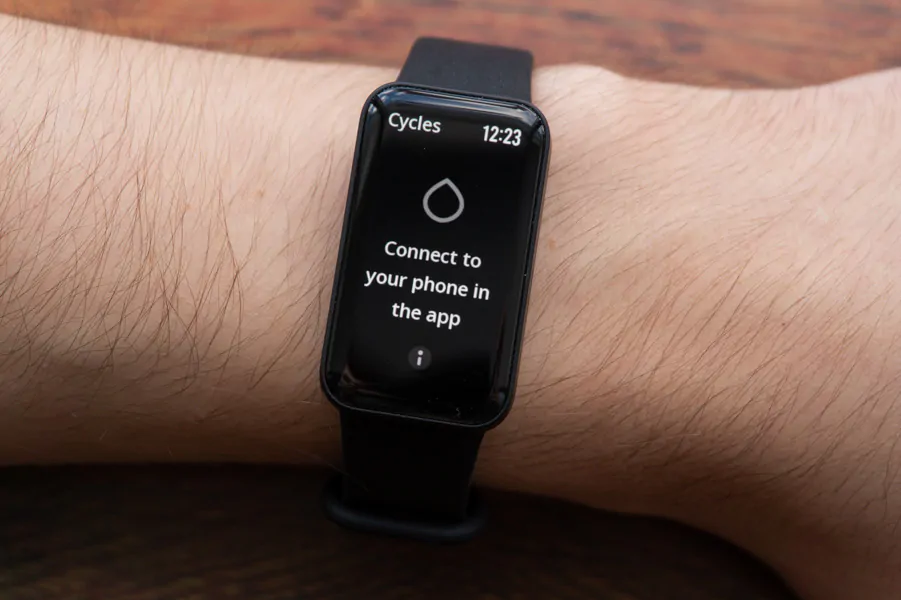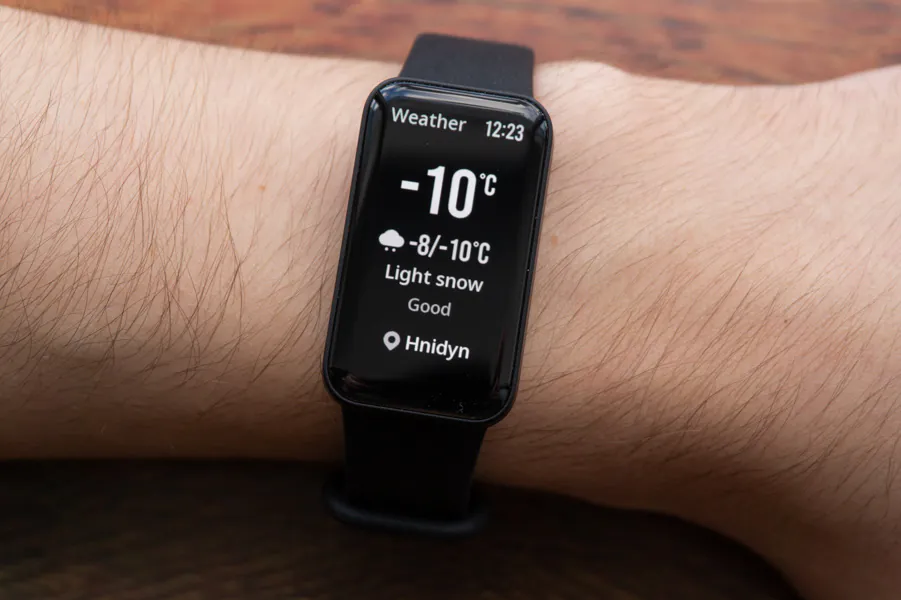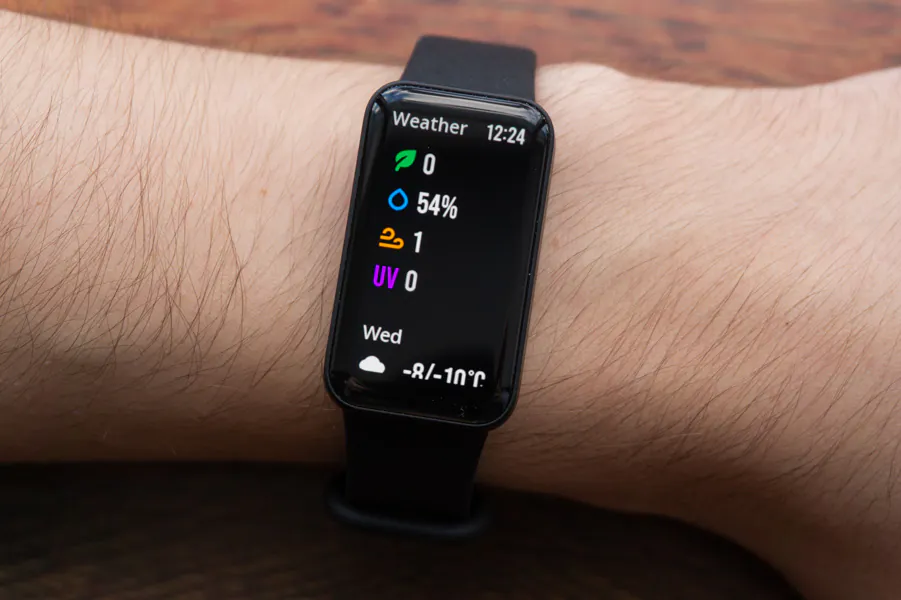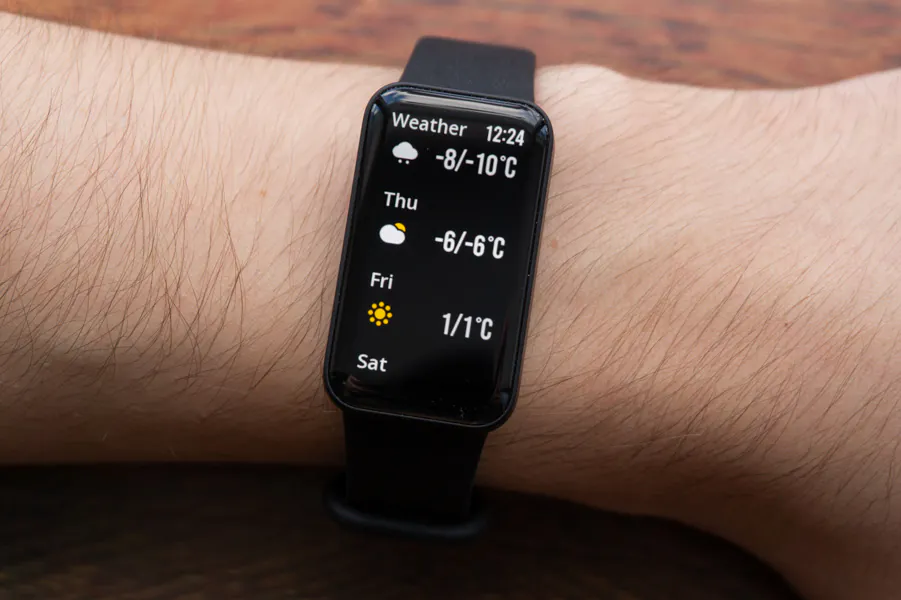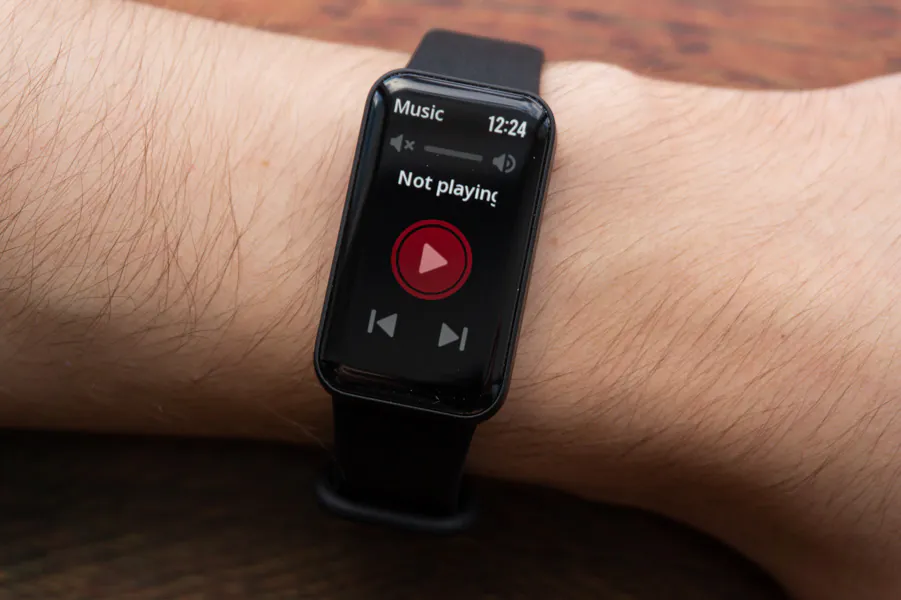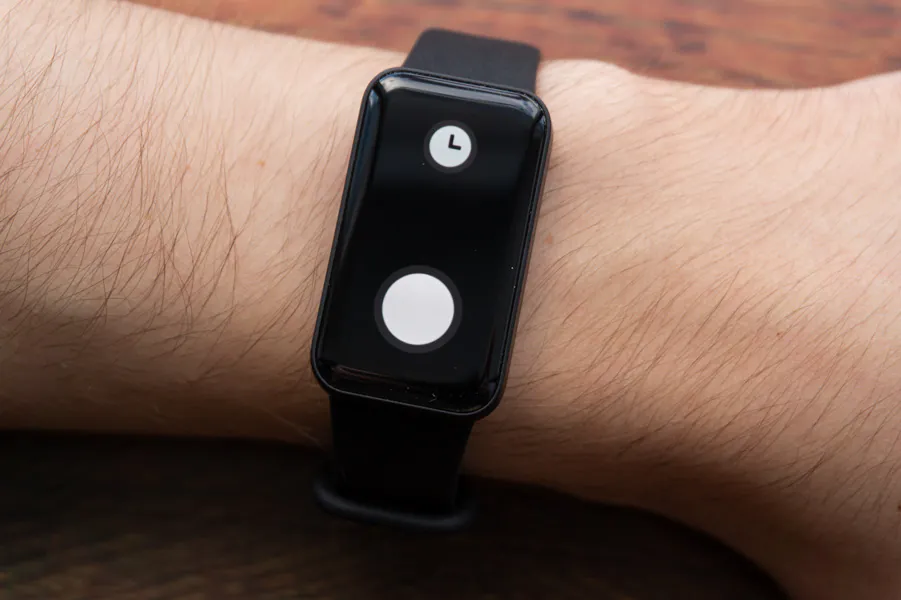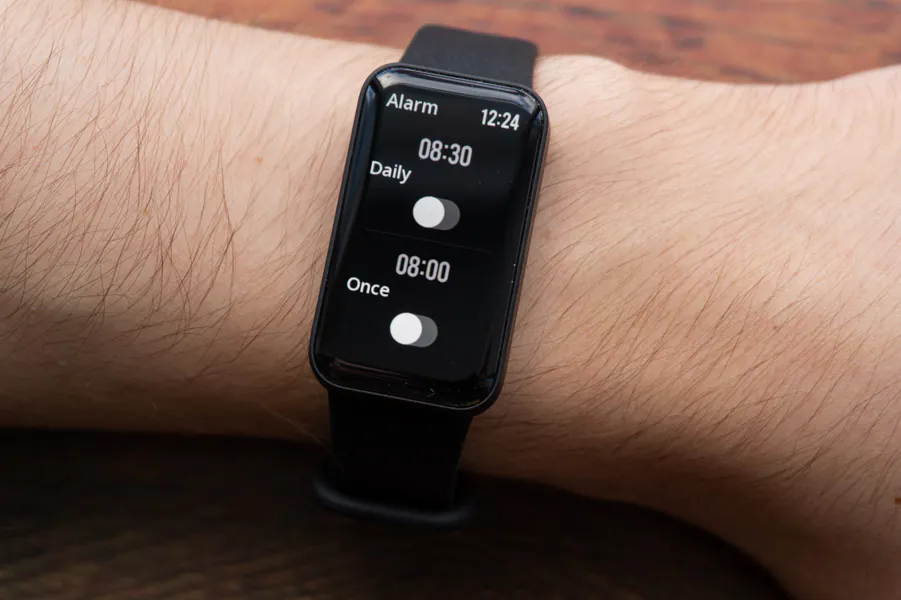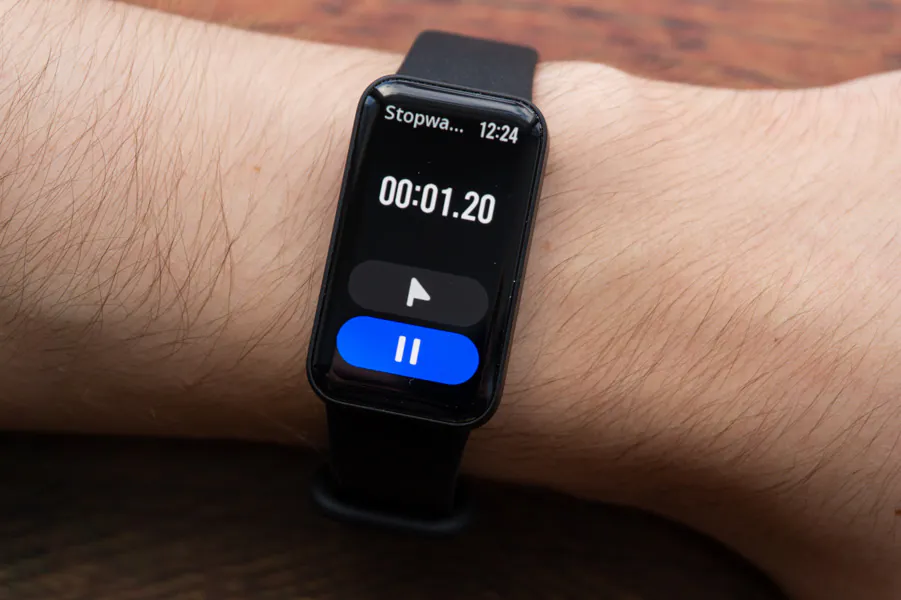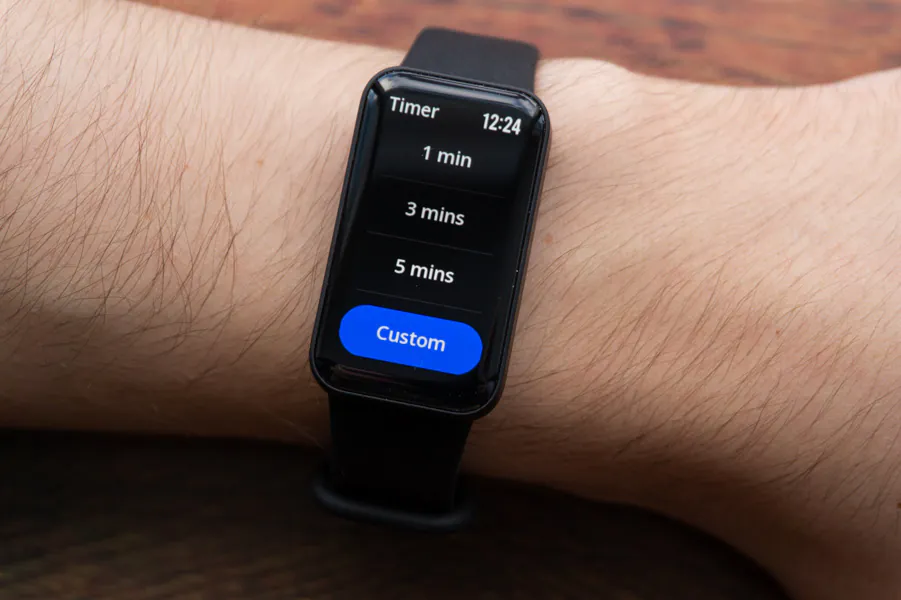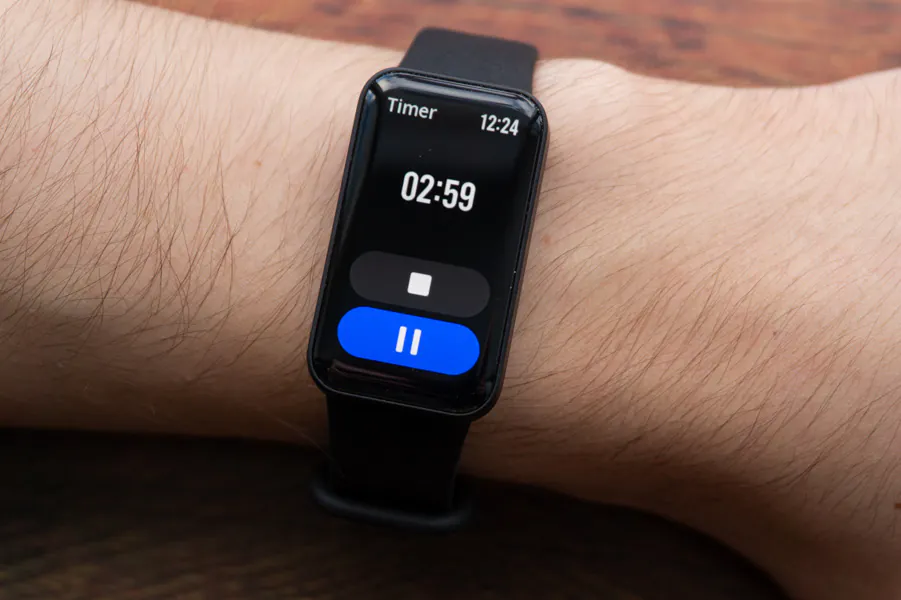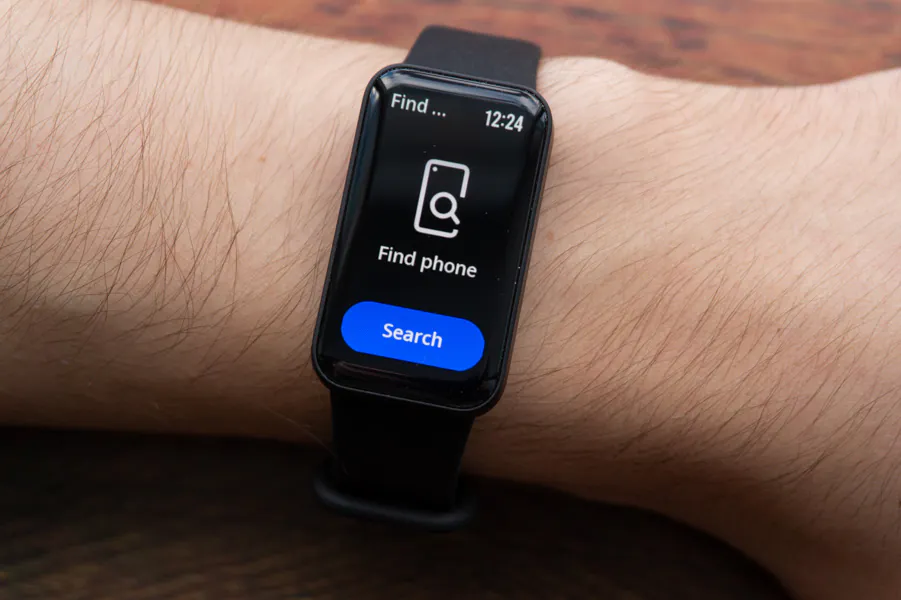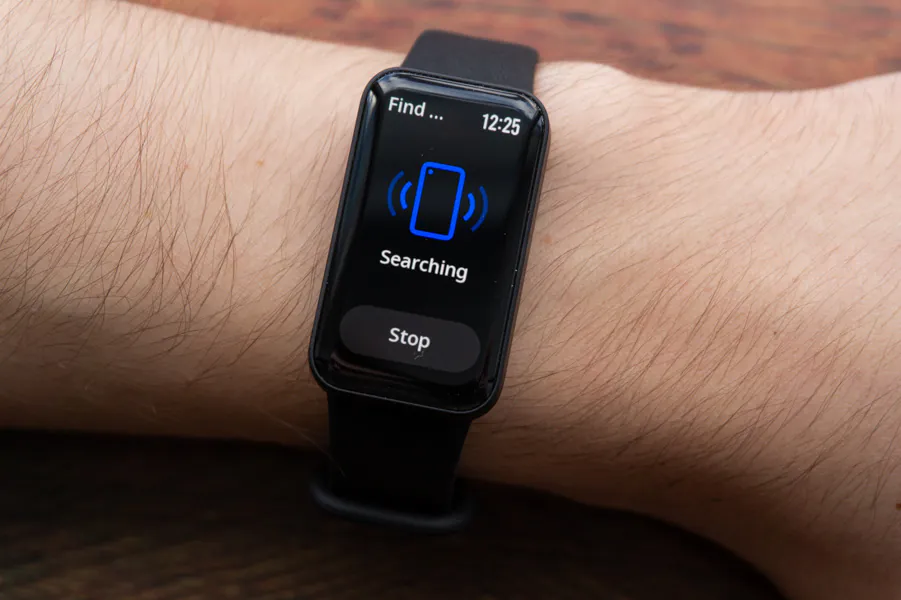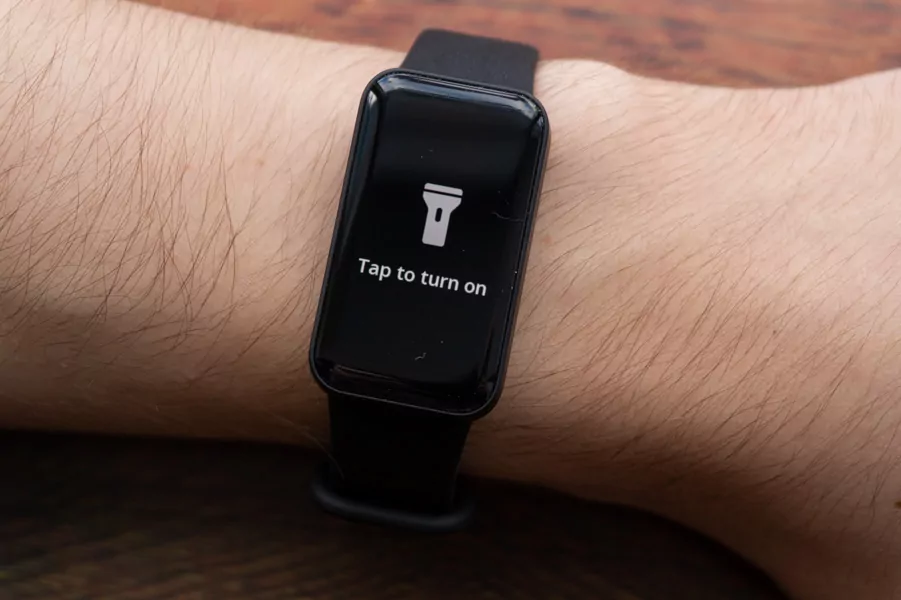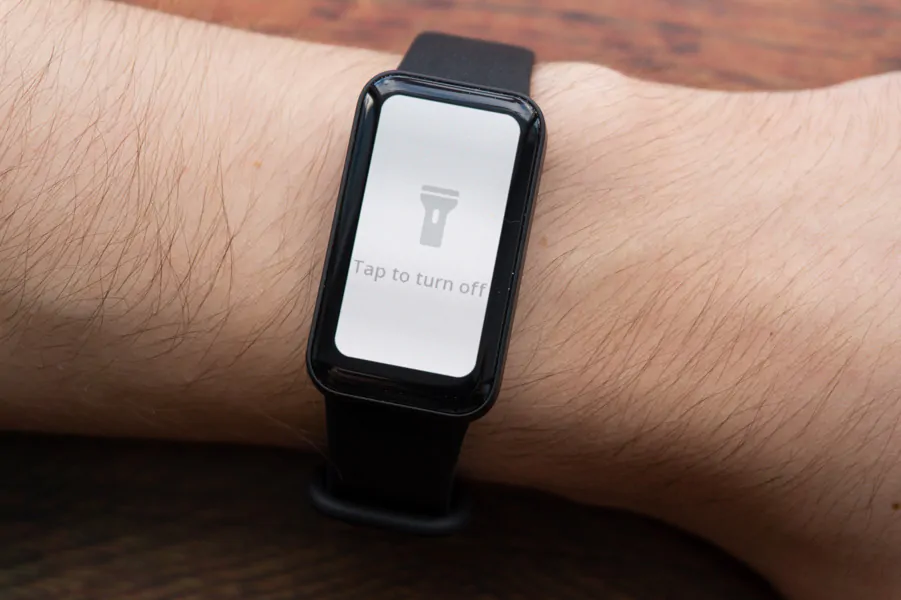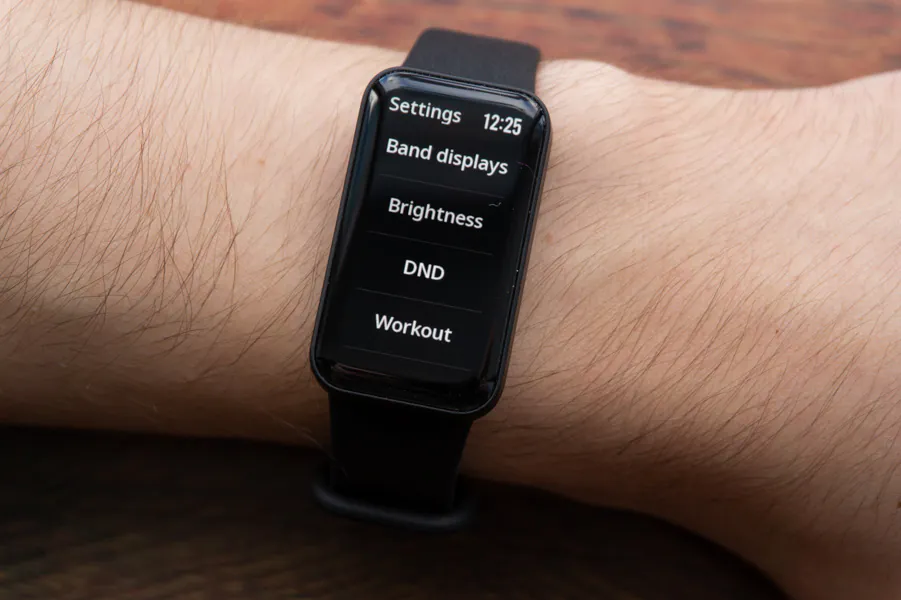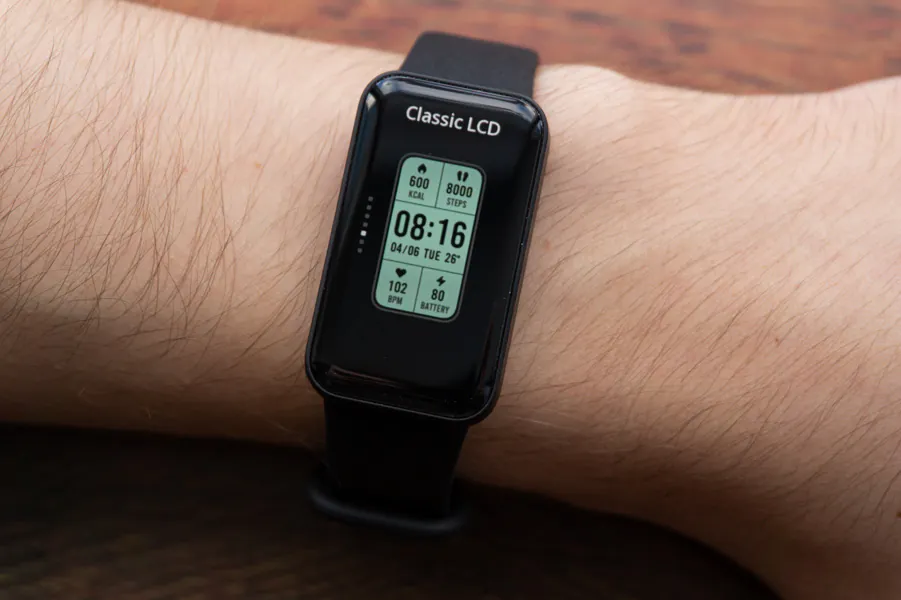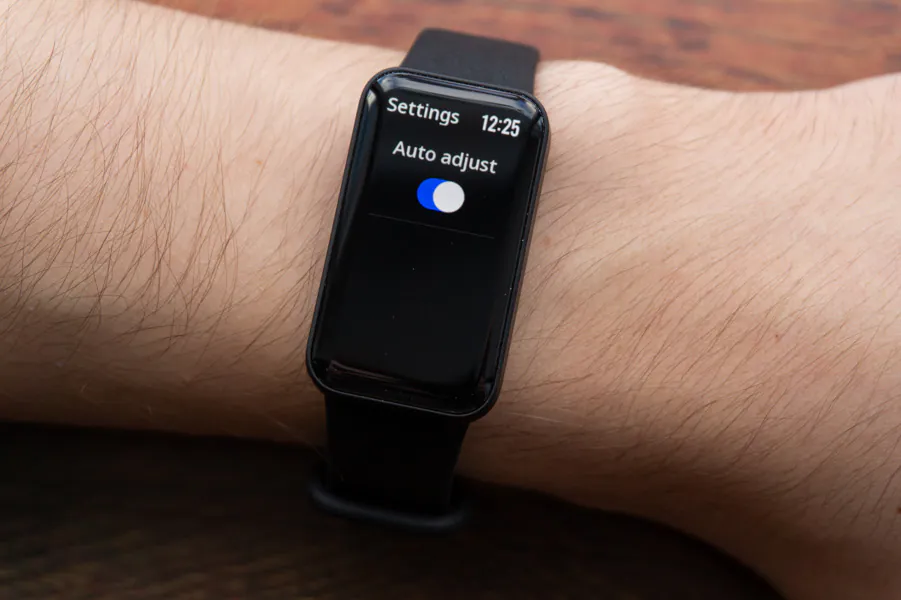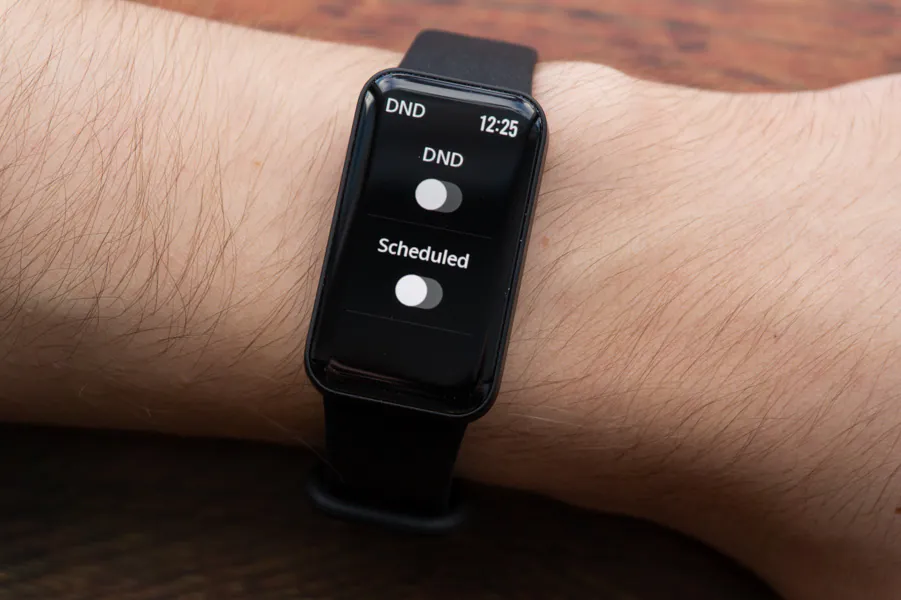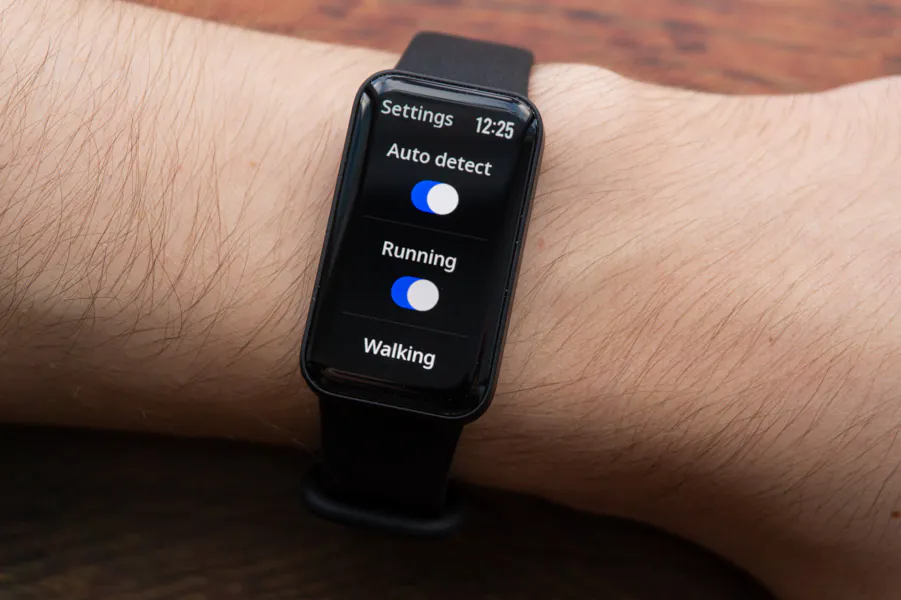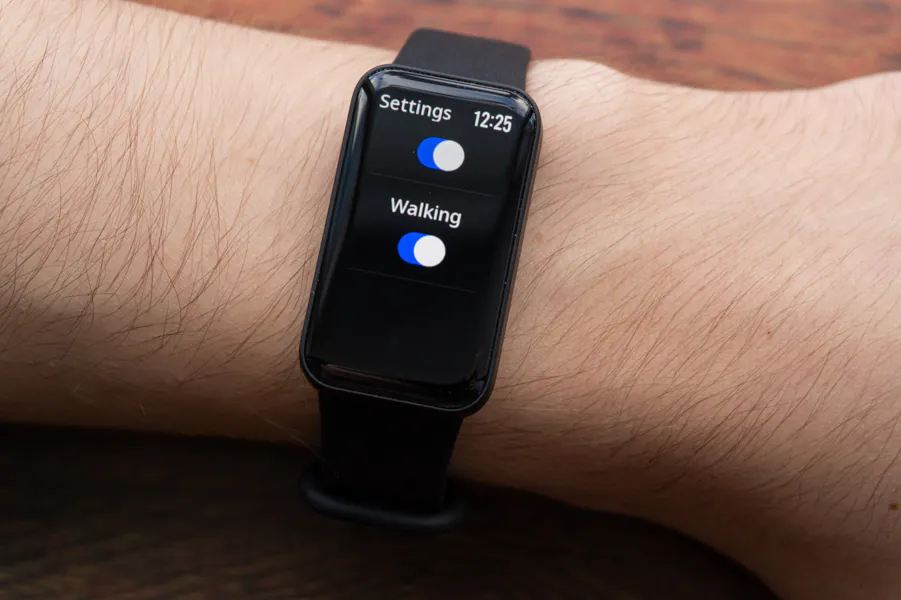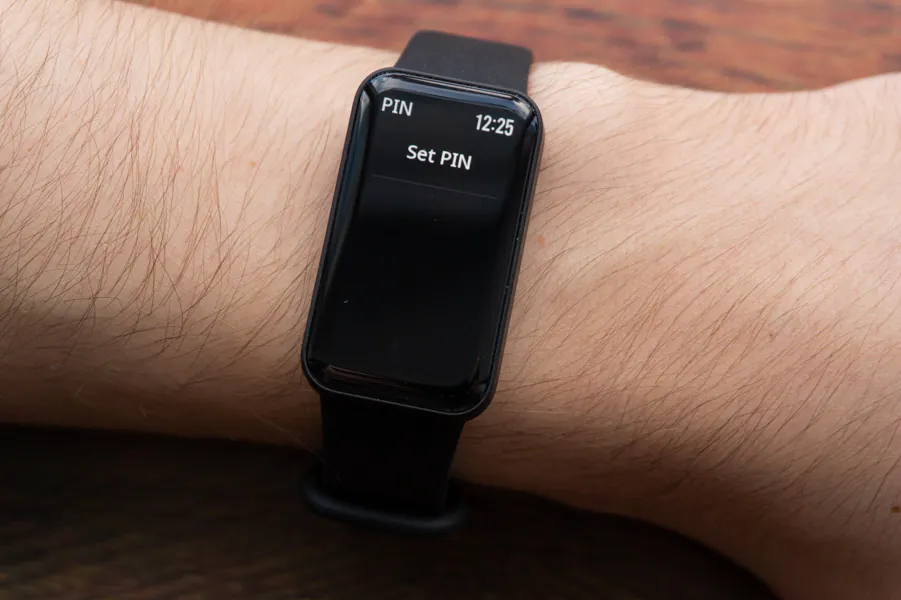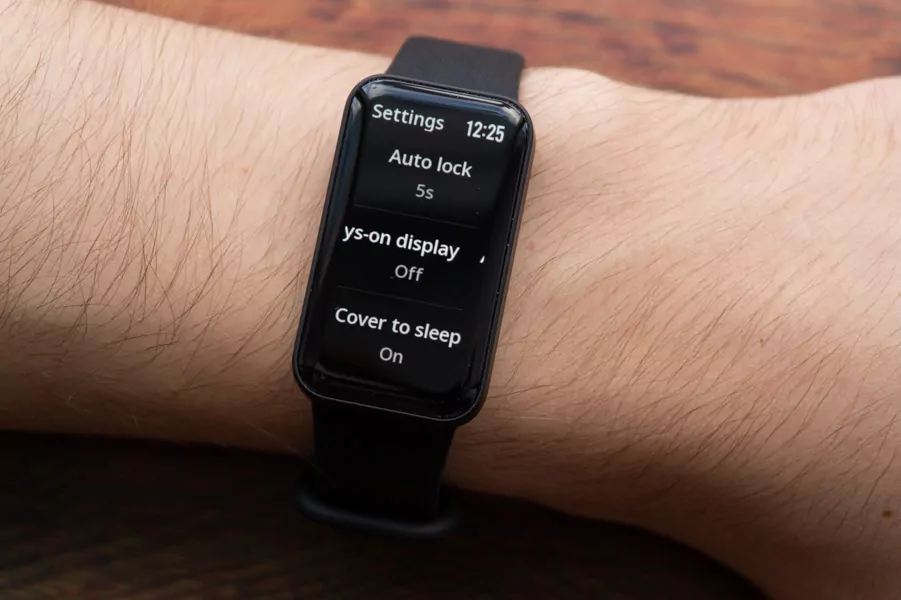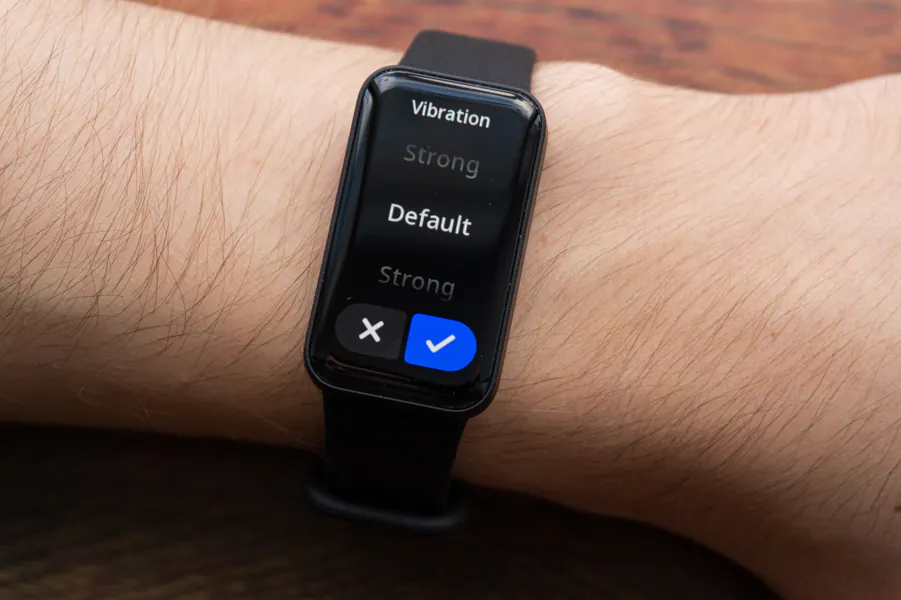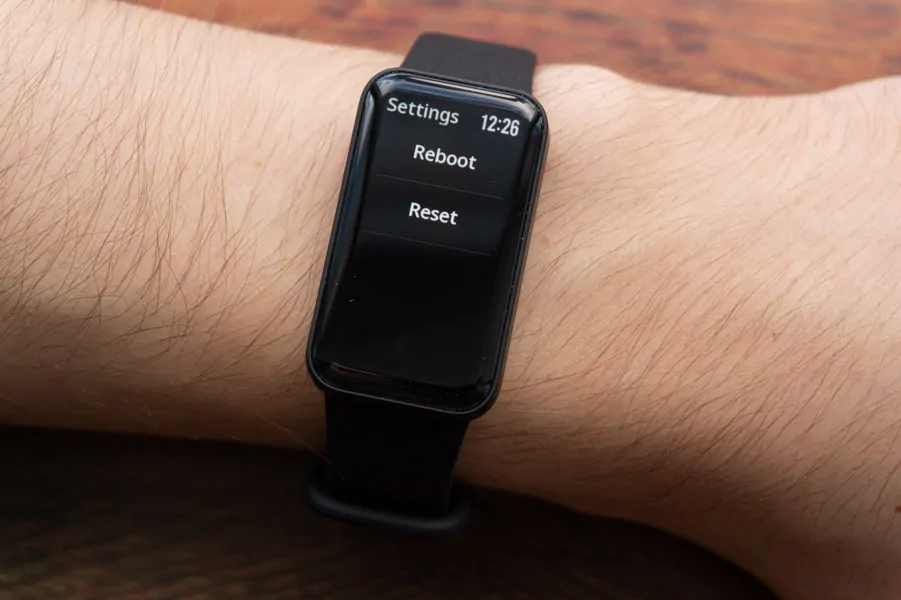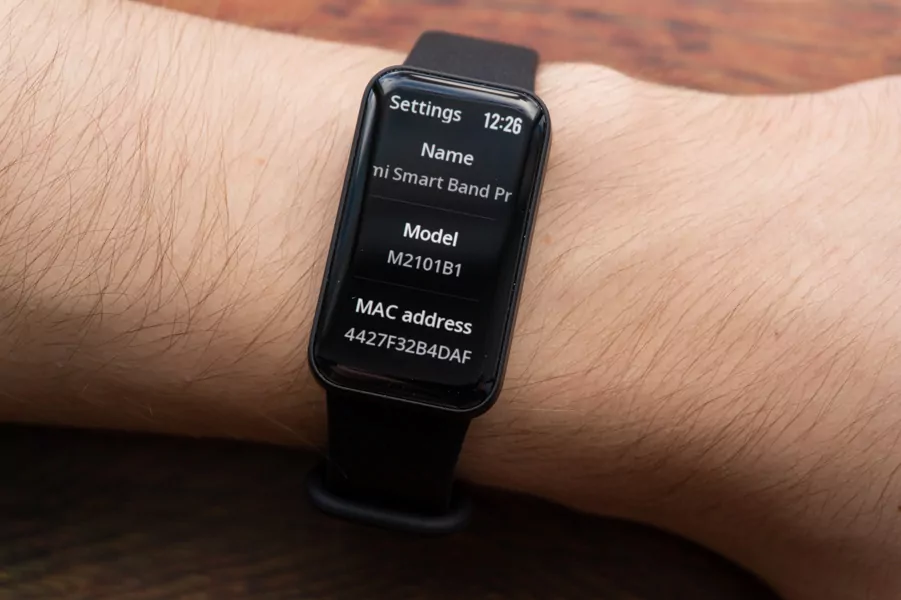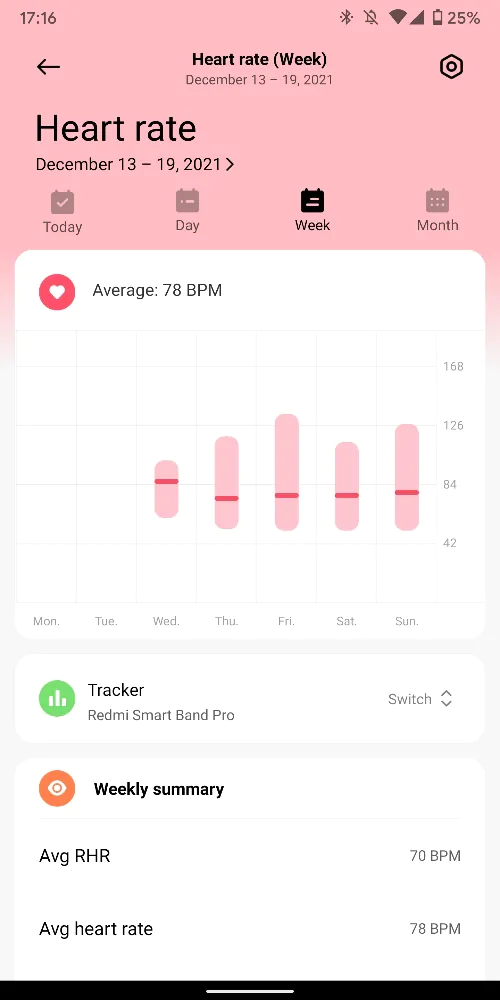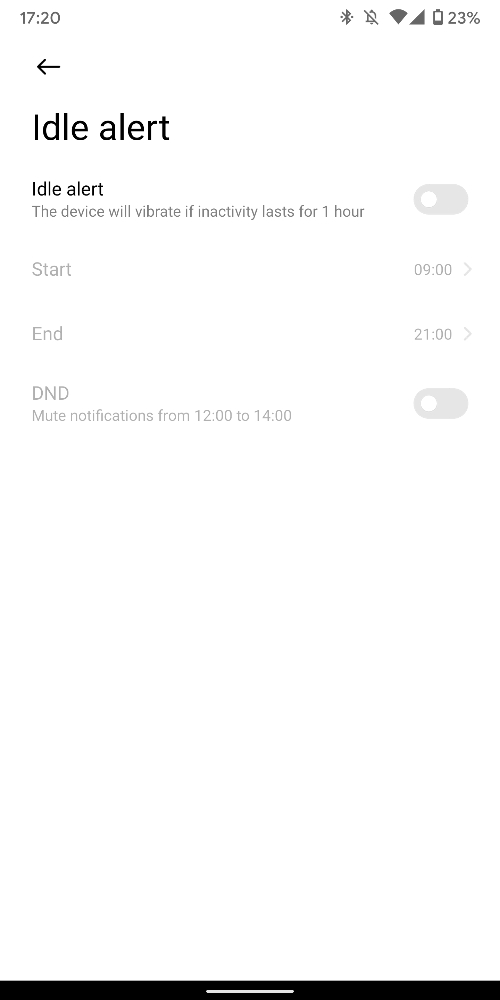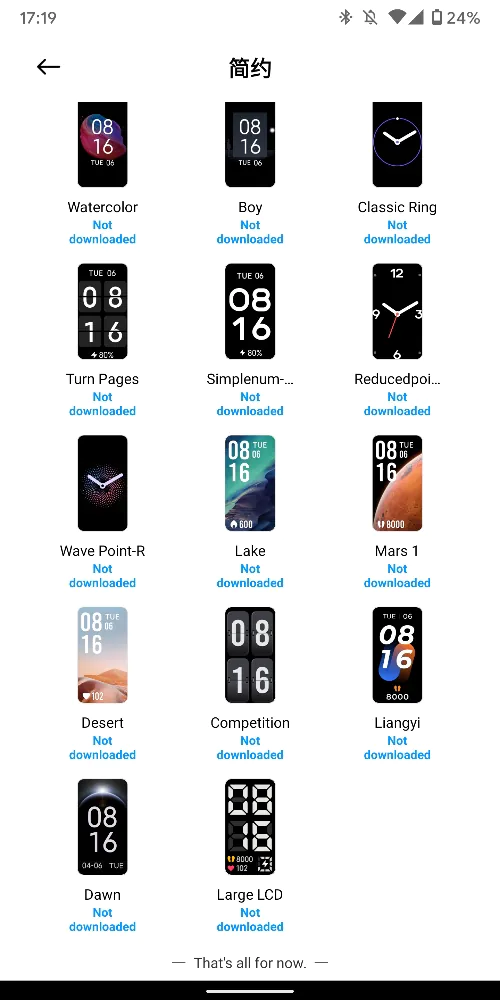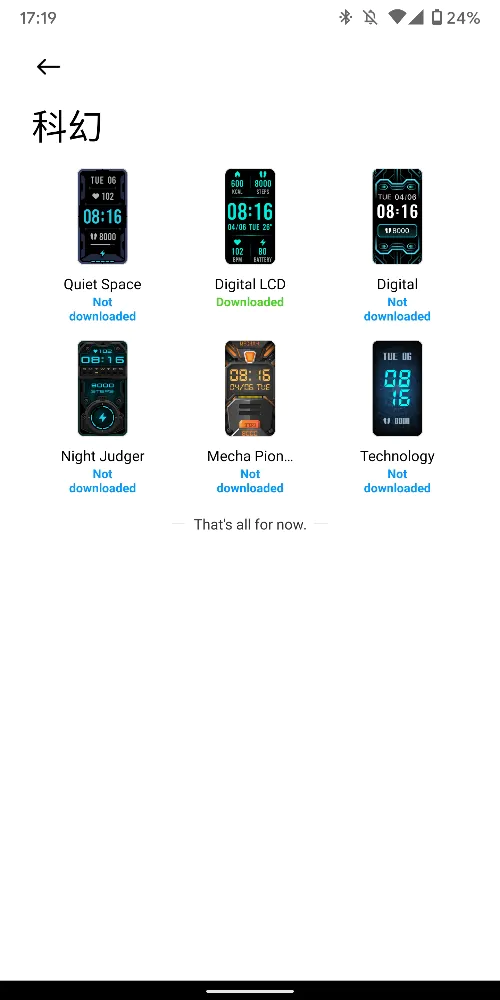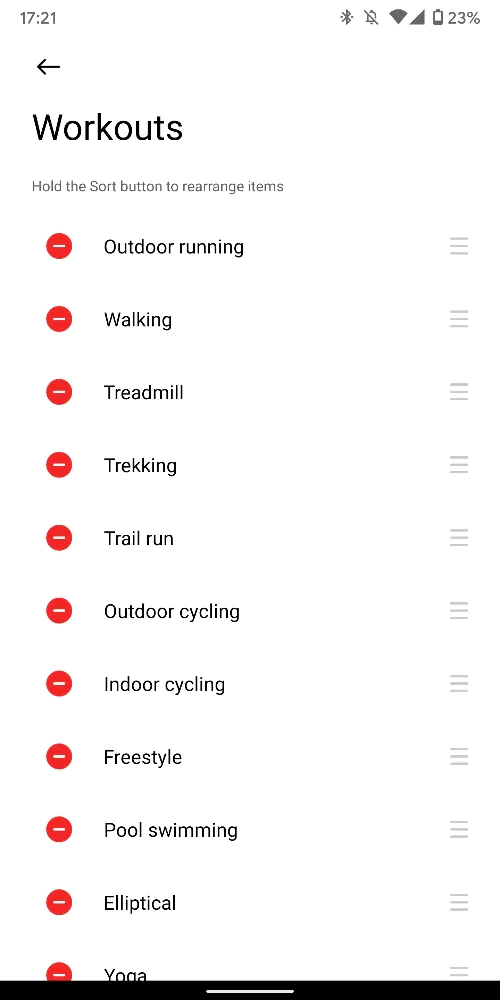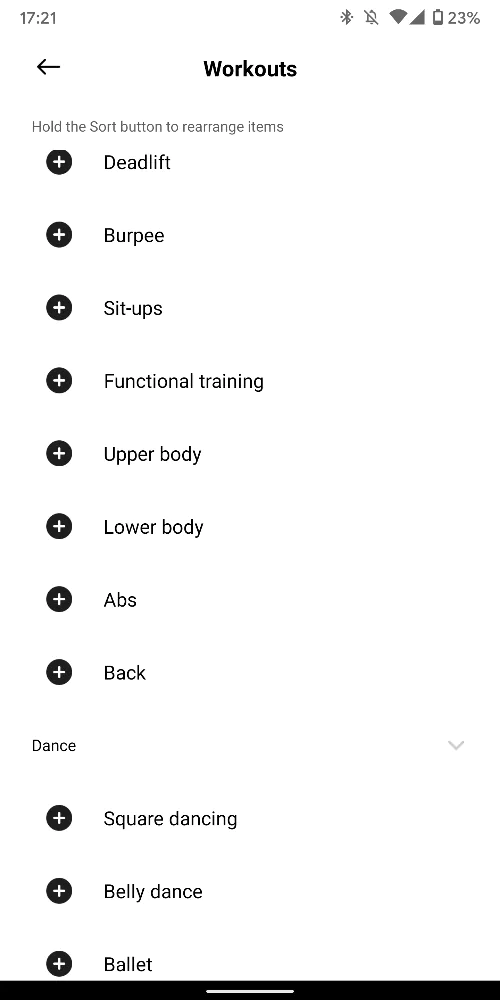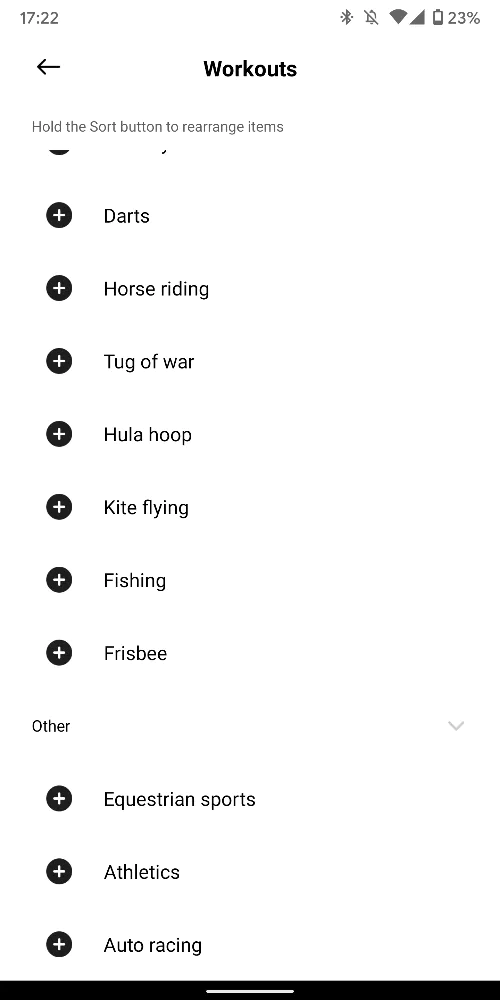© ROOT-NATION.com - Use of content is permitted with a backlink.
A few months ago, Xiaomi introduced a new generation of fitness trackers from the Redmi brand – Redmi Smart Band Pro. This is the advanced version of last year’s original Redmi Band. In this review, we will try to figure out what the Pro version offers, how it stands out from other trackers and whether there’s a reason to forget about the Xiaomi Mi Smart Band 6.
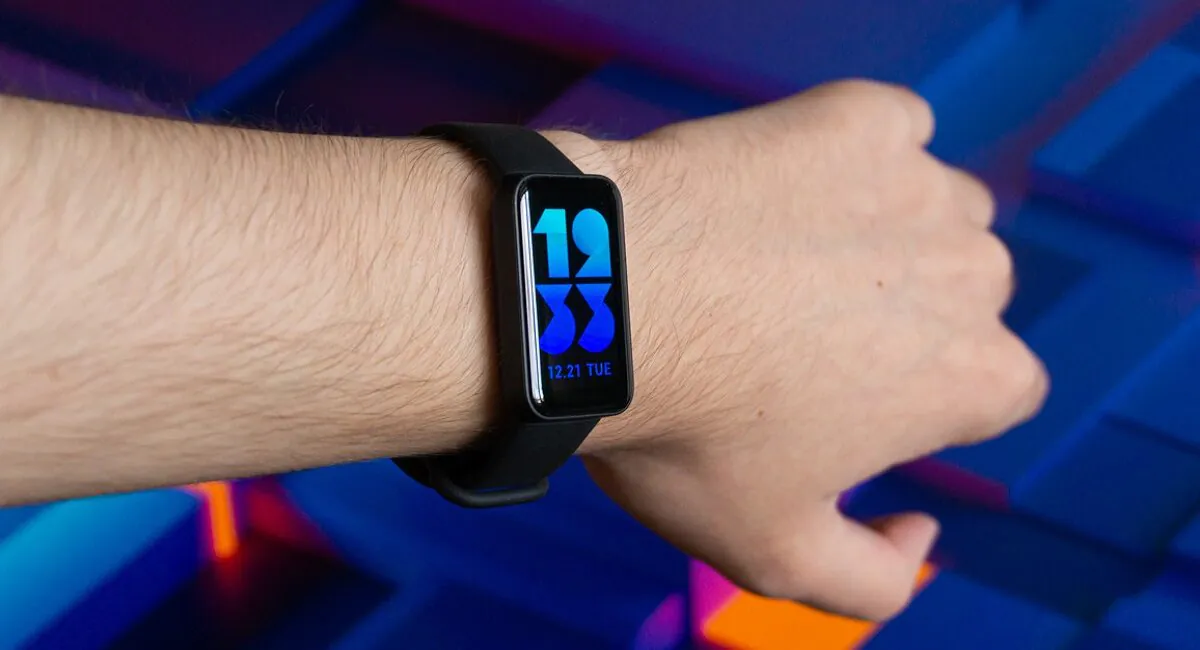
Full specifications of the Redmi Smart Band Pro
- Display: 1.47″, AMOLED, 368 × 194 pixels, 282 ppi, 450 nits, 100% NTSC, 8-bit, Touch
- Wireless Modules: Bluetooth 5.0 (Low Energy)
- Sensors: Illumination, heart rate (PPG), 3-axis accelerometer, 3-axis gyroscope
- Battery: 200 mAh battery
- Processor: Apollo 3.5
- Compatibility: Android 6.0 and later or iOS 10.0 and later
- Case materials: tempered glass with 2.5 D effect, glass fiber reinforced polycaprolactone
- Dimensions without the band: 42.05×24.45×10.15 mm
- Weight: 15g without the band, 26g with it
- Water resistant: up to 50 meters (5 ATM)
- Band Material: Thermoplastic polyurethane
- Adjustable band length: 130-220mm
- What’s in the box: Redmi Smart Band Pro, Charging Cable, User Manual
Price
At the time of publication of this review, the Redmi Smart Band Pro cost about $48. So about the same as the Xiaomi Mi Smart Band 6 fitness tracker (without NFC). So it will be all the more interesting to figure out what is the difference between them and which wearable device is worth choosing.
Feature list
When it comes to the functionality of the gadget, the Redmi Smart Band Pro is not that different from the Mi Smart Band 6 or some other fitness tracker from the same price category. One way or another, their functionality intersects, but Redmi also has its own interesting features like: time and date display, tracking the number of steps taken and distance traveled, pulse monitoring, blood oxygen levels and sleep tracking. From the non-standard: tracking stress levels, built-in breathing exercises and the ability to monitor women’s health. Other smart functions: weather, playback and smartphone camera controls. There is also an alarm clock, a stopwatch and a timer, a search for a smartphone with an audible alert, notifications from a smartphone (apps and incoming calls) and a so—called flashlight.
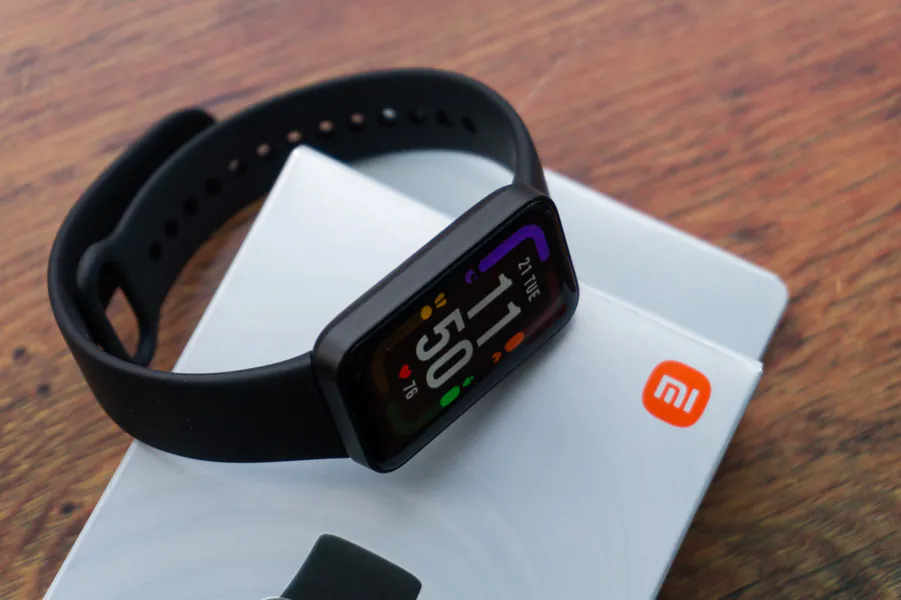
Of course, there’s support for lots of sports activities. It is worth dwelling on them in more detail, because there are a lot of activities available here. The exact number is not specified, but there are definitely more than 110, even though detailed tracking is available for only 15 activities, and the rest support standard metrics (calories, pulse, workout duration). These 15 professional modes include: running on the street, running on a treadmill, walking, cycling, hiking, trail running, tracking, exercise bike, rowing simulator, jump rope, high-intensity interval training (HIIT), yoga, and swimming in the pool. Those modes support more detailed statistics, and for hundreds of others it is standard. In addition, 3 activities can be detected automatically and the tracker itself will offer to start tracking them (treadmill, running outside and walking).
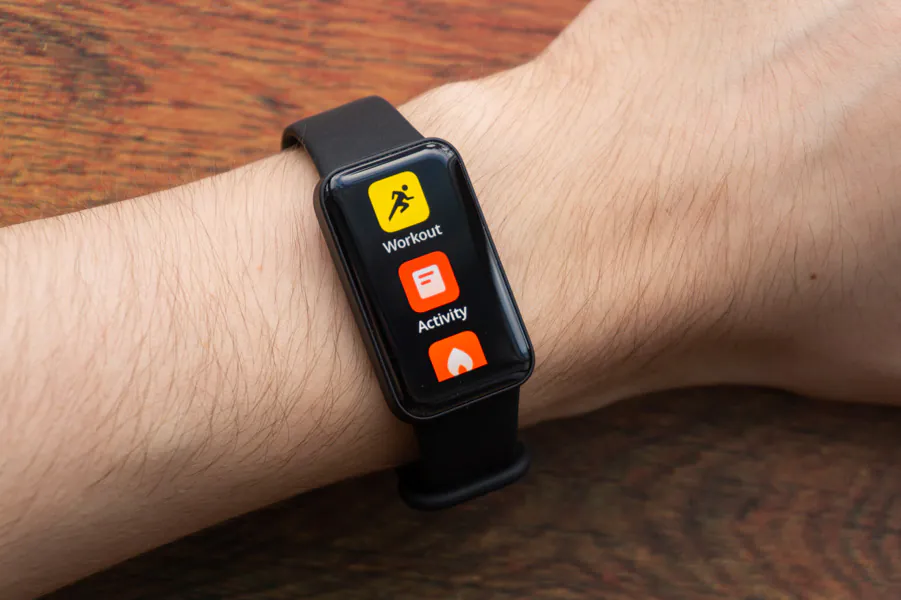
In the meantime, I will clarify some details about the work and other features. First of all, this gadget is not intended to predict, diagnose, prevent or treat any diseases. That is, some indicators may and will differ slightly from the actual ones, so you should not rely on them seriously. As for the operation of other functions, there are no problems. The connection to the smartphone is reliable, notifications from apps regularly arrive, there are also no issues with playback and camera controls. In addition, the branded application can be synchronized with the Strava service and Apple Health. By the way, not all the functions that the tracker are available on iOS. We’ll talk about that later.

Read also: Xiaomi Mi Smart Band 6 review: A new fitness tracker with SpO2 Sensor
What’s in the box
The Redmi Smart Band Pro comes in a relatively small and stylishly designed cardboard box. Its contents are extremely simple: the gadget itself with a strap, a black charging cable with a pair of gold-plated magnetic contacts, as well as a user manual and a warranty card. The classic configuration.
Design, materials, layout and ergonomics
The design of the Redmi Smart Band Pro resembles a compact smartwatch. Neat, but hardly unique. I would even say that it is rather by the numbers. There are no visible inscriptions or logos on the case, as well as controls. So the execution is strict and restrained, and goes with everything.
The corners are rounded, the glass in front has a 2.5D effect. The edges are flat, but the back is sloping. The front panel is covered with tempered glass with a quite good oleophobic coating, and the case itself is made of polycaprolactone reinforced with fiberglass. The case is pleasant enough to the touch, the coating is smooth, but I am not sure just how durable it is. I think that over time it will scratch and wear off slightly.
The build quality is ok, but the fit is not perfect. The Redmi Smart Band Pro itself is waterproof, up to 50 meters (5 ATM), and swimming in the pool, for example, will not harm it. However, I remind you that a hot shower, sauna or diving can harm the device.
As for the dimensions and ease of use, everything is fine in this regard. The dimensions of the module without a strap are 42.05 ×24.45 × 10.15 mm — this is not much for a gadget with a 1.47″ display. Plus, it only weights 26 g with the strap (15 g without it). The tracker does not stick out much, it does not particularly cling to long sleeves either, and in general it is quite comfortable.
On the front we have the 1.47-inch display. It occupies 66.7% of the front panel, the bezels are not the thinnest, but also not very wide. The upper bezel is similar to the side ones, but the lower one is thicker than the rest. There is nothing at the edges, there are strap fasteners on top and bottom, and all other elements are on the back side.
These are: the Redmi logo, markings and inscriptions, a slightly protruding platform with heart rate and oxygen level sensors, as well as two round contacts for charging.
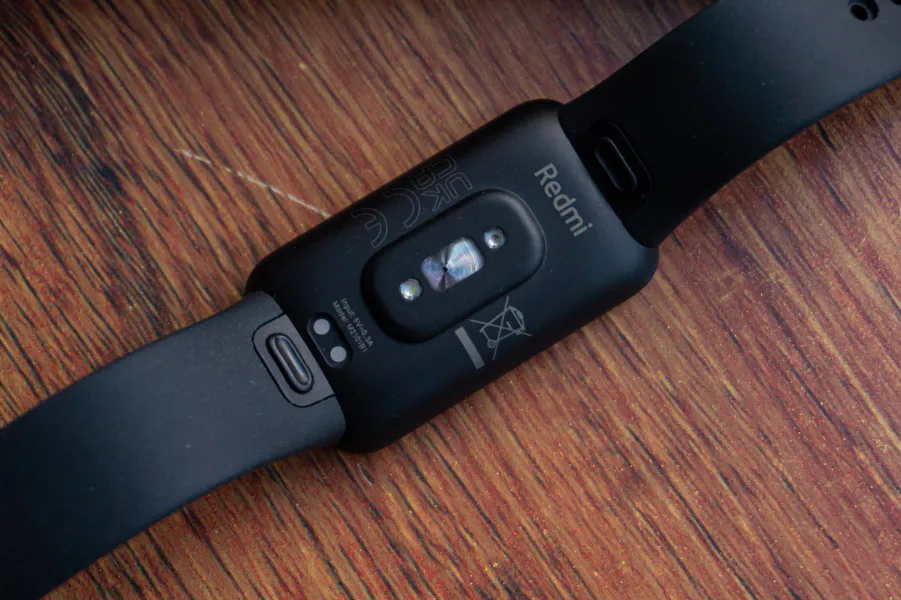 The band is removable. So far, there’s only black color. Its fastening is non-standard — with buttons on both sides and to remove it, you need to hold the button and pull the strap. It is made of thermoplastic polyurethane (TPU) with a pleasant and soft to the touch coating. In fact, it is very similar to the bundled Mi Smart Band strap of the latest generations with an identical button, so there are no surprises in this regard. A comfortable and time-tested solution. The surface of the leather is not irritating, and an adjustable length of 130-220 mm is enough for almost any wrist.
The band is removable. So far, there’s only black color. Its fastening is non-standard — with buttons on both sides and to remove it, you need to hold the button and pull the strap. It is made of thermoplastic polyurethane (TPU) with a pleasant and soft to the touch coating. In fact, it is very similar to the bundled Mi Smart Band strap of the latest generations with an identical button, so there are no surprises in this regard. A comfortable and time-tested solution. The surface of the leather is not irritating, and an adjustable length of 130-220 mm is enough for almost any wrist.
Read also: Xiaomi IMILAB KW66 smartwatch review: Lots of Style, Few Features, Good Battery Life
Display
The display of the fitness tracker has a diagonal of 1.47″. It has an AMOLED matrix with a resolution of 368×194 pixels. The final pixel density is at 282 ppi, the claimed maximum brightness can reach 450 nits, and the NTSC color coverage is 100%. The screen itself is, of course, touch-sensitive.
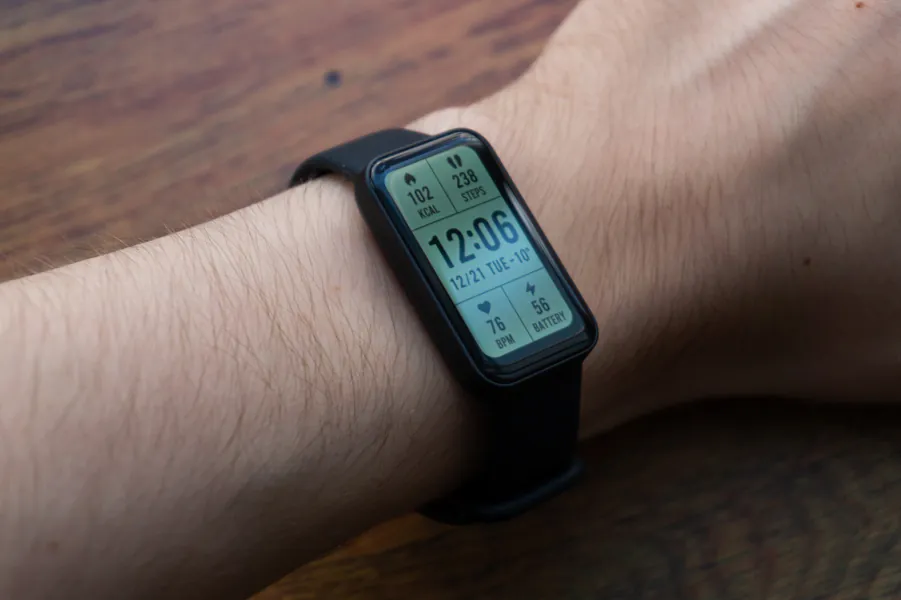
It’s quite enough for comfortable use of the device. The elements on the screen do not seem small, the fonts are also perfectly normal size. As I mentioned earlier, the display occupies 66.7% of the front panel.
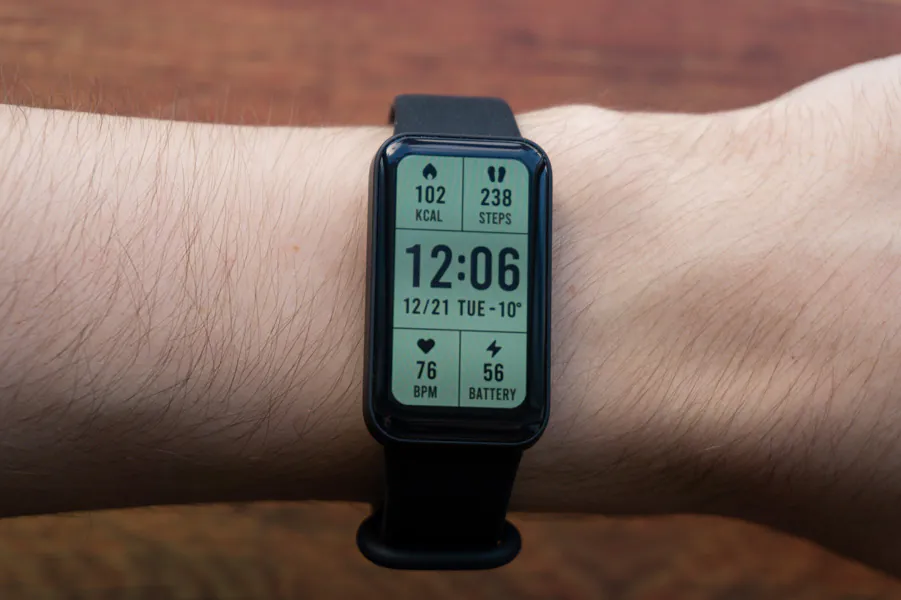
The bezels around the screen are not the thinnest, but you rarely – if ever – see them thanks to the AMOLED display and mostly dark UI.
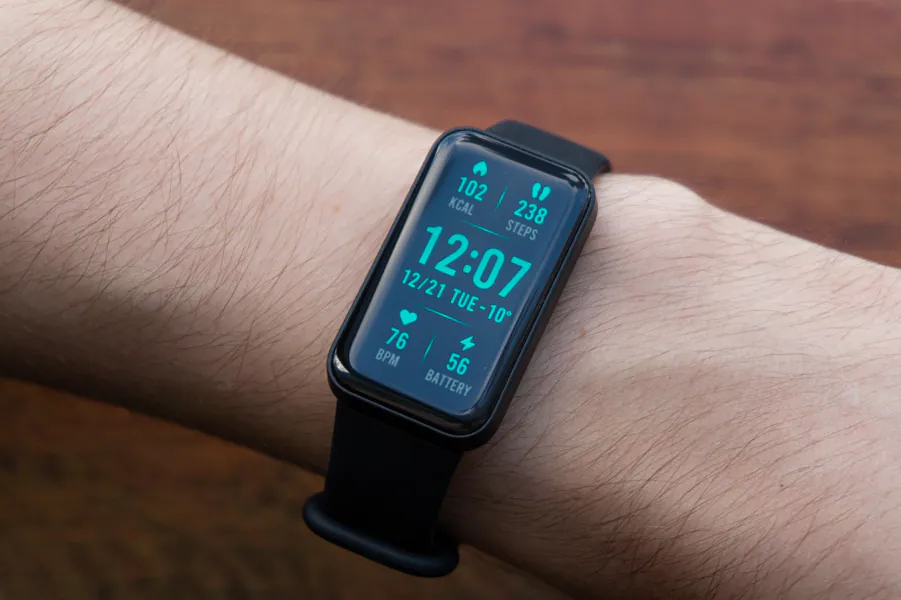 As for the quality of the picture itself, it is decent. The screen is very bright, contrasting and saturated. On the street everything is legible, and the viewing angles are also very good. White color acquires a slight bluish tint at a certain angle, but it is not critical at all.
As for the quality of the picture itself, it is decent. The screen is very bright, contrasting and saturated. On the street everything is legible, and the viewing angles are also very good. White color acquires a slight bluish tint at a certain angle, but it is not critical at all.
An interesting point is related to adjusting the brightness of the Redmi Smart Band Pro display. Unlike most inexpensive fitness trackers, the manufacturer has equipped this one with a light sensor and therefore the it independently adjusts the brightness of the screen depending on the ambient lighting. In the settings there are 5 levels of brightness in total.
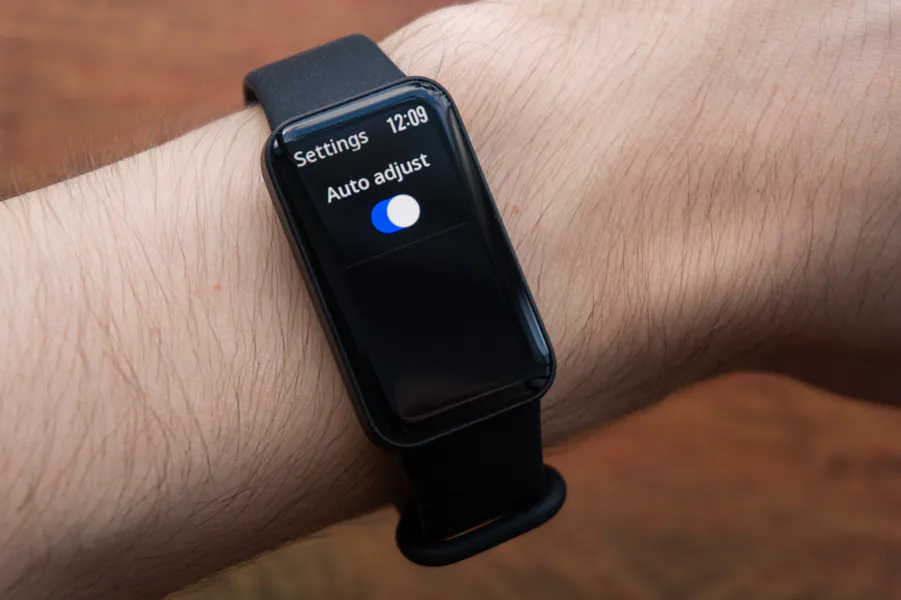 This auto-adjustment is not quick, but it is relatively accurate. What is unusual is that it is gradual. For example, the 3rd level is used in a normal situation, and with a sudden change it will first increase to the 4th level and only then to the 5th.
This auto-adjustment is not quick, but it is relatively accurate. What is unusual is that it is gradual. For example, the 3rd level is used in a normal situation, and with a sudden change it will first increase to the 4th level and only then to the 5th.
There are two ways to activate the display: by touching the screen or by lifting/ turning the wrist, because there is no physical power button here. Tapping on the screen works, although not instantly. The second method also works relatively accurately, but a little slower than the first. Although sometimes the display can turn on for no reason.
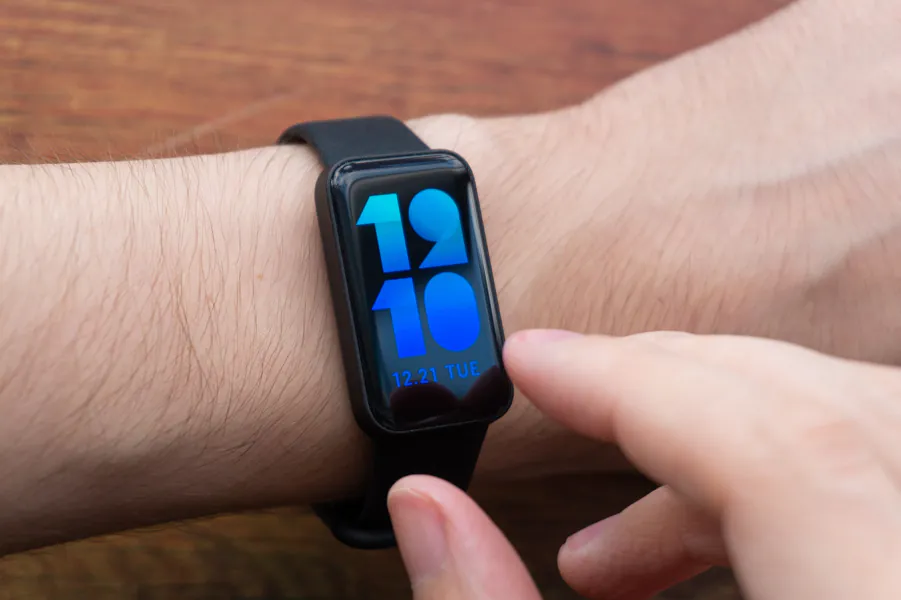
The screen turns off automatically depending on the wrist movement, but it can also turn off by itself after a set number of seconds. By default, it is 5 s, but you can set it to 10/15/20 s. Among other things, you can cover the display with the palm of your hand to switch it off.

Plus, one of the main features of this display is AoD. That is, the display can display information continuously (or on a schedule). Battery consumption in this case will increase, but nevertheless .
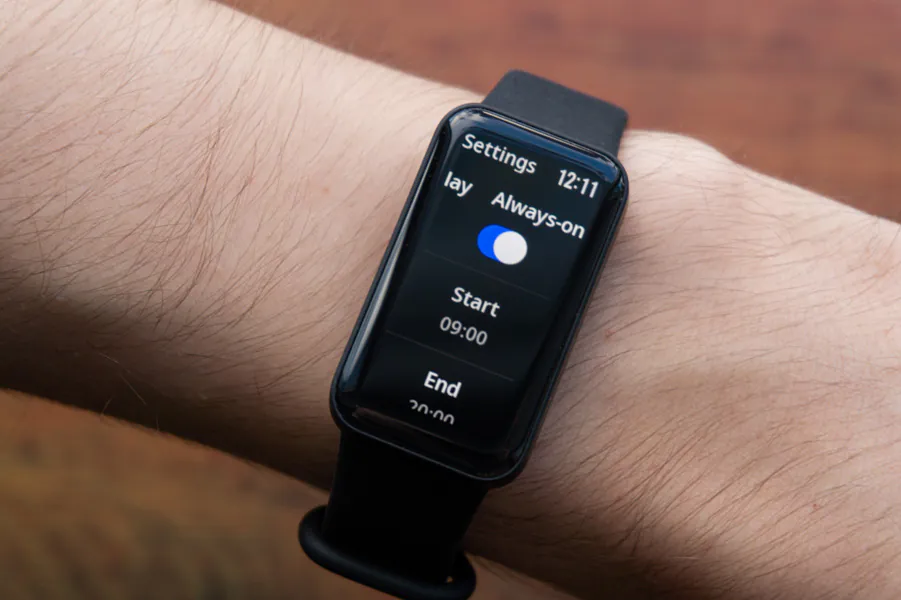
At the same time, the watch face is dynamic and in this mode it changes from the standard to a minimalistic one with only the current time with the day of the week and the date. Periodically, these numbers are shifted by several pixels in order to avoid burnout. With a simple touch, you can return to the usual watch face, which after 5 seconds will change again to a simplified version.
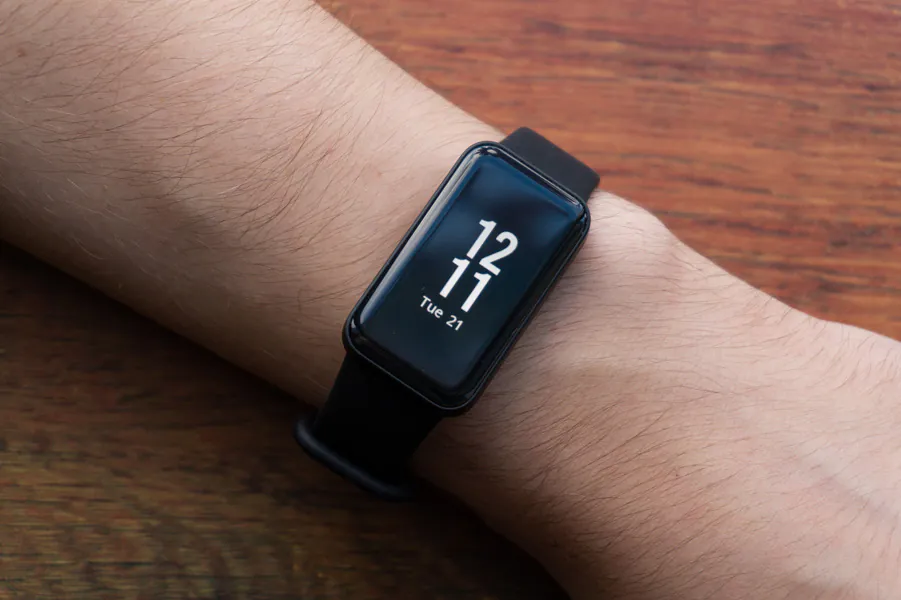 According to the display settings, I have already told everything in principle: there is a dial change, brightness (auto-adjustment or one of five levels), auto-lock time (5/10/15/20 s) and an active screen with a work schedule. In the latter case, this is a fairly profitable option, since you can disable this function, for example, at night in order to save battery power.
According to the display settings, I have already told everything in principle: there is a dial change, brightness (auto-adjustment or one of five levels), auto-lock time (5/10/15/20 s) and an active screen with a work schedule. In the latter case, this is a fairly profitable option, since you can disable this function, for example, at night in order to save battery power.
Battery life
The Redmi Smart Band Pro has a lithium polymer battery with a capacity of 200 mAh – so slightly above average. The manufacturer promises that with typical use, the tracker can last up to 14 days on a single charge, and with less intensive use it can survive up to 20 days. But in each individual case, the battery life will vary due to many other factors. In general, you can count on at least 8-10 days of the most active use.
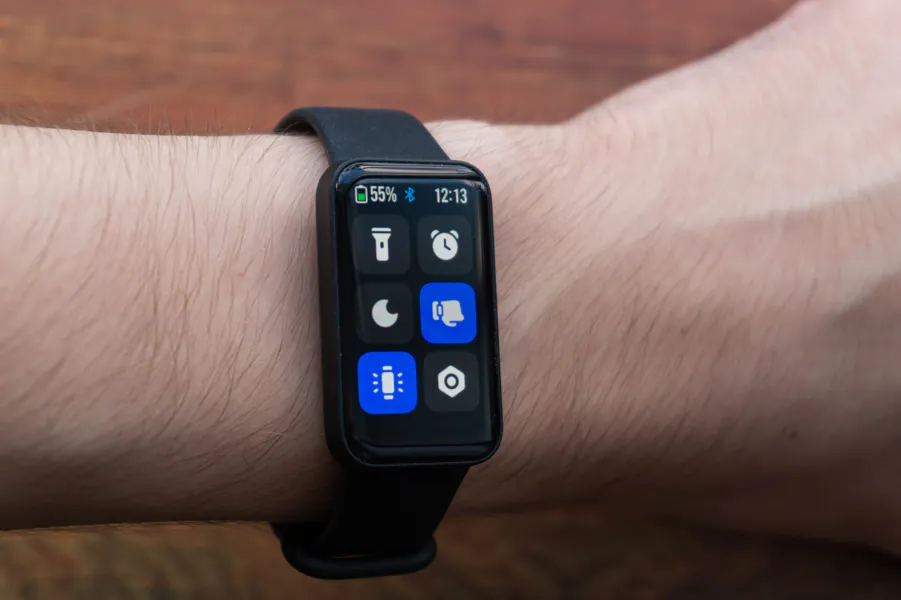
I used the Redmi Smart Band Pro with automatic display brightness enabled, without AoD, with sleep tracking, constant pulse monitoring every 30 minutes, regular notifications, daily alarm clock, automatic measurement of blood oxygen levels during sleep with a frequency of 30 minutes, round-the-clock monitoring of stress levels, activation by turning the wrist from 9:00 to 21:00, but without training. In this mode of operation, my tracker lost only 6-7% per day. These are decent results in my opinion and just one charge is enough for almost two weeks of use. But again — this is purely individual.

To charge the tracker you can use a half-meter USB cable with a pair of contacts, which, thanks to magnets, are attached to the contacts on the back of the tracker. The solution is quite typical for wearable devices.
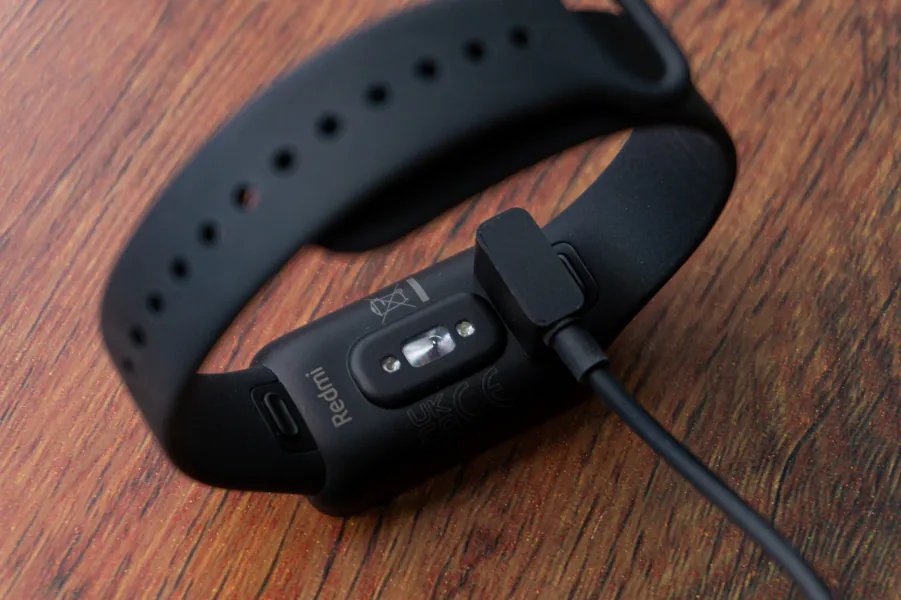
During charging, the screen turns from a vertical orientation to a horizontal one, where the charging process and the current time are clearly visible, just like the Xiaomi Mi Smart Band 6. Charging itself takes about an hour from the computer’s USB port.
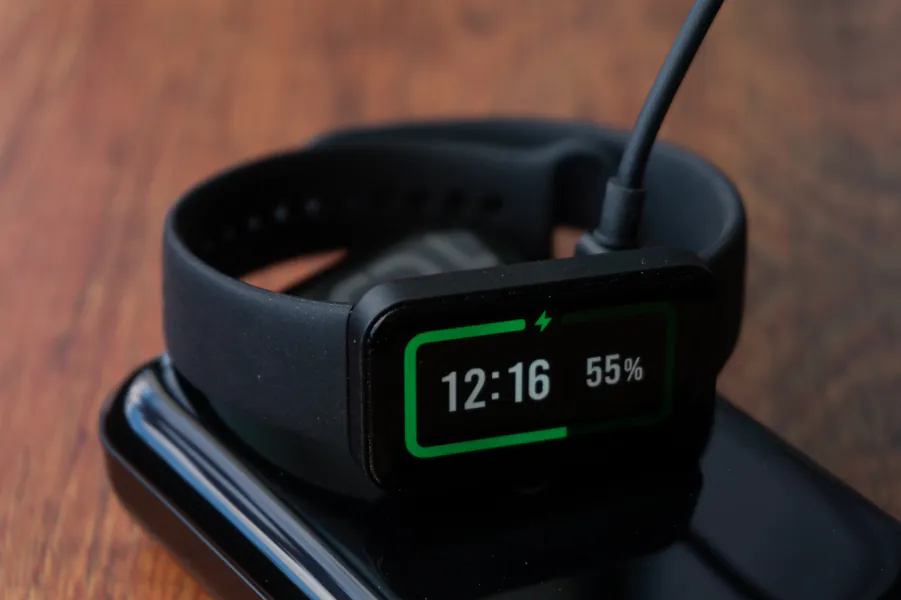
Read also: Huawei Watch GT 3 Elite review: Sporty elegance
UI and controls
The controls of the Redmi Smart Band Pro are entirely carried out through the touch screen, because there are simply no physical controls. And this means that you will not be able to completely turn off the tracker. Navigation through the interface is carried out by swipes and touches: a single touch to choose, swipe to the right to bo back, in some places you can use a long press.
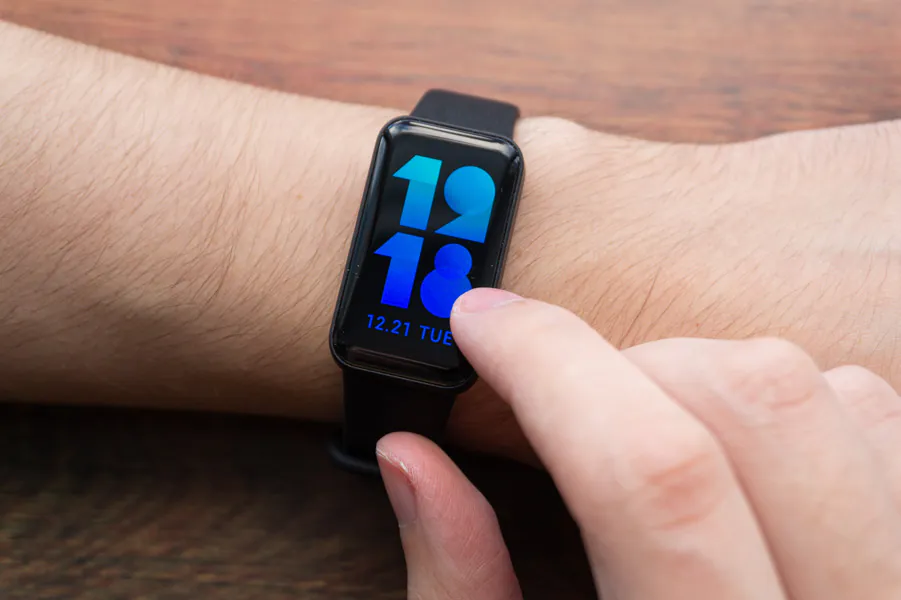 The home screen is the a watch face, obviously. All faces are quite simple. A long hold brings up a menu with other watch faces. There is a name at the top of the screen, and navigation through the list is done by swiping up/down.
The home screen is the a watch face, obviously. All faces are quite simple. A long hold brings up a menu with other watch faces. There is a name at the top of the screen, and navigation through the list is done by swiping up/down.
Swipe down opens the list of recent notifications, swipe up to the main menu with all available apps. But before we get to them, I’ll tell you about the so-called widgets. Switching between them is done by swiping left/right from the home screen. By default there are: pulse, blood oxygen level, weather, training, statistics and quick access to some functions. At its core, all of the above widgets are simplified versions of the same apps with only basic information/options.
The list of applications is as follows: workout, activity, statistics, pulse, SpO2, sleep, stress, breathing, cycles, weather, music, camera, alarm clock, stopwatch, timer, notifications, device search, flashlight, settings. That is, some of them are partially duplicated in widgets, as you could see earlier.
There are several main activities in the training menu: running on the street, walking, treadmill, trekking, trail running, cycling, exercise bike, free activity, swimming pool, orbitrek, yoga, rowing machine, skipping rope, hiking, HIIT (high-intensity interval training) and curling. There are also two buttons: add and delete. That is, you can add other workouts to this menu, which in turn are divided into categories. In total, there are more than a hundred of them. The menu of a running workout looks pretty standard: the current time, pulse, connection to a smartphone, calories burned, there is a playback control widget (music) plus other specific activities.
Activity: recordings of past workouts, statistics: all user activity for the last 24 hours, pulse: statistics with all pulse values for the last 24 hours, SpO2: blood oxygen level overnight and the ability to make manual measurement, sleep: detailed sleep statistics, stress: stress level for the last 24 hours, breathing: breathing exercises with duration and intensity settings, cycles: women’s health, weather: current weather and forecast for the next 4 days, music: playback control (pause, forward, backward, volume control), camera: the shutter button and timer for remote control of the smartphone camera (the camera app must be running). An alarm clock, a stopwatch and a timer are obvious things, but I note that alarm clocks can only be turned on/off. Notifications: duplicate the notification list, search for a device: search for a smartphone with a sound notification, a flashlight: the screen of the tracker will glow white at maximum brightness.
In the settings, you can change the watch face, brightness, adjust the Do not disturb mode, set automatic training detection. It is also possible to set a digital code (password) to the tracker, enable notification of disconnection from the smartphone, there are also other screen settings and vibration response, reset/restart the device and other system information.
Read also: Neatsvor X600 robot vacuum cleaner review: Be smart about your vacuuming
Xiaomi Wear app
To connect and configure Redmi Smart Band Pro, you need to install a relatively new application called Xiaomi Wear for Android or Xiaomi Wear Lite for iOS, which differ in some functionality. In the iOS version with the Lite prefix, predictably, some functions are not available. I don’t know exactly which ones, but from experience with other fitness trackers paired with iOS devices, I can assume that it will be impossible to set your own image for a custom watch face, most likely music playback and camera control will be unavailable.
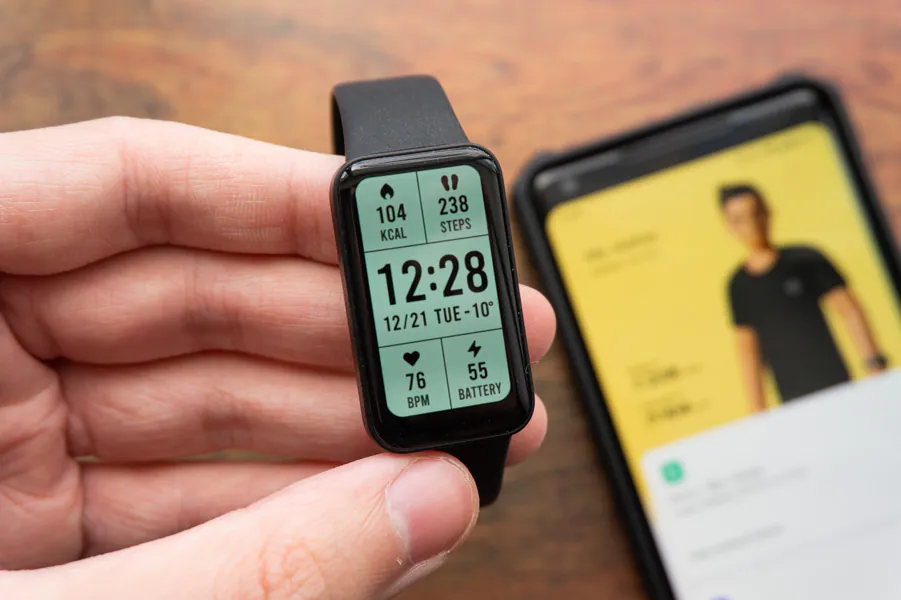
Android:
iOS:
The app has a rather neat UI, but it is not perfect either. So far, there are issues with fonts, and word hyphenation. The connection is simple and clear, but first you will have to set up a personal profile.
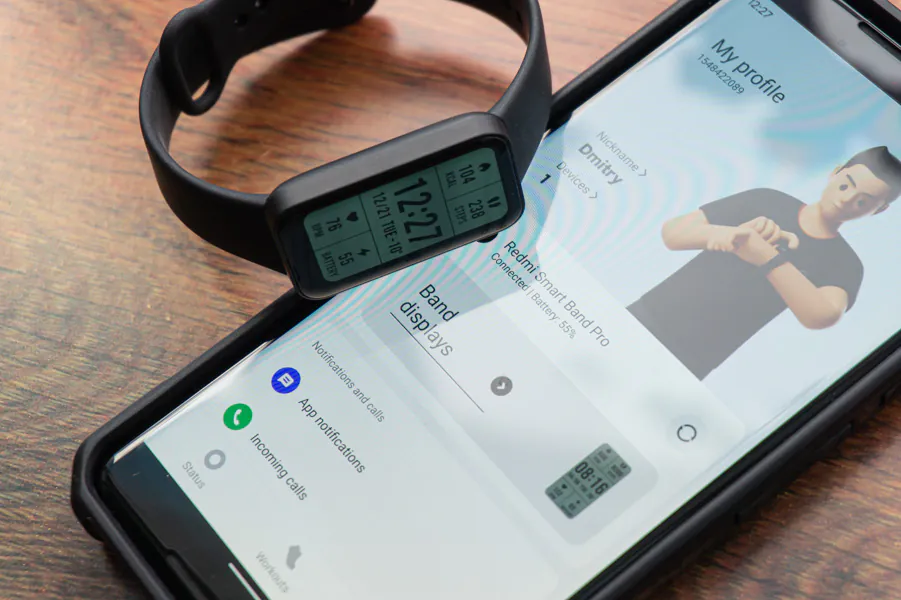 The app is divided into three main tabs: Status, Training and Profile. The first one contains cards with the summary of the user’s daily activity and condition. You get detailed statistics, where, among other things, you can view activity for other days/weeks /months. The cards themselves can be sorted in any convenient order, and by clicking on the gear in the expanded window, you can quickly go to the settings of a specific category.
The app is divided into three main tabs: Status, Training and Profile. The first one contains cards with the summary of the user’s daily activity and condition. You get detailed statistics, where, among other things, you can view activity for other days/weeks /months. The cards themselves can be sorted in any convenient order, and by clicking on the gear in the expanded window, you can quickly go to the settings of a specific category.
The second training tab contains a brief summary of the user’s last workout. You can run one of four workouts: running outside, walking, cycling and treadmill. The first three, when launched through the app, can use the smartphone’s GPS module and show it on the map at the end of the workout, but for this you will need to take your smartphone with you. At startup, the training is also duplicated on the tracker screen.
The last tab contains the settings of the personal profile and the device itself. Here you can view the connection status and battery level of the Redmi Smart Band Pro, change the watchface, configure notifications, health monitoring, apps, system options and firmware updates. I won’t describe each item separately, I will simply attach screenshots below, but I will focus on the most interesting points.
The menu with watch faces is divided into two tabs: on the device and downloadable. The first contains already pre-installed and already downloaded faces, from here they can also be applied, deleted and edited, if such an opportunity exists. Additionally, you can download about 50 more faces in different styles: digital and analog, simple and multifunctional.
Separately, there are custom watch faces with photos. There are 4 styles in total and each has 5 different types with different information. You can choose the cover yourself by installing any photo and cropping it with built-in tools. In addition, there is a slideshow mode. This way you can add up to 8 different images that will constantly rotate.
In the notification menu, you need to select the apps from which they will arrive on the bracelet. It can be any app installed on a smartphone, but not every app will its their own icon. There are several additional options for notifications: show on the lock screen and turn on the screen. If everything is clear with the second one (when a notification is received, the bracelet screen will turn on), then the first one is responsible for receiving notifications when the smartphone screen is turned on. The active toggle switch disables the duplication of messages on the tracker if the smartphone screen is turned on at the same time.
As you already know, there are a lot of workouts here and you can add them to the list not only from the tracker itself, but also from the companion app. They are divided into the following categories: basic, water sports, outdoor training, training, dancing, martial arts, ball sports, winter sports, recreational sports and more. Below is a complete list of available activities.
The user also has the opportunity to slightly adjust the UI of the tracker by changing the widgets and markup. There can be up to 7 different widgets that swipe left and right, but you can remove unnecessary ones and/or replace them with others by adding, for example, a sleep, stress or music widget. In addition, the markup of applications is changing and instead of the standard list, you can choose a grid of two applications in a row instead of one.
The app, let me remind you, can sync with the Strava service and Apple Health. In addition, it is possible to transfer all your past activity from the Mi Fit application (convenient if you have used it before) and look at the user manual.
Verdict
The Redmi Smart Band Pro is a cross between an advanced fitness tracker and an inexpensive smartwatch. The main features of the device include a universal and muted design, a relatively large display with auto-brightness adjustment, good battery life and rich functionality, especially in terms of sports.
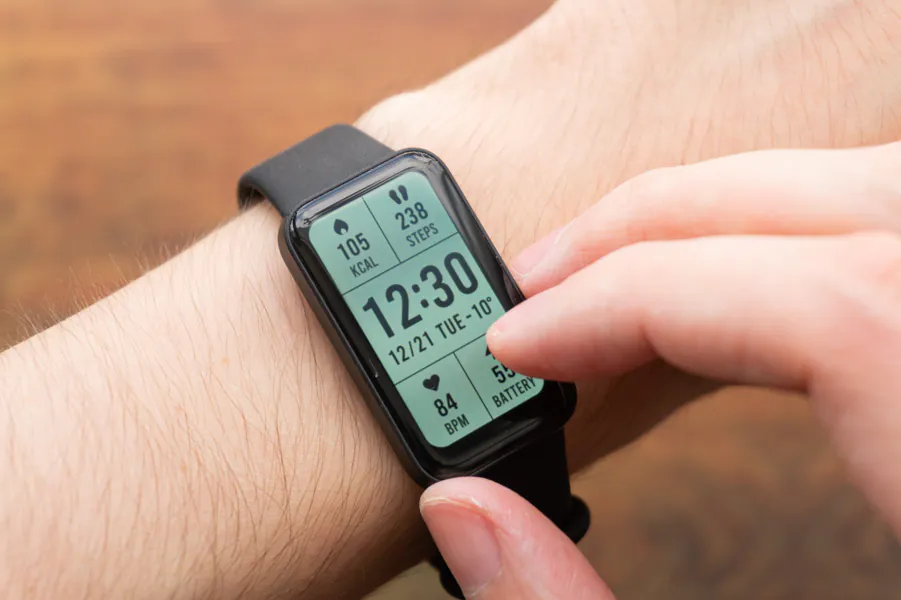
In fact, it has only a few advantages over the Xiaomi Mi Smart Band 6: a more comfortable display in terms of information perception (and auto brightness) and support for a much larger number of sports modes and other activities (about 115 versus 30).
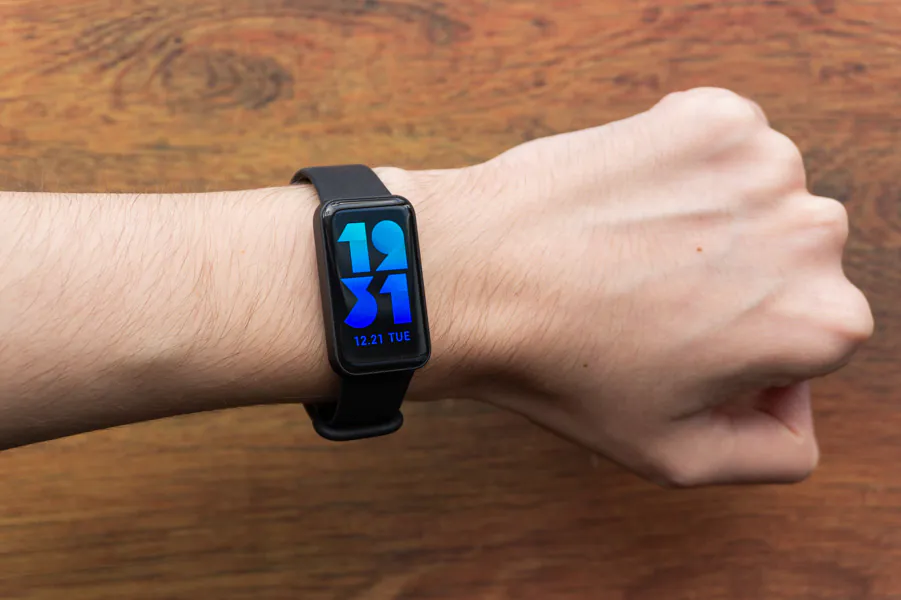
Although do not forget about the existence of a slightly more expensive Mi Smart Band 6 NFC. The Redmi Smart Band Pro can’t be used for contactless payments, but this is probably the only drawback of the new model.
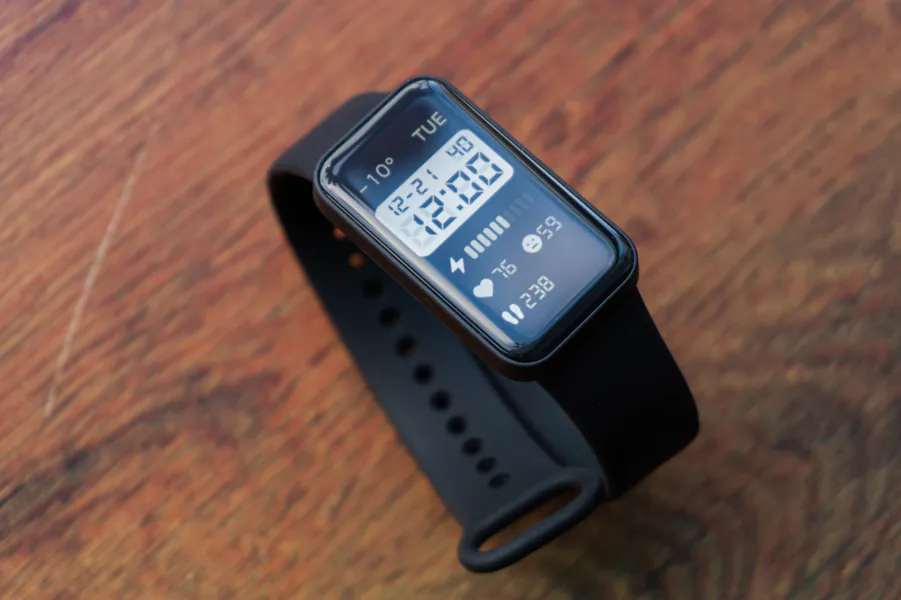
Read also:
- Xiaomi 11T review: Alternative to a Flagship?
- Xiaomi 11T Pro review: Flagship smartphone with super fast charging



